WEST COAST NUT
APRIL 2023 ISSUE
SPOTLIGHT: SPECIAL SECTION: HANDLING AND PROCESSING
SEE PAGE 18
IN THIS ISSUE:
RODENT CONTROL COSTS COULD CLIMB SEE PAGE 4
RAINS PROMPT CONSIDERATIONS FOR GROUNDWATER RECHARGE SEE PAGE 56
IDENTIFYING AND MITIGATING REPLANT CHALLENGES IN ALMOND ORCHARDS SEE PAGE 12
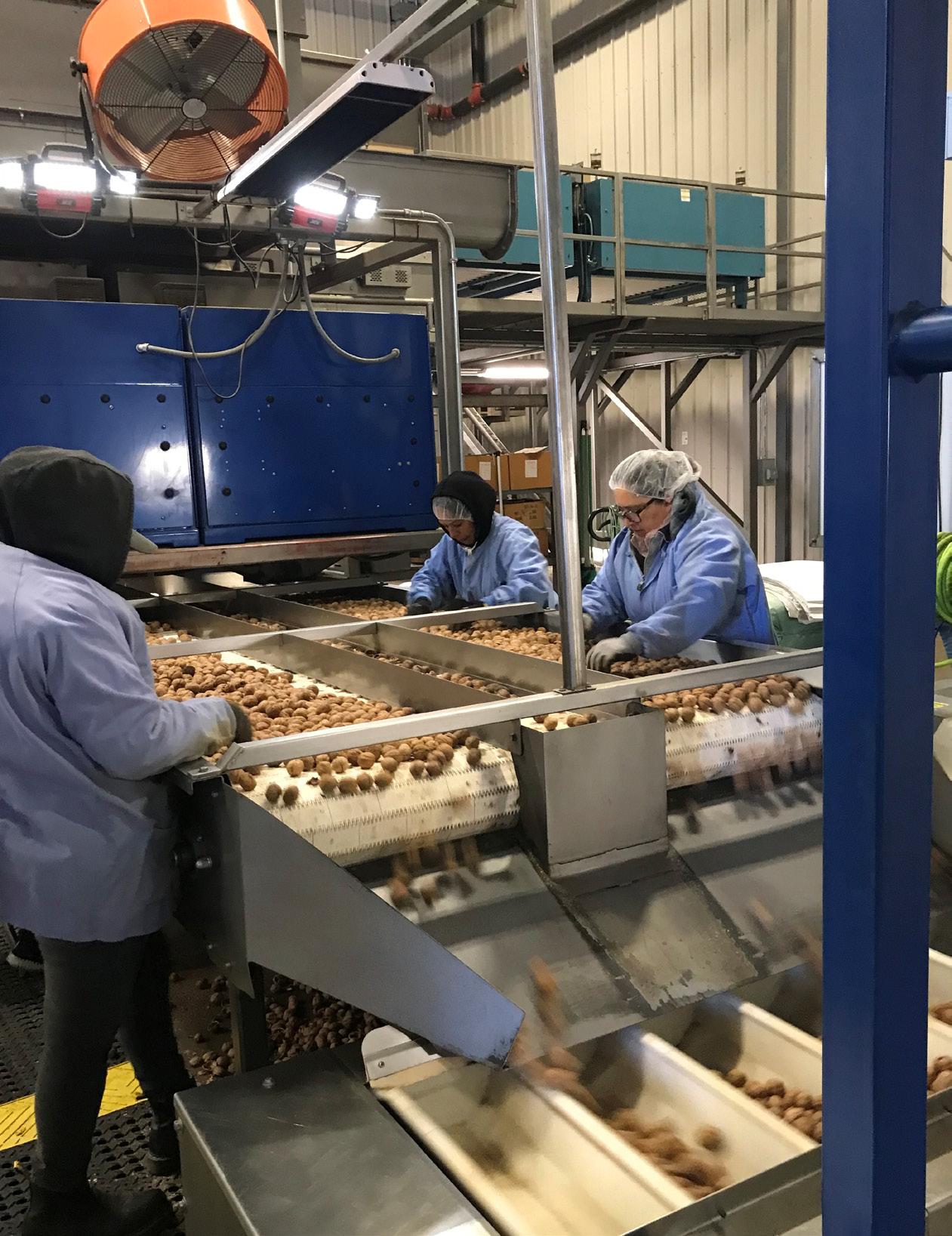 BY REAL CALIFORNIANS
BY REAL CALIFORNIANS
PUBLICATION
Photo by Omega Walnut
IN THE HEART OF
PRODUCED
TOP ARTICLES FROM PREVIOUS ISSUES
Delay Planting New Orchards Until the Soil “Flows”
Given the series of wet storms that pounded most of California during March, planting new pistachio orchards in heavy soils may not be possible as early in the spring as growers would like.


“Those orchards are a long-term investment. Make sure you give them a good start,” Reid Robinson, CEO of Sierra Gold Nurseries, said.
Little Things Matter in Navel Orangeworm Management
USDA-ARS Entomologist Joel Siegel reminded growers at the annual Pistachio Day that they need to step up their insect and water management programs to ensure nut quality. Reducing pistachio nut damage from 1% to 0.5%, however, will require exponentially more money and e ort than reducing damage from 2% to 1%. And the little things will count more than ever.
Environmental Stressors May Require Management Changes
Pistachio trees are known to have the ability to withstand environmental stress, but their potential yields and quality of nuts they produce can be compromised by drought, ooding, unseasonable temperatures and salinity.
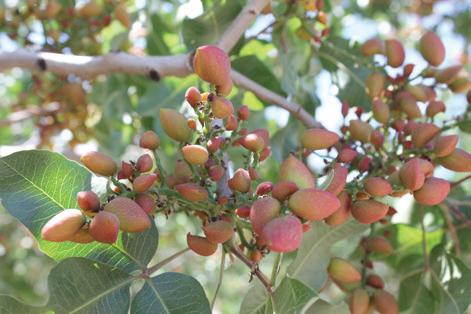
IN CASE YOU MISSED
IT
To subscribe scan the QR code or visit myaglife.com/subscribe Don’t miss a single article Subscribe Today receive them directly to your inbox Exclusive Articles Twice a Month
Award Winning Editorial By the Industry, For the Industry
Publisher: Jason Scott
Email: jason@jcsmarketinginc.com
Editor: Marni Katz
Email: marni@jcsmarketinginc.com
Associate Editor: Cecilia Parsons
Email: cecilia@jcsmarketinginc.com
Production: design@jcsmarketinginc.com
Tel: 559.352.4456
Fax: 559.472.3113
Almond Board of California
Contributing Writer
Vicky Boyd
Contributing Writer
Kathy Coatney
Contributing Writer
Roger Duncan
UCCE Pomology Advisor, Stanislaus Count
Roger A. Isom President/CEO, Western Agricultural Processors Association
Julie R. Johnson
Contributing Writer
Ragab Khir Project Scientist, Department of Biological and Agricultural Engineering, UC Davis
Theresa Kiehn
President/CEO, AgSafe
Rich Kreps CCA, SSp., Contributing Writer
Mitch Lies
Contributing Writer
Catherine Merlo
Contributing Writer
Franz Niederholzer
UCCE Orchard Systems Advisor, Colusa, Sutter and Yuba Counties
Jaime Ott
UCCE Orchard Crops Farm Advisor, Tehama, Shasta, Glenn and Butte Counties
Zhongli Pan Adjunct Professor, Department of Biological and Agricultural Engineering, UC Davis
Rebecca Scott J.D., Partner, JWAGronomics, LLC
Eryn Wingate CCA, Tri-Tech Ag Products, Inc.
Cameron Zuber
UCCE Orchard Crops Farm Advisor, Merced and Madera Counties
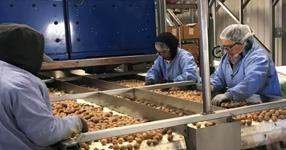
Special Section: Handling and Processing
Jhalendra Rijal UCCE Integrated Pest Management Advisor, Stanislaus County
Mohammad Yaghmour UCCE Area Orchard Systems Advisor, Kern County
Yolo and Solano
Steven Koike Tri-Cal Diagnostics
Web: www.wcngg.com View
The articles, research, industry updates, company profiles, and advertisements in this publication are the professional opinions of writers and advertisers. West Coast Nut does not assume any responsibility for the opinions given in the publication.
SPOTLIGHT:SpecialSection:HandlingandProcessing
4 Rodent Control Costs Could Climb 8 Farm Advisor Perspective: Areas to Focus on for the 2023 Almond and Walnut Crops 12 Identifying and Mitigating Replant Challenges in Almond Orchards 18 Tree Nut Industries Take Varying Approaches to Achieving Nut Quality 22 Processors Take Advantage of Technology to Deliver Superior Walnut Products 26 CASP 2.0: The Re-Envisioning of ABC’s Stewardship Platform 30 SmartProbe Technology for Early Post-harvest Insect Pest Detection and Environmental Monitoring 36 Almond Co-Product Value in Food Ingredients, Renewable Fuels 40 Employer Checklist for the New Year 44 Walnut Conference Panelists Serve Up Irrigation Scheduling Advice 48 Canine Assisted Vole Scouting Shows Promise 52 View from the Top: What the Nut Industry Wants In the 2023 Farm Bill 56 Recent Rains Prompt Considerations for Groundwater Recharge Options 62 Analyzing the 2023 Trade Forecast 64 Cal/OSHA Appeals Board Decision on Water Requirements for Heat Illness 66 How Growers Can Adapt to Limited Resources and a Changing Climate 70 California Water Law Update 72 Farm Advisor Profile: Growers Really Ought to Meet Ott Contributing Writers & Industry Support UC Cooperative Extension Advisory Board Surendra K. Dara Director, North Willamette Research and Extension Center Kevin Day County Director/UCCE Pomology Farm Advisor, Tulare/Kings Counties Elizabeth Fichtner UCCE Farm Advisor, Tulare County Katherine Jarvis-Shean UCCE Area Orchard Systems Advisor,
IN
ISSUE
THIS
our ePublication on the web at www.wcngg.com
an eye on improving quality, returns and efficiency, this special
several articles
See page 18-39 With
section features
April 2023 www.wcngg.com 3
RODENT CONTROL COSTS COULD CLIMB
EPA
PROPOSAL WOULD
SUBSTANTIALLY RESTRICT RODENTICIDE USE AND REMOVE IMPORTANT IPM TOOLS
 By VICKY BOYD | Contributing Writer
By VICKY BOYD | Contributing Writer
As part of a regular 15-year pesticide review, the U.S. Environmental Protection Agency has proposed several measures that could significantly affect how growers can apply rodenticides. At the same time, costs associated with using the remaining products will likely increase with the additional proposed application requirements, said Roger Baldwin, UCCE human-wildlife conflict specialist.
“There will be pretty substantial restrictions on broadcast and spot treatments,” he said. “I’m not sure [growers] used those that much for ground squirrels. Bait stations will still be allowed for ground squirrels, but they’re going to eliminate use of anticoagulants more or less for gopher control.”
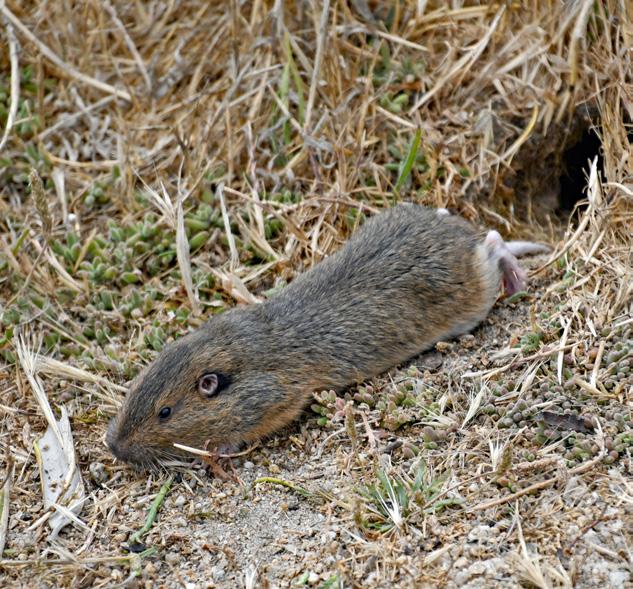
Included in the EPA’s proposal are requiring carcass surveys after application, prohibiting rodenticide use in habitat frequented by endangered species and requiring APF10 respirators and chemical-resistant gloves for applications.
Other Restrictions
A handful of other rodent control methods, including carbon monox-
ide injected into burrows and burrow fumigants, are not part of the EPA’s interim proposal.
Andrew and Ryan Vieira, who operate Vieira Farm Services in Turlock, offer rodent control using carbon monoxide as part of their custom application business. The two became interested in rodent control when they were in college looking for a side job, and carbon monoxide had a good worker safety profile if used correctly, they said.
“Now we have guys interested in [our rodent services] because it’s less hassle for them,” said Andrew Vieira, who’s also a PCA for Helena Agri-Enterprises.
The first application typically knocks down the rodent population, and a follow-up treatment lowers numbers even further, he said.
“Some people have us do it on a monthly or bi-monthly plan,” Ryan Vieira said. “In our area, gophers are active year-round. Ground squirrels will pick up more once it gets warmer.”
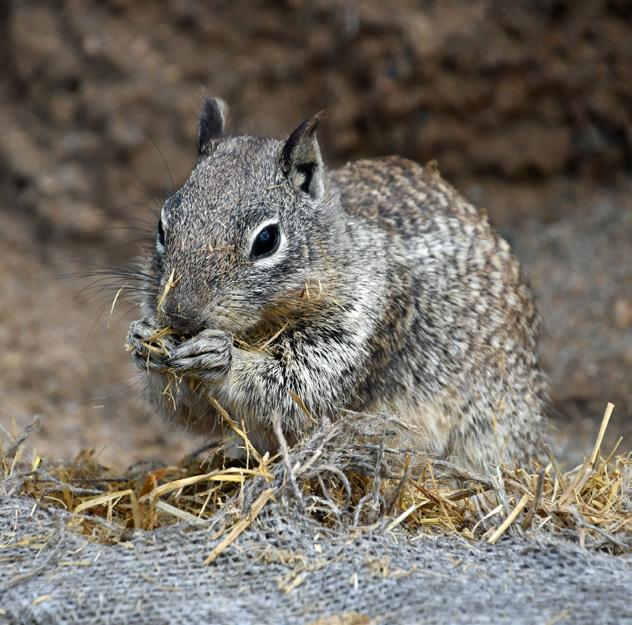
But even carbon monoxide pest control devices have fallen under increased regulation.
In October 2022, the newly adopted Section 6695 of Title 3 — California
Code of Regulations limits use of these devices to businesses that perform pest control for hire. It also prohibits their use inside buildings or barns and sets buffers around buildings where the devices can’t be used. In addition, the devices, which must bear a U.S. EPA establishment number, can only be used
ContinuedonPage6
Gophers frequently are easy to trap, and the method often pencils out for many growers (all photos by R. Baldwin.)
California ground squirrels are a ubiquitous rodent pest of nut orchards (photo by Vicky Boyd.)
4 West Coast Nut April 2023
Many rodenticide labels now require bait stations for rodenticide application to reduce potential primary non-target exposure (photo by R. Baldwin.)
When cloudy, grey skies appear during bloom, Fontelis® fungicide will protect your almond trees from devastating full-bloom diseases like brown rot blossom blight and shothole. Then, from petal fall through five weeks past petal fall, Fontelis provides excellent activity on jacket rot, Anthracnose and Alternaria. The single active ingredient (FRAC Group 7) gives you the flexibility to rotate with, or tank mix with, other modes of action. With Fontelis, you and your trees are protected under any forecast.
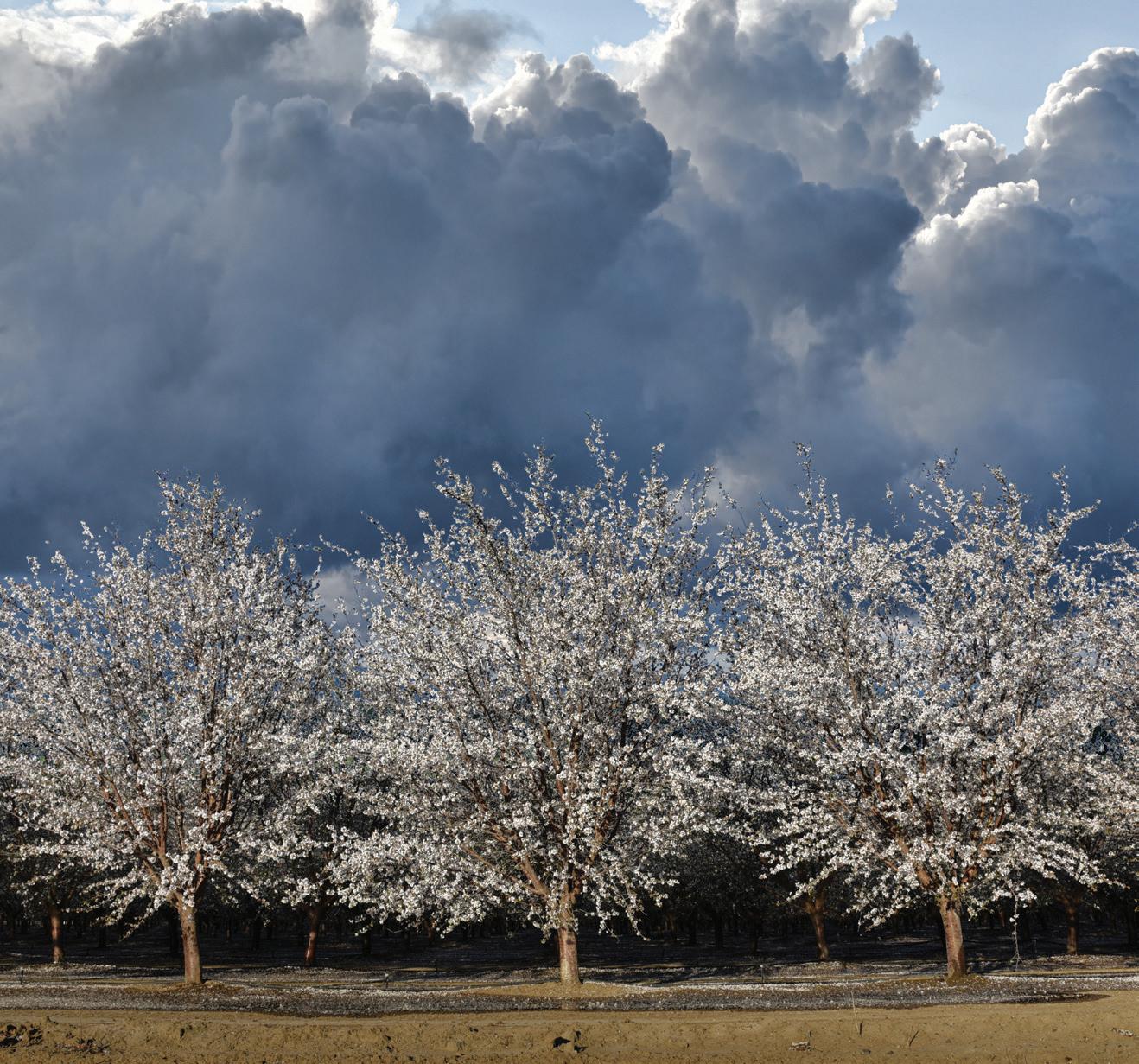
Today’s forecast: 100% protection
us at corteva.us ®™Trademark of Corteva Agriscience and its affiliated companies. Fontelis® is not labeled for use on peanuts in California. Fontelis is not registered for sale or use in all states. Contact your state pesticide regulatory agency to determine if a product is registered for sale or use in your state. Always read and follow label directions. ©2023 Corteva
Visit
for burrowing rodent control.

The EPA also revised a rule in 2017 that prompted the California Department of Pesticide Regulation to change its pesticide applicator certification program. Current holders of private applicator certificates will have to retest when their licenses come due and will not be able to renew by completing the appropriate continuing education classes.
The new private applicator exam offers a burrowing vertebrate pest fumigation certificate option. The retesting requirement is being phased in between 2024 and 2026 based on last names.

Potential Loss of IPM Tools

For nut producers, ground squirrels, pocket gophers and meadow voles (also called meadow mice) are the main burrowing rodent pests. Rodenticides, which involve chemically treated bait, are part of an overall integrated pest management program for rodents that also includes trapping and habitat modification, Baldwin said.
“Rodenticides knock populations down, and then you use other tools like trapping to keep them at a low population,” he said. The success of alternate rodent control also varies with species.
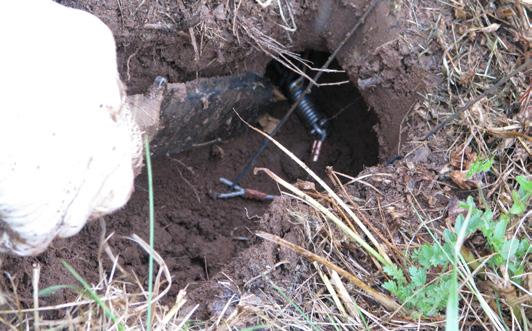
Gophers, for example, are fairly easy to trap, and this method often pencils out, Baldwin said. Managing ground squirrels, on the other hand, may be more difficult without rodenticides. Fumigation followed by trapping could be one alternative, but success varies depending on the squirrel population and soil type. The best time to fumigate is when the burrows are active and the soil is moist.
“It could definitely be more expensive to try to manage ground squirrels without rodenticides,” he said. “You could use a combination of fumigation and trapping, but the question is how much is that going to cost?”
Voles are more of a spotty rodent pest and aren’t as ubiquitous as gophers or ground squirrels in nut orchards, Baldwin said. Although costly, exclusion methods around tree trunks help prevent voles from girdling young trees.
Habitat modification, which includes keeping about a 3-foot radius around tree trunks free of vegetation and keeping cover crops mowed low to the ground, tends to make orchards less attractive to voles.
“But when vole populations explode, that wouldn’t be enough to keep them under control,” he said. That’s when growers turn to rodenticides since trapping voles isn’t usually successful.
EPA’s Proposal in a Nutshell
The EPA published the proposed interim decisions, as the proposed rodenticide rule changes are known, in the Federal Register in November 2022 with a 75-day comment period that ended February 13.
Baldwin said he didn’t expect the EPA to extend the comment period, based on what he’s heard from outside sources. But he said those with concerns could still voice them to their congressional representatives.
The proposals’ exact impacts on producers also will depend on how the agency writes the final rules once they review and respond to public comments, Baldwin said.
The proposed changes cover all 11 currently registered rodenticides. There are three first-generation anticoagulants: chlorophacinone, diphacinone and warfarin. It also includes four second-generation anticoagulants: brodifacoum, bromadiolone, difethialone and difenacoum. In addition, it covers four non-anticoagulants: zinc phophide, strychnine, bromethalin and cholecalciferol.
Of these, only first-generation anticoagulants, zinc phosphide and strychnine, are labeled for use against field rodents, such as ground squirrels, pocket gophers, voles, rats and mice, found in agricultural fields. But not all the active
ContinuedfromPage4
6 West Coast Nut April 2023
Depending on the rodent species, trapping may be an integral part of an integrated pest management program.
ingredients are labeled for all rodent species.
The EPA proposed making all 11 rodenticides restricted-use products, requiring prior training and certification before application. Because most already are considered restricted use against field rodents by CDPR, Baldwin said he expected to see few changes on that front.
“In California, most had already been restricted use,” he said. “For other states that didn’t have any state restricted use, that might change how they manage these products moving forward.”

Under the proposal, rodenticide labels also will require use of APF10 respirators and chemical-resistant gloves by applicators. This is a substantial change for some rodenticide labels and will require applicator fit testing.


Ultimately, the respirator requirement will make rodenticide applications more physically challenging, Baldwin said.
For the rodenticides used against field rodents remaining on the market, the EPA plans to require carcass surveys beginning on the third or fourth day after application, depending on the product. Should users find a carcass, they would have to collect it and dispose of it properly to prevent further exposure to non-target animals. In addition, they would have to report any non-target mortality to the EPA. Users also would have to continue the surveys every day or two days for at least two weeks after the last rodenticide application.
“Obviously, that’s costly and very time consuming,” Baldwin said.














In announcing the rule making, the EPA said the changes were needed to protect mammals, birds and, in particular, endangered and threatened species that may accidentally consume rodenticides and are killed. These are known as primary consumers. The EPA said it’s also concerned about secondary consumers, or animals that consume rodents that have eaten rodenticides.
Initially, the EPA based the proposed rules to include protection measures for three endangered species: Stephens’ kangaroo rats and Attwater’s

prairie chickens, considered primary consumers, and the California condor, a secondary consumer.




Of those, Baldwin said the Stephens’ kangaroo rat could potentially have the greatest impact on the state’s nut producers. In areas designated as habitat, the only types of rodenticide applications allowed would be bait stations equipped with devices to exclude kangaroo rats.
But the three species are only the start; the EPA has said it plans to
expand mitigation measures to cover about 90 other species listed under the Endangered Species Act.
“When you combine all of these species together, you’re going to get a pretty large chunk of the Central Valley that will have pretty substantial restrictions beyond what’s already limited,” Baldwin said.
Comments about this article? We want to hear from you. Feel free to email us at article@jcsmarketinginc.com
WE HAVE YOUR BACKS, BARNS AND BOTTOM LINES. LIPHATECH.COM 800.351.1476 WE CARE ABOUT YOU With the most experienced team in the industry, Liphatech Ag has the in-field and on-farm knowledge to provide farmers and producers with expert solutions and care.
April 2023 www.wcngg.com 7
Farm Advisor Perspective Areas to Focus On for the 2023 Almond and Walnut Crops
 By FRANZ NIEDERHOLZER | UCCE Orchard Systems Advisor, Colusa, Sutter and Yuba Counties
By FRANZ NIEDERHOLZER | UCCE Orchard Systems Advisor, Colusa, Sutter and Yuba Counties
By the time you read this, the cards will be on the table for a new season following the wettest, coolest winter since 2019. Add the current economics of nut growing, and 2023 will require another year of careful farming. My goal here is to look at some of the possible areas of focus for this season and early season as I see them, both in the field and in the shop/office. My approach is from a NorCal perspective as that’s my background and experience.
With prices off and costs up, current economics are, to put it nicely, difficult. Widespread almond crop loss due to frost damage last year in the Sacramento Valley makes the year even tougher on many ranches in the area. In conversations with trusted advisors, growers might consider what can be done in a year where all that can be done might not be possible. Of particular concern to growers are practices that support the crop next year, including careful irrigation, nitrogen (N) and potassium (K) nutrition, and pest outbreaks (rust, mites, scab, etc.) that risk defoliating trees at harvest and reducing bloom next year.
There is relatively good news in general (as long as the cool February weather didn’t badly harm almond nut set) as the 2023 season gets off to a start very differently than the previous three drought years. With more chilling this winter than in the last seven, pistachios and walnuts should see good, sharp bloom timing. Cooler March temperatures forecast for the Sacramento Valley should delay in remaining crop bloom compared to warmer springs and biofix timing for many key pests such as navel orangeworm (NOW) and peach twig borer. The extended wet winter of 202223 should translate to much lower soil salt (EC, chloride, boron, etc.) levels compared to the last three drought years and deep water available to trees. If rain continues in March, the surface water
allocations may come up, providing high quality surface water to growers across the valley.
Almonds Water
Water is always the place to start. The good news for 2023 is this may be the best spring below ground in years. The soil profile should be full of good quality rainwater to start the season and the salts, built up over the past three drought years, leached away. With good rootstock selection and site prep (laser leveled, berms, islands or bumps), the roots should be in good health (but see following disease section if there are concerns.)
Spring irrigation can be like city driving; often, it’s stop-and-go as variable weather rolls through and orchard water use changes with sunlight and temperatures (summer irrigation is often like highway driving; steady and fast.) Effective spring irrigation requires attention to the orchard and the weather. Moderate orchard water stress can stop critical shoot growth (shoot growth shuts down at -14 and -18 bars measured with pressure chamber), but excess water can mean saturated soil and stressed roots.
When should almond irrigation start? In general, irrigation should start no sooner than when soil water has been “drawn down” enough by orchard water use (ET) that water applied doesn’t flood the soil (and stress the now active roots.) Keep an eye on the forecast as cooler weather ahead means less orchard water use and the risk that a refilled rootzone won’t be ‘tapped’ as quickly as in warm weather, and the roots (and trees) suffer. I have seen orchards “yellow up” in the spring when a full irrigation goes on ahead of a cool stretch. Note that good cloud cover without rain is enough to shut down ET. When it’s overcast, plants
don’t use water; they ‘trade’ water for energy from sunlight, and when there is no sunlight reaching the leaves, the deal is off. As soon as the sun breaks through the clouds, leaves are back in action. Use whatever monitoring tools you are comfortable with to track orchard moisture and time irrigation. Where possible, check your practices with a pressure chamber (see reference at the end of the article). That’s the gold standard in tree moisture status. Soil moisture meters (or a hand auger) helps you know how far a certain irrigation set moves in the soil and dial in the amount of water to use with each irrigation. New, automated tree moisture sensing equipment is beginning to approach field sampling results. Dr. Ken Shackel, UC Davis Plant Sciences, has been comparing several tree moisture monitoring systems.
Nutrition
April is early in the N and K demand window in mature almond orchards. Adequate N and K support nut growth, but excess application wastes money. Since the crop is the main driver of N and K use in mature orchards, early season leaf sampling and lab analysis can help get a sense if demand is high or low. Relatively low levels of leaf N early in the season can indicate a large crop and the need for more N fertilizer. The early leaf sampling window in almonds is 45 days (± six days) after full bloom using the UC Davis April sampling protocol. See details of the sampling and analysis (and more crucial N management info) in the Best Management Practices for Nitrogen booklet from the Almond Board. See
8 West Coast Nut April 2023
page 14 for details on the early season sampling protocol. Private labs have developed their own guidelines for interpreting early season leaf sample results. Talk with your CCA about what is available.
Don’t forget K. Current economics may mean a change in how much K is used, but deficient trees will have less bloom the next year. Use May and/or June leaf sampling to check orchard K status ahead of traditional July samples. Flower formation starts in July/ August (preharvest), so it’s too late to avoid yield reduction potential next year from K deficiency this year. How can May or June leaf samples help stave off deficiency later in the summer? Leaf K levels generally decrease from spring to summer (unless summer K fertigation is used.) If May or June samples show leaf K levels are low (close to the adequate/ deficiency threshold), fertigating a modest rate (for example, 50 lbs K2O/acre) of liquid K fertilizer may be enough to keep the orchard out of deficiency and maintain yield potential next year. A single leaf sample costs about $1 to $2/
acre for a 100-acre orchard. Looking to the future, broadcasting almond shells (about 1.5% K by weight) in the orchard may be a way of reducing the K fertilizer bill without harming yield. Shell K is leached into the soil by rains or sprinkler irrigation.





Pests

Talk with your PCA/CCA about disease risk and control options based on current orchard conditions and forecast weather. Disease pressure can build in an orchard, especially in a wet spring. Knowing the degree of disease risk in the weather forecast is a key to effective control. The Almond Board of California, working with UC researchers and Semios, has sponsored a disease prediction webpage that forecasts relative risk of anthracnose, alternaria, bacterial spot and bacterial blast in general regions of the state. See the page at ag-radar. com/almond. The password is Almondboard2022.
Where water stood for days after
thora root and crown rot (PRCR) may be an issue. Talk with your PCA about new and established fungicide options for phytophthora control. Growers now have multiple effective options. See page 37 of the 2022 Fungicide Efficacy and Timing publication for efficacy of registered products.

True bugs (stinkbugs and leafooted bugs) are a growing problem in many regions of the state. Brown spot on harvested almonds is believed to be from stinkbug, especially green stinkbug, which overwinter in almond orchards. Look for barrel-shaped eggs in masses, often on almond hulls. More information on stink bugs is available from UC IPM.
Get ahead of ant damage this spring before the rush of harvest. Ants feed on almonds that have been dropped to the ground to dry. Scout for ants beginning in April to June. Talk with your PCA regarding control options if scouting shows a need.
Could this be a tough year for navel

WHAT “PWM MAKE EVERY DROP COUNT WITH YOUR PWM CONTROL SYSTEM www.teejet.com/pwm IMPROVED CROP PROTECTION BY MAINTAINING DROPLET SIZE UNIFORM SPRAY DISTRIBUTION AND MAXIMIZED EFFICIENCY PULSE WIDTH MODULATION BENEFITS: RELIABLE SPRAY APPLICATION WITH EVERY PWM CYCLE APTJ TTJ60 TTI60 PWM APPROVED SPRAY TIPS TTI AITTJ60 TT April 2023 www.wcngg.com 9
orangeworm (NOW)? Perhaps. We’ll see as the season progresses. Biofix should be weeks later than during the drought due to cool winter temperatures. Keep in mind the worst years for state-wide damage in the last two decades (2006 and 2017) were wet, cool springs with late biofixes (mid- to late April) followed by very hot summers. We’ll see how the summer goes and when biofix occurs, but NOW control for the season is a good topic to discuss with your PCA.
Harvest timing is an important tool in reducing NOW damage (but have an ant program in place if scouting finds ants.) In-shell prices are good, but NOW damage standards are tighter than kernels. Finally, NOW control is expensive. Using mating disruption to reduce the population in a region may be one solution and will take coordination with neighbors. The Almond Board has put together an interactive map where almond growers as well as walnut and pistachio growers can share location of
orchards with mating disruption and, perhaps, build a larger area where the NOW population can be reduced. See the site at agneighbors.com.
Finally, to save money and reduce pesticide use, get the best coverage when you spray, especially in the summer as the canopy pulls down with a crop (knock, knock) and coverage is toughest. Slow down (2 to 2.25 MPH) and spray both sides of the tree, making sure to spray in opposite directions on adjacent rows (this helps eliminate spray shadow.) Use higher spray volumes


ContinuedfromPage9 Bringing Crop Consultants Together September 27th-28th Register Early and Save Register to Exhibit at: Price rises to $275 on July 31st, 2023 Early-bird Pricing $225/person 10 West Coast Nut April 2023
slightly less blight efficacy (4/5 not 5/5 in the UC guide) and no anthracnose or Bot control. Growers must balance cost with control.
Phytophthora damages walnuts, too. If all or part of the orchard has been flooded this winter or spring, talk with your PCA about control options.
Nutrition
Nitrogen demand per acre in walnut is less than almond. With a crop removal of approximately 30 to 35 lbs N per ton of in-shell walnuts plus 5 to 8 lbs N to support new shoot growth, about 120 lbs N/acre is used by a 3 ton/ acre crop. Adjusted for 75% nutrient use efficiency (N in the tree/N applied), this means 160 lbs N/acre should be applied to deliver 120 lbs N/acre to the orchard. How much fertilizer does that come out to? For UN32, 160 lbs N works out to 500 lbs (141 gallons) of UN32. Walnut tree N use is constant through the summer, so the recommendation is 25% of the annual budget applied each month from May through August. In the case of the example from above, this works

out to 40 lbs N (11.3 gallons UN32)/acre/ month from May through August.
Potassium is important for productive walnut orchards, and K should be added to keep July leaf K levels at 1.5% K or above. K demand in walnut orchards is generally less than in almond orchards, partially because hull pieces drop through the walnut pickup chain and return K to the orchard and they degrade.
As the season progresses, the crop size picture in different nut crops will be clearer, driving planning and decisions. Best of luck this season to all in the California nut industries.
Resources
Pressure chamber for irrigation: sacvalleyorchards.com/manuals/ stem-water-potential/using-a-pressurechamber-is-worthwhile/. This page contains links to more, free, information from UC research, much of it funded by the Almond Board of California.
Nitrogen: almonds.com/almond-industry/orchard-management/soil-quality-and-nutrients/nutrient-management.
This page contains links to more free information from the Almond Board of California, much of it produced by UC researchers with ABC funding.
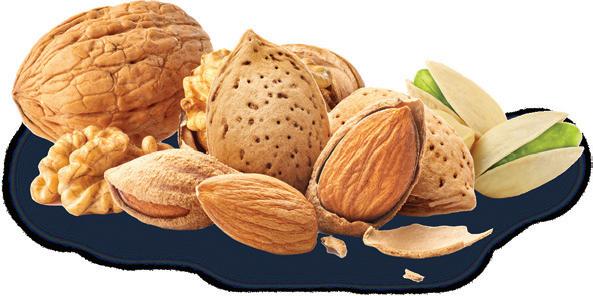
Disease management: ipm.ucanr. edu/agriculture/. At the bottom of this page is a link to the free 73-page document from UC IPM titled, “Fungicides, bactericides, biocontrols, and natural products for deciduous tree fruit and nut, citrus, strawberry and vine crops in California, 2022.”
Stink bugs: ipm.ucanr.edu/agriculture/almond/stink-bugs/
Ants: ipm.ucanr.edu/agriculture/almond/ants/
Almond Rootstocks Information from UC: fruitsandnuts.ucdavis.edu/ crops/almond
Comments about this article? We want to hear from you. Feel free to email us at article@jcsmarketinginc.com
From Lab to Field Partnering with the best to provide quality trees and service WALNUTS VX211 RX1 Vlach Grafted PISTACHIO UCB-1 ALMONDS Nonpareil Monterey Butte Padre CONTACT US TODAY 916-605-0463 sales@baselinenursery.com 3556 Sankey Rd. Pleasant Grove, CA 95668 April 2023 www.wcngg.com 11
Identifying and Mitigating Replant Challenges in Almond Orchards
By
CAMERON ZUBER | UCCE Orchard Crops Farm Advisor, Merced and Madera Counties
JAIME OTT | UCCE Orchard Crops Farm Advisor, Tehama, Shasta, Glenn and Butte Counties
and ROGER DUNCAN | UCCE Pomology Advisor, Stanislaus County
Removing and replanting an orchard can be a difficult decision, but ultimately orchards will need to be replaced. When replanting, it is important to identify what problems may persist into the next orchard and what can be done to mitigate these issues.
Satellite images provide a bird’s eye view of the current orchard and can help differentiate between “good” and “problem” areas. Resources like Google Earth even provide options to go back in time to view problem areas in previous orchards and see how the current orchard developed. Areas of poorly growing trees can be used to predict potential problems that may persist into the new orchard and narrow the list of potential problems to identify. For example, different patterns of tree loss, decline or growth can indicate different potential issues.
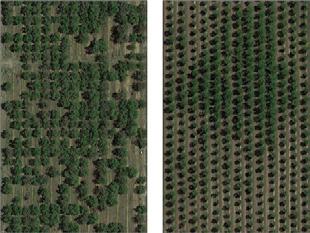
Consistent canopy size with sporadic tree loss can indicate a problem with soilborne pathogens, which would require in-field observations and possibly sampling tree roots or crowns for pathogens as well as soil for parasitic nematodes. Decline down a tree row could indicate an irrigation problem which would require assessing the irrigation system. Variable canopy growth localized within irregular shapes could indicate a soil variability problem like different soil textures, uneven water infiltration or variable hardpan depth. Growers should also utilize online soil maps, like those provided by University
of California, Davis’ SoilWeb apps or the USDA Web Soil Survey. Finally, always ground truth areas of poor tree performance by deep soil sampling with a six-foot auger or a backhoe to assess soil to at least a six-foot depth.
Satellite images begin to inform how funds, time and other resources should be best allotted to establish a new orchard by helping identify replant issues, which for almonds can be categorized into the following groups:
Physical and chemical factors
Aggressive pathogens
.Plant-parasitic nematodes
Prunus replant disease
Some are addressed by pre-plant treatments (e.g., fumigation to control soilborne pests), while others are addressed by orchard management after planting (e.g., nutrient deficiency), and others may be solved through the normal practices of replanting an orchard (e.g., upgrading the irrigation system). Many of these problems may be mitigated by choosing an appropriate rootstock. However, issues need to be identified first to then inform if something needs to be done and, if so, the best management strategy to mitigate replant impacts.
Physical and Chemical Factors
If physical and chemical factors are suspected, sampling and analyzing leaf tissue, soil and irrigation water is useful to identify problems with salinity, high levels of boron, pH or variability in
soil textures. If a suspected problem is localized to specific areas in the orchard, generally it is worth submitting separate samples for “good” areas and “problem” areas. When using a backhoe or auger, look for sudden changes in soil texture, color or hardness. Any sudden change in
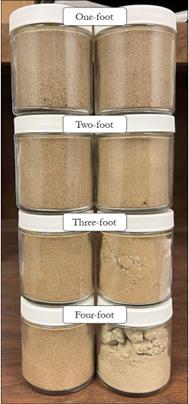
ContinuedonPage14
Satellite images of almond orchards with sporadic tree loss (left) and variable canopy growth in localized areas (right).
Photo of soil collected using auger from two locations in an orchard approximately 200 feet apart. Soil collected every foot to a depth of 4 feet. Note soil color change with harder soil chunks starting at a 3-foot depth for one location (photo by C. Zuber.)
12 West Coast Nut April 2023
THE FORECAST CALLS FOR RAIN BIRD
Since 1933, Rain Bird has pursued the most water-efficient and innovative irrigation technology in the world. We began with the original horizontal action impact drive sprinkler and followed it up with over 450 patents that continue to shape the future of irrigation. Looking for a better long-term irrigation forecast? Visit rainbirdag.com.

ContinuedfromPage12
soil texture requires ripping or backhoeing to mix the soil to prevent water infiltration problems. Failure to properly break up or mix soil layering will lead to root health problems and premature orchard decline.
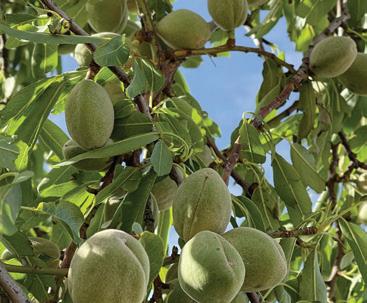
Aggressive Pathogens

Aggressive pathogens can also persist in the new orchard. Typically, these should be identified from observing and sampling failing trees from the previous orchard. For example, almond roots infected with Armillaria root rot or oak root fungus (Armillaria mellea) may have white mats between the bark and wood.
Control Nematodes. Save Your Soil.

Barrett30 makes it easier than ever to repel nematodes. No annoying drift. No certification needed. No timewasting paperwork. Apply with cost e ective chemigation and allow Barrett30’s soil-safe formulation to create a protective, nematodecontrolling barrier around your crops.



While some pathogens may be identifiable in the field, samples should be sent to labs to confirm a diagnosis. This can be done with help from a local farm advisor or PCA.
The UC Integrated Pest Management Program is a resource that can help identify a problem and provide recommendations on what can be done. Generally, using a resistant rootstock is the best way to mitigate challenges with aggressive pathogens in replanted orchards, so refer to the UC ANR rootstock database or the rootstock comparison chart for more information.
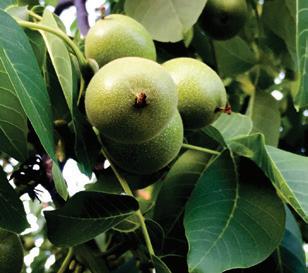
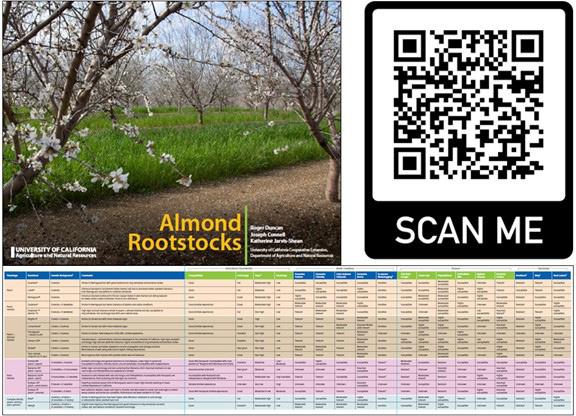
Plant Parasitic Nematodes
A common challenge for replanted orchards is the presence of plant parasitic nematodes, such as root-knot, root lesion and ring nematodes. While many other species of nematodes live freely in the soil and are not detrimental to crops, plant parasitic nematodes can impact root health and development, which impacts tree vigor.

Soil and root sampling can help determine if parasitic nematodes are present in a field and, if present, type and number of nematodes. As nematodes are not distributed evenly across a field, appropriate sampling methods should be implemented to collect a representative sample. Below are some guidelines to help sample for parasitic nematodes:
(209) 409-2558
Sampling: Ideally, sample in fall as nematode populations are the highest during this time, allowing the best chance of detecting them. However,
 Photos of some aggressive pathogens and pests that cause replant impacts. Includes Phytophthora root rot (top left, photo courtesy UC IPM), oak root fungus or Armillaria mellea root rot (bottom-left, photo courtesy UC IPM) and Verticillium wilt (right, photo courtesy Almond Doctor.)
UC ANR rootstock comparison chart.
Scan to discover how easy fighting nematodes can be.
An ultra safe and e ective pesticide meeting growers’ and nature’s needs.
Photos of some aggressive pathogens and pests that cause replant impacts. Includes Phytophthora root rot (top left, photo courtesy UC IPM), oak root fungus or Armillaria mellea root rot (bottom-left, photo courtesy UC IPM) and Verticillium wilt (right, photo courtesy Almond Doctor.)
UC ANR rootstock comparison chart.
Scan to discover how easy fighting nematodes can be.
An ultra safe and e ective pesticide meeting growers’ and nature’s needs.
West Coast Nut 4.75” x 5” 14 West Coast Nut April 2023
sampling can also occur in the winter and spring, but is limited to a comparison between “good” and “problem” areas when sampling different sections of an orchard.
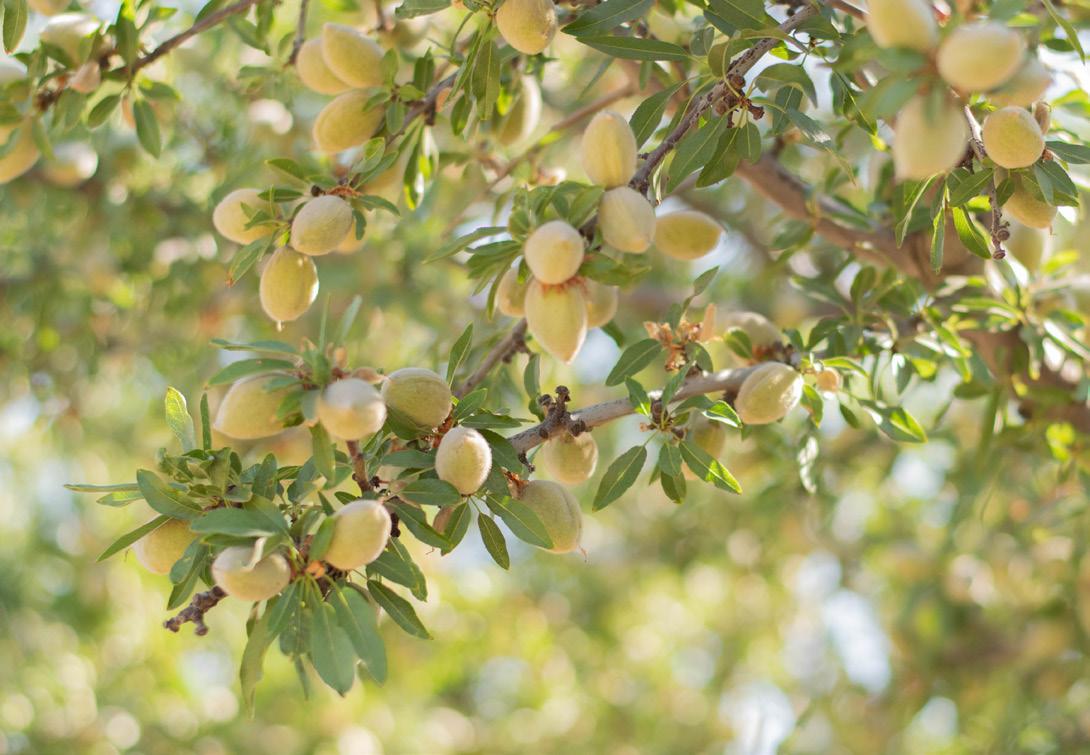
Tools: Shovel, soil probe or auger.
Depth: For almonds, collect soil from 4 to 24 inches below the soil surface. Use a shovel to clear away the top four inches of soil and use a soil probe or auger to sample from there to 24 inches deep.

Location: Collect soil from multiple spots in an orchard and then combine these into one sample with a total volume of about 16 oz (or about 2 cups). Sample near trees in order to include roots with the soil sample. Collect soil from at least five locations in one orchard (more for larger blocks). Make sure to sample across the orchard, not just right next to the road. Samples are supposed to represent an orchard’s nematode populations, so take extra effort to sample enough locations. As with physical and chemical soil sampling, you might consider submitting separate
samples for “good” areas and “problem” areas in your orchard.
Sanitize: Sanitize your tools before beginning to sample, when sampling a new orchard and between “good” and “problem” area sampled in one orchard. Contaminated tools can lead to lab results detecting nematodes in many fields when they were really just present in one
PROVEN SINCE 1938
field. Remove any stuck-on soil and then use appropriate disinfectants or flame with a propane torch to sanitize tools. Label sample: Clearly mark the sample with the location and date. Location is especially important if you are submitting multiple samples.
DWNTREES.COM | 1-844-DWN-TREES | @davewilsonnursery FARMER
POTTED AND BARE ROOT TREES AVAILABLE NOW Viking • Atlas • Rootpac R ™ • Hansen • Nemaguard • Lovell HOME OF THE INDUSTRY-LEADING INDEPENDENCE ™ INTRODUCING THE NEW SELF-FERTILE LIBERTY ™ ALMOND Blooms 4-5 Days after Nonpareil • Harvests 10-14 days after Nonpareil April 2023 www.wcngg.com 15
Image of recommended sampling depths (4 to 24 inches) when collecting nematode samples in almond orchard (photo by C. Zuber.)
ContinuedonPage16
Storage: Store samples in a cool location like a refrigerator or ice chest. This helps nematodes in the sample to survive long enough for lab analysis. If using an ice chest, insulate the samples from direct contact with the ice and protect samples from water as the ice melts.
Lab reports show what types of nematodes are present, as well as the number of each type per volume of soil. Sometimes it may be important to request more information from the lab analyzing samples. For example, there is more than one species of root lesion nematode, but only one is considered to be a problem in orchard crops (Pratylenchus vulnus), so be sure to ask the lab to identify which species of root lesion nematode is present in your orchard. Which additional information is needed is dependent on your location and the types of plant parasitic nematodes that may be a concern in that location.
The most effective mitigation strategy will depend on both the type and number of nematodes present. For high nematode levels, pre-plant soil fumigation and the use of resistant rootstock might be the best option. At lower nematode numbers, the use of a resistant rootstock may be sufficient. Consult with a farm advisor or PCA to determine what strategies would be appropriate to help manage your specific nematode situation.
Prunus Replant Disease
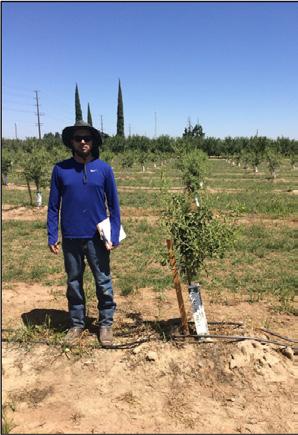
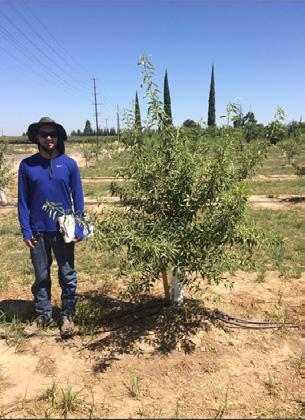
Prunus replant disease is a challenge for many almond orchards planted following almond or other Prunus species. The causes are poorly understood but the disease is characterized by reduced tree growth in replanted orchards. It typically occurs in loam, sandy loam and sandy soil textures, and can occur with or without plant parasitic nematodes. Unfortunately, there is no test for Prunus replant disease, but we know that fumigation and anaerobic soil disinfestation can help mitigate the problem. We also have evidence that waiting a year between removing the old orchard and planting the new orchard can help to mitigate this problem.
While removing and replanting an orchard is challenging, it is important to consider what issues the new orchard will face. Trying to fix problems after planting can be costly and difficult, and failing to adequately address these challenges can lead to failure of the replanted orchard. Make the time to identify, mitigate and plan for replant impacts before planting an orchard as this will give your trees the best start toward becoming healthy and profitable.
Resources
Contact the authors: Cameron Zuber at cazuber@ucanr. edu, Jaime Ott at njott@ucanr.edu and Roger Duncan at raduncan@ucanr.edu
UC ANR rootstock comparison tool: fruitsandnuts.ucdavis. edu/rootstocks/rootstock-comparison
UC ANR rootstock comparison chart: fruitsandnuts.ucdavis.edu/almond-rootstock-comparison-chart
UC ANR rootstock database: fruitsandnuts.ucdavis.edu/ rootstocks
UC IPM for Agricultural Pests: ipm.ucanr.edu/agriculture/
UC Davis, NRCS and UC ANR SoilWeb Apps: casoilresource.lawr.ucdavis.edu/soilweb-apps/
USDA Web Soil Survey: websoilsurvey.sc.egov.usda.gov/ App/HomePage.htm
Comments about this article? We want to hear from you. Feel free to email us at article@jcsmarketinginc.com
 Almond trees on Guardian rootstock planted at same time in fumigated (left) and non-fumigated (right) soils in orchard with suspected presence of Prunus replant disease (photos by C. Zuber.)
Almond trees on Guardian rootstock planted at same time in fumigated (left) and non-fumigated (right) soils in orchard with suspected presence of Prunus replant disease (photos by C. Zuber.)
ContinuedfromPage15 16 West Coast Nut April 2023

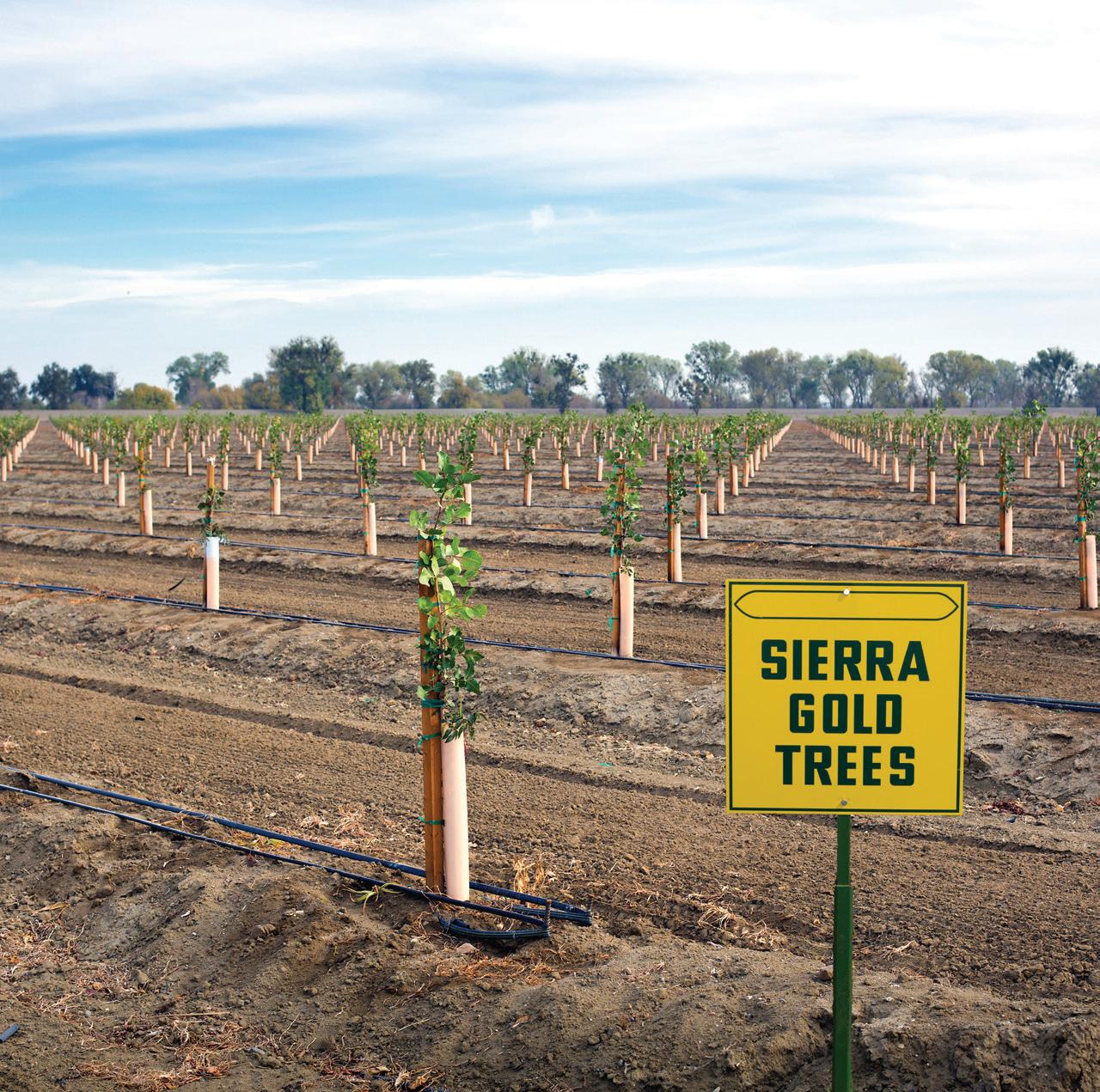

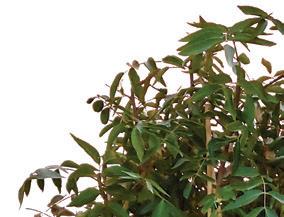
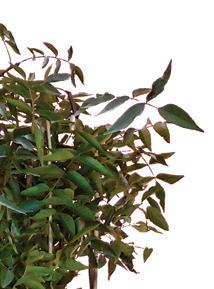
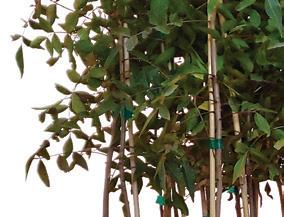
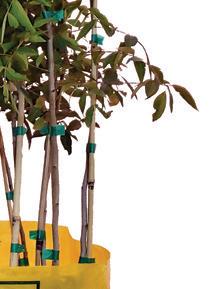
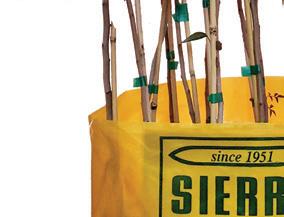

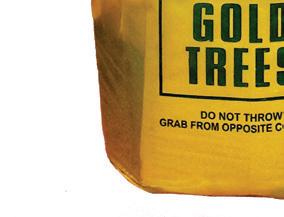








PISTACHIO TREES Sierra Gold Nurseries • (530) 674-1145 • sgtrees.com On-Site Tissue Culture Lab platinum pistachio rootstock (P.N. 1-15 PP#14,706) ucb-1 pistachio rootstock clonal (FRP Source) or Seeded (UC Protocol)
Tree Nut Industries Take Varying Approaches to Achieving Nut Quality
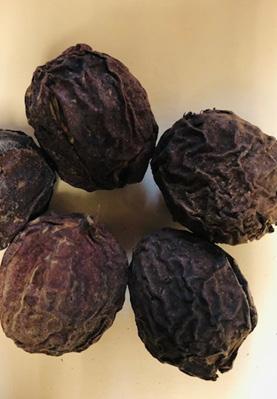 By CECILIA PARSONS | Associate Editor
By CECILIA PARSONS | Associate Editor
Consistently delivering a top-quality product to domestic and export markets is the goal of tree nut growers and processors.
To achieve that goal, they must determine how and why quality can be impacted during growth, harvest and processing. While still on the tree, quality challenges include insects, disease, nutrition and environmental. Processors maintain quality during handling and storage. Some of those challenges may be beyond grower or processor control, but research is showing proactive management can improve nut quality.
One of the best examples of meeting the insect damage challenge to nut quality is a good control program that takes into account pest pressure and is timed to achieve maximum control possible.
Environmental challenges are a tougher nut to crack.
The pistachio industry has been focusing on early detection of hull breakdown to give growers tools to avoid poor nut quality. Almond processors are looking at wireless technology to detect insect infestation in stockpiles and treatments to manage stockpiles. Walnut industry research is aimed at determining factors that contribute to dark kernels and mold.
In her Pistachio Day presentation, Barbara Blanco-Ulate, UC Davis plant pathologist, said predicting pistachio hull breakdown using biomarkers will allow growers to develop management plans to ensure nut quality. Optimal harvest timing can also help with costs, she said. Biomarkers are molecular or physical signatures that can be measured in the field to anticipate
large physiological changes like hull ripening and breakdown. Pistachio hull breakdown occurs after nut ripening and leads to higher nut susceptibility to insect infestation and fungal decay.
Blanco-Ulate said her California Pistachio Research Board-funded project led her to re-think nut growth stages. She noted that shell hardening and kernel growth happen at the same time. Hull ripening and kernel maturation start once the kernel reached the maximum size. There is also a peak in volatiles that happen just prior to hull ripening. Hull softening and hull coloration to red are reliable biomarkers of hull breakdown. Shell split occurs in parallel with hull softening.
Another finding in her research showed a faster hull breakdown in the Golden Hills variety compared to Kerman. At mid-August, Golden Hills had the highest level of VOCs, while Kerman VOCs peaked two weeks later at a much lower level. This faster rate of hull degradation leaves nuts open to insect damage and fungal growth and is the reason growers of this variety are urged to harvest early.
Blanco-Ulate and her research team also found that bloom time and temperature during early nut growth impact blanking and nut quality at harvest. Late bloom nuts have higher incidence of blanks and filled nuts without splits. With normal bloom, blank percentage was at 18%. Late bloom had 37% blanks. Normal bloom produced 94% shell split while late bloom looked had 55% shell split. Late bloom nuts have significantly harder hulls and softer shells. Blanco-Ulate also noted that it is not always the case that kernel expansion forces shell splitting. It is more than physical force, she noted.
Physical Measurements of Almond Quality

The almond industry is exploring genetics and chemical markers in kernels that contribute to taste and shelf life. Researchers are looking
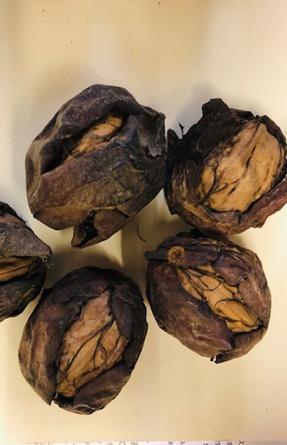
ContinuedonPage20
Handling and Processing 18 West Coast Nut April 2023
Nuts continuously exposed to the sun have husks that develop dark brown leathery lesions by mid or late summer.
IMAGINATION INNOVATION

Capturing Maximum Genetic Potential













at kernel moisture, color, texture, lipids, tocopherols (vitamin E), cyanogenic glycosides and free amino acids.
The research study presented at the 2022 Almond Conference involved new experimental almond varieties and commercial varieties. One finding was that on average, the experimental varieties have higher levels of total vitamin E. This translates into longer shelf life, and greater nutritional value. Cyanogenic glycosides are responsible for almond bitterness and almond aroma.
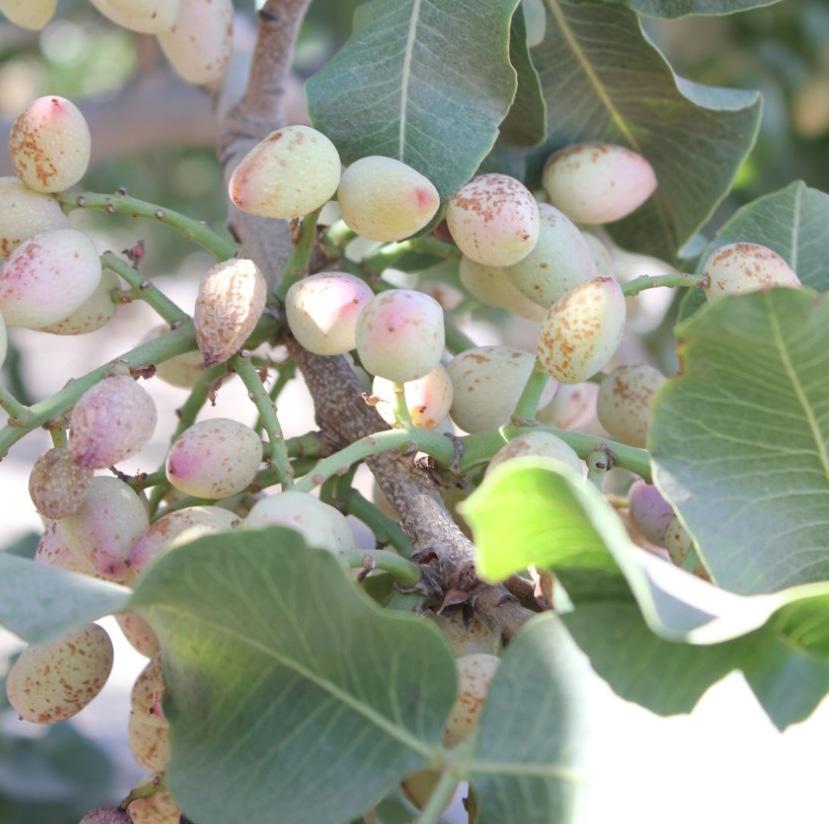
Amygdalin is a cyanogenic-glycoside. Monitoring amygdalin in almond kernels and characterizing levels in almond hulls is critical for maintaining a safe, high-quality product and identifying safety of co-products.
Quality management at the processor involves early detection of insect pests in product storage. UC Davis researcher Zhongli Pan said at the Almond Conference that current chemical fumigation and product loss costs $350 million annually for tree nuts alone in the U.S. (see related article on page 30.)
Since 2021, he has been testing a new technology aimed at detecting insect infestations in stored almonds. Insect infestations can cause significant damage to stored almonds in a short time, Pan said. Infestations can occur quickly before they can be detected by humans. The SmartProbe technology, he said, is a novel tool for early detection of insect pests in stored commodities. Studies over the past two years showed it can detect insect infestations at an earlier stage than human inspection. One insect, he said, can damage 25% of kernels in a bin stored at 30 degrees Celsius. Insects found include navel orangeworm larvae and moths, red flour beetles, bugs and moths. The device measures temperature and relative humidity and monitors storage conditions.
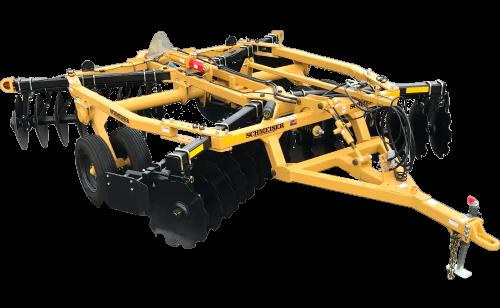
ContinuedfromPage18 “Schmeiser Orchard Disc” ® 1-800-288-8128 • www.tgschmeiser.com Built To Last! The Ultimate Orchard Disc • Heavy Duty • Easy-To-Adjust • Feature Packed
Handling and Processing 20 West Coast Nut April 2023
The pistachio industry has been focusing on early detection of hull breakdown to give growers tools to avoid poor nut quality.
Postharvest stockpile management of almonds and use of gaseous chlorine dioxide fumigation was explained by USDA-ARS researcher Vivian Wu. This fumigant reduced A. flavus mold and toxins on stockpiled almonds with no significant effect on almond quality. She said gaseous CO2 can be used for moisture pockets and moisture exposed product. It does not require on-site storage of gas cylinders and no certification for application is required. This chemical can be modified on the company’s required treatment method for storage, stockpile or silos.
Walnut Challenges



In walnuts, sunburn, irrigation management and disease prevention can determine kernel quality at harvest.

Dark kernels, shriveled kernels and mold are quality defects that cause processor rejections.

Producing light-color kernels is important in the walnut industry. Robert Verloop, executive director of California Walnut Board and California Walnut Commission, said at the UC Tri-County Walnut Day. Light-color kernels give handlers more flexibility in marketing as they can be held for a longer period.
Environmental conditions in walnut orchards cannot always be mitigated as evidenced by the summer 2022 heat wave that caused serious nut damage in many northern growing regions. Very high temperatures at critical times in nut development caused hulls to adhere to shells. These ‘black hull’ nuts were rejected at the hullers.
UC Plant Pathologist Bruce Lampin-

en, in a presentation at the Tri-County Walnut Day, highlighted the walnut quality studies that have taken place over many years. They included quality and kaolin application studies and impacts of excessive irrigation on quality. One of the findings was nuts that have hulls that do not split normally and maintain wet conditions around the kernel cause quality problems.
Nuts continuously exposed to the sun have husks that develop dark brown leathery lesions by mid- or late summer. Sunburned nuts have shriveled and darkened kernels. Lampinen said field trials showed most sunburn occurred in southwest-oriented lower positions where there was an indentation in the canopy, likely leading to lack of air circulation. Kaolin, which is applied to prevent sunburn, needs to be applied where nuts are exposed to mid-day sun.
Lampinen noted timing of stress has different impacts on quality. Stress during kernel filling, typically in July and August, impacts kernel size. Stress at hull split can impact kernel color.
Water availability and uncertainty and warmer summer temperatures will continue to challenge walnut quality statewide, Lampinen said.
Comments about this article? We want to hear from you. Feel free to email us at article@jcsmarketinginc.com
3-3-3 4-4-4 Camera and
sensors Insect entry
Insect collecting chamber
2 days
Big Cloud Data and User Interface and PestDetect App SmartProbe
April 2023 www.wcngg.com 21
SmartProbe insect pest early detection and environmental monitoring technology.
Processors Take Advantage of Technology to Deliver Superior Walnut Products
By CECILIA PARSONS | Associate Editor
While Omega Walnut is celebrating 10 years of successful production and many accomplishments, this Orland, Calif.-based walnut processor is also dealing with current market and nut quality challenges.


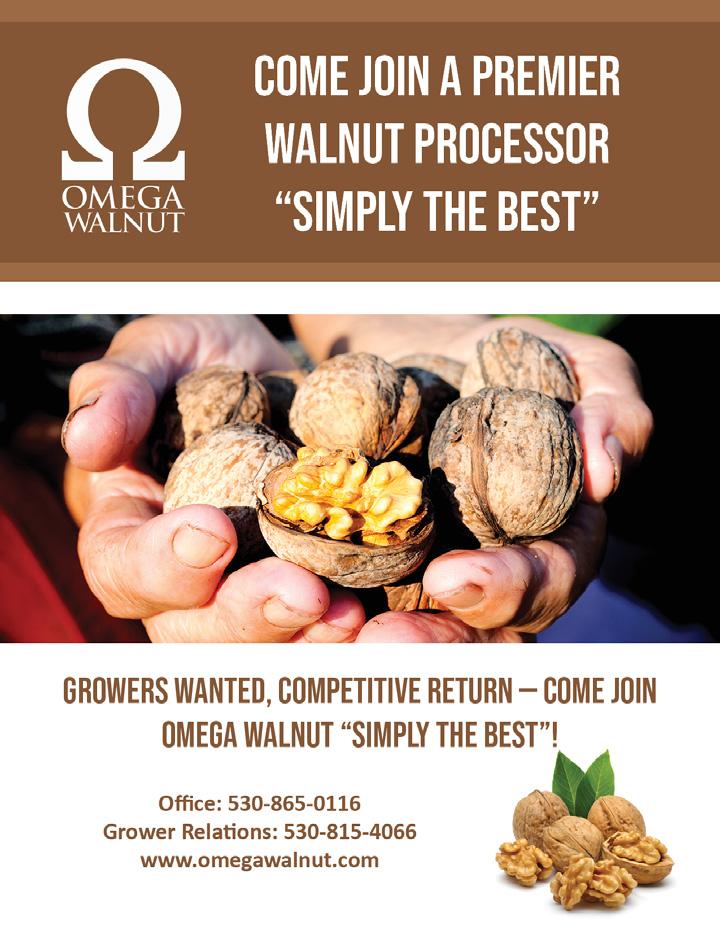



industry issues and how this processor strives to meet customer quality expectations.
The facility processes and ships in-shell and shelled walnut products both domestically and internationally.
“Our biggest challenge is trying to generate the best returns for our growers. Our facility was built to accomplish that goal and to grow and meet growers’ needs,” Millen said. “We are committed to producing the highest-quality products possible using today’s technology.”
Omega Walnut is SQF (Safe Quality Food) certified with an excellent rating. Millen explained that means a food safety and quality assurance auditor comes to the plant annually to inspect and “make sure Omega Walnut does what it says it does.” These audits can take three to
“They want to see proof that we are following all food safety requirements,” Millen said.
The plant continues to achieve the high ranking in food quality, Millen said, through preparation to meet quality expectations which can evolve. Omega Walnut is proactive in training to keep up with changing buyer needs and
Millen and CEO Jeff Sleeper shared their views on walnut
“The use of deep artificial intelligence in sorting is helping nut processors retain value by increasing their end product quality.”
Handling and Processing 22 West Coast Nut April 2023
– Oscar Sandoval, AMVT LLC
In addition to the food safety and quality certifications, Omega is also Halal and Kosher certified and registered with the FDA. The plant uses USDA grading criteria to inspect in-shell products. Grading standards include size, external defects, internal defects and color. Their in-shell nuts are packaged in sacks and sold to both domestic and overseas markets.
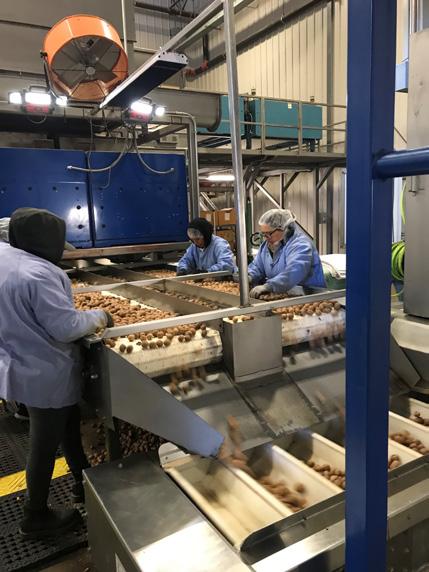
Sleeper said Omega Walnut also makes a range of specific products for the shelled market. All kernel sizes and color meet specifications for intended use in domestic and international markets. The shelling operation mechanically cracks the walnuts, and the kernels are separated from shells. Kernels are screened for size, and electronic color sorters are used to deliver a uniform product. Nuts are also physically inspected for any defects. Depending on the end use of the product (e.g., bakery or confection) Omega Walnut supplies products with the goal of exceeding their customers’ expectations for quality.
When a load of hulled walnuts arrives at the plant, trucks and trailers are weighed to obtain a gross weight. While the nuts are being unloaded and put in silos, a sample is taken and used to grade the load. Unloaded trailers are weighed to obtain a growers’ net weight. Millen said the collection is then graded, and information on weight and grading is sent to the grower.

Standards for incoming product grading include moisture levels, insect damage, edible meat yield and color, etc. A product is graded upon delivery with grower returns based on incoming quality.
Millen said 2022 was a very tough year for walnut quality as high temperatures in September caused quality defects in-
 Traditional sorters or hand sorting tend to have a greater loss of good product from the removal process compared to deep AI which focuses on the foreign material reducing the amount of collateral.
Traditional sorters or hand sorting tend to have a greater loss of good product from the removal process compared to deep AI which focuses on the foreign material reducing the amount of collateral.
ContinuedonPage24
April 2023 www.wcngg.com 23
Omega Walnut processes and ships in-shell and shelled walnut products both domestically and internationally.
ContinuedfromPage23
cluding sunburn/dark kernels and shriveled kernels.
“Due to drought, there was no deep moisture in the ground, and with 7 to 10
WalnutTek Advantages
• Walnut sorting at the huller, and in-shell
• Green and black re-sorting at the huller
• Several width options — 32, 48, 64 or 80in
• Capacity from 5-30 tons/hour
Automated Moisture Monitoring at the Dryer
All moisture meters are available for use individually or in conjunction with the WalnutTek sorter.
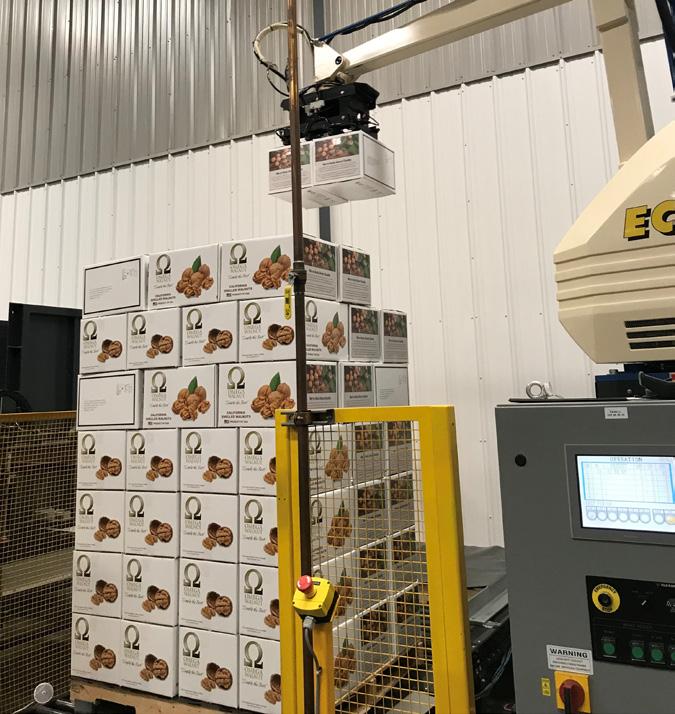
• Hand-held moisture meter
• Automated moisture meter
• Automated moisture meter with door control
• Automated moisture meter with door control
• and bin fill
AgTrack
• Traceability from the farm-to-processor
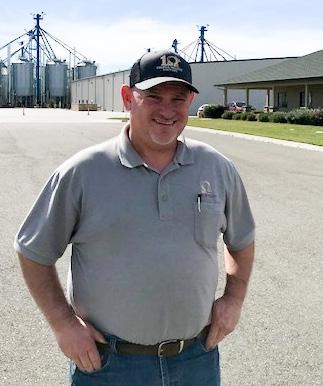
Woodside Electronics Corp.
1311 Bluegrass Place, Woodland, CA 95776
Phone: 1-530-666-9190 • Fax: 530-666-9428
Website: www.wecotek.com

Chris Sinclair 530-979-7633
16 Years in Walnuts | 30 Years of Sorting in the Field
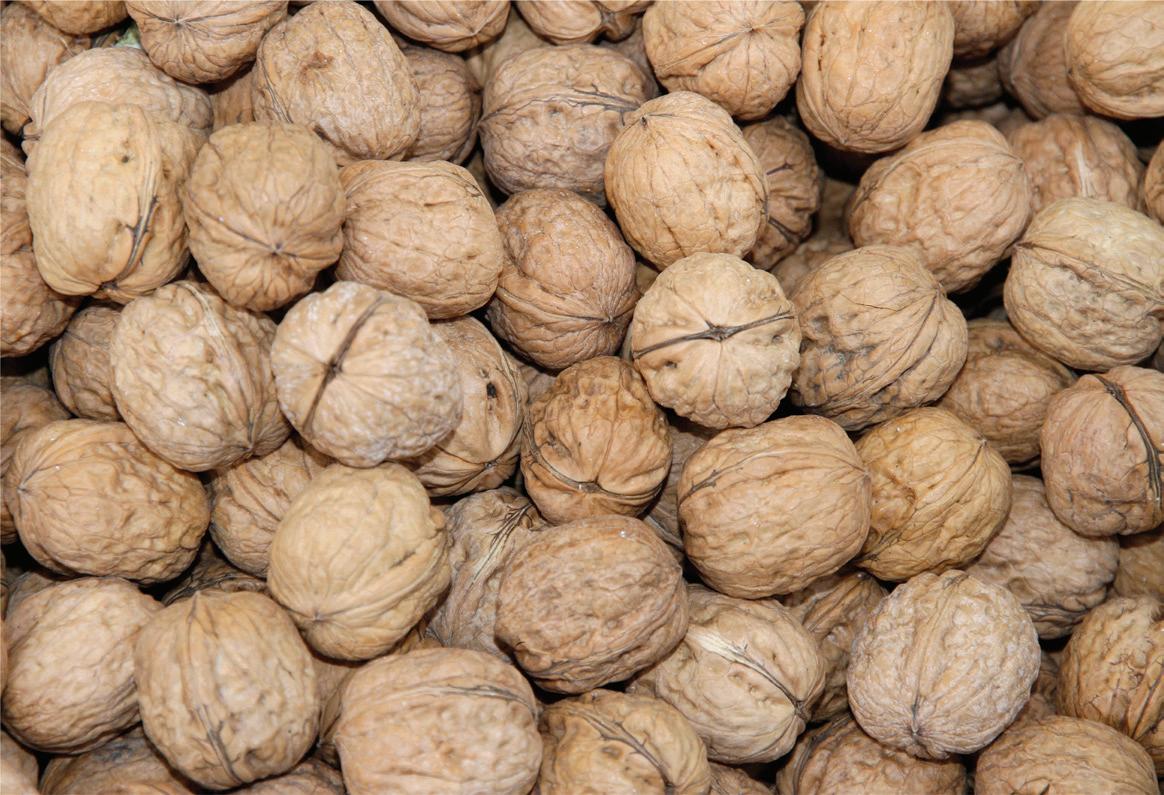
LOCAL FULL SERVICE! TECHNICIANS AVAILABLE 24/7
Omega Walnut Grower Relations Manager Gerard Millen said the processing facility was built to generate the best returns to growers.
24 West Coast Nut April 2023
range right during a critical time in nut development, that created a problem for us with quality,” Millen said. “Normally, the heat comes earlier and has less effect on nut development.”
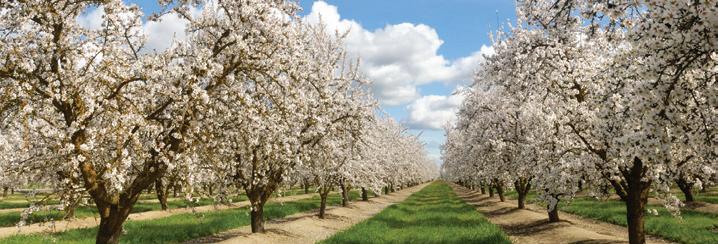
Millen said good equipment and technologies are key to increasing the value of their products and meeting buyers’ high-quality expectations.
Sorting Machines Provide Flexibility
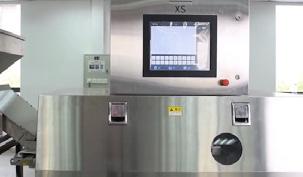
“The use of deep artificial intelligence in sorting is helping nut processors retain value by increasing their end product quality,” said Oscar Sandoval with AMVT LLC. These sorters are able to be ‘trained’ to detect more color differences and help more of the product to retain its highest possible value.
“The sorters are able to separate out lighter kernels so there won’t be a need to dice and sell at a lower price.” With deep artificial intelligence and shape recognition ability, sorters can also separate out perfect kernels from those with imperfections like a broken shoulder or missing quarter. Sandoval explained that the deep AI works by inputting pictures of different varieties and shapes. It learns and then picks out kernels that match those pictures from the product flow.
Because of the product flexibility AI sorting allows, there has been an increase in interest from processors who need to increase the value to their walnut products.
Another added benefit of deep AI sorters is that can replace hand sorting, allowing the tree nut industry to compete with other industries where hand sorting is used at a much lower cost. The AI sorting process is much more efficient and quicker with a throughput from 3,000 lbs./hr. up to 8,000 lbs./hr. compared to the hand sorting process with a throughput of approximately 2,200 lbs./hr. or one bin per hour.
Targeting foreign material among nuts is also crucial. Traditional sorters or hand sorting tend to have a greater loss of good product from the removal process compared to deep AI which focuses on the foreign material reducing the amount of collateral.
Sandoval says that AMVT LLC has two types of sorters: belt sorters and
x-ray sorters. The advantage of x-ray is that it sorts by density which helps by removing rocks that otherwise may not be able to be sorted by coloration due to being closely similar to walnut meats.
Comments about this article? We want to hear from you. Feel free to email us at article@jcsmarketinginc.com
X-ray sorter being used to remove rocks that otherwise may not be able to be sorted by coloration due to being closely similar to walnut meat pieces (all photos courtesy Omega Walnut.)
Fast and Effective Broad Spectrum Control of Mites, Soft-Bodied Insects and Fungal Diseases
Gargoil® Insect, Mite & Disease Control targets pests including mites, aphids, thrips, whiteflies, psyllids and other soft-bodied insects. Gargoil® can also help control immature forms of larger insects such as worms and scale.
ADVANTAGES
■ Apply throughout the season, even day of harvest, no PHI
■ No limits on the number of applications per year

■ Easy-to-use plant-based product ■
Gargoil® for the Control of Two-Spotted Spider Mite Combined Life



Call (760) 599-8855 or visit www.san-agrow.com
Stages
One (1) application was made on 7/27
Application made after harvest to avoid residue issues; very high populations at time 0 Cooperator Trial, WA, 2020 Total Egg Counts Total All Life Stages Counts 1600 1400 1200 1000 800 600 400 200 0 a a a a b ab Untreated Gargoil @ 0.58% Bifemaxate at 1 lb/A 1215 1158 1306 1408 968 1133
■
April 2023 www.wcngg.com 25
CASP 2.0: THE RE-ENVISIONING OF ABC’S STEWARDSHIP PLATFORM

 By MITCH LIES | Contributing Writer
By MITCH LIES | Contributing Writer


After more than 10 years, the Almond Board of California has overhauled the California Almond Sustainability Program (CASP), driven by a changing production environment and industry needs.


The overall includes a more streamlined platform as well as a new name and a new logo. “The relaunched ‘California Almond Stewardship Platform’ (still CASP) highlights the importance of leveraging research, education, self-assessment and tools to meet the needs of today’s market environment,” said Gabriele Ludwig, director of sustainability and environmental affairs for ABC. The word “platform” is used to clarify that CASP self-assessments are not the sustainability program for California almonds. Rather, it is a way for individual growers to measure their operation against industry norms, Ludwig said.
The re-envisioning of stewardship for California almonds included acknowledging that the stewardship efforts were more than the self-assessment program, Ludwig said. Rather, the California Almond Stewardship builds on the research funded by ABC, its outreach programs and the tools included along with the self-assessment tool. Also, Ludwig said, the Almond Board focused on simplifying the effort for producers to self-assess in the revamped platform, which ABC is calling CASP 2.0, while seeking to expand its benefits.
Streamlined Platform
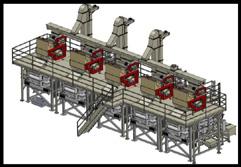
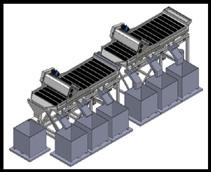
The changes, installed last November, were driven by the ABC’s Board of Directors, which asked staff to try and improve CASP, according to Tom Devol, ABC’s senior manager of field outreach and education.
“The Board came to us last year and raised the challenge to us to revisit CASP and re-envision it,” Devol said. “And it was good timing because the staff was




ContinuedonPage28 w w w r i p o n m f g c o c o m To manufacture equipment that promotes customer profitability; innovate and engineer designs to maximize efficiency; and continually increase product yield while minimizing cost and environmental influence ALMOND PROCESSING EQUIPMENT & SYSTEMS Call us today 209.599.2148 O U R M I S S I O N Ripon Mfg Co , Inc 652 S Stockton Ave Ripon, CA 95366
Handling and Processing 26 West Coast Nut April 2023
Luke Milliron, UCCE orchard systems advisor for Butte, Glenn and Tehama counties, middle, and ABC’s Sebastian Saa, associate director of agricultural research and innovation, right, discuss production practices with a grower (all photos courtesy Almond Board of California.)

ContinuedfromPage26
already looking at that challenge of how we could streamline it and what we could do to improve CASP.”
First launched in 2009, the self-assessment tool had grown over the years in both its focus and size, Devol said. “And the needs of the industry have changed since the self-assessment program was first envisioned close to 15 years ago,” he said.
“It has grown into more than just a self-assessment,” he said. “It is really based in research that we do around production practices. The research really drives a lot of the education. Then we have the self-assessment as well as tools like the nitrogen calculator and the irrigation calculator.
“So, it was a good time to kind of reframe that this is not a program, which we used to call it. It is actually a platform,” he said.
Also, Devol said, the self-assessment had grown in complexity to the point where it took a grower six to eight hours to input data on production practices.
“After 12 years, it has put on a little weight,” Devol said. “And it became kind of daunting to do for growers. We were at over 600 questions. So, we put it on a diet, and we trimmed it down. We dropped almost 40% of the questions. It has gone from a six- to eight-hour process to complete the assessment on an orchard to about two to three hours.”
“We got rid of duplicate questions, and we asked, ‘Is this question really pertinent to stewardship?’” Ludwig said.
Devol added that prior to the changes, he and other field representatives were regularly fielding questions from growers about how to answer questions in CASP. Since, he said, not so much.
“We have received very few calls,” Devol said. “It is amazing how many people have opened it, firsttime people, and have had no problems or issues understanding how to complete the assessment.”
Promoting Stewardship
CASP, according to Ludwig, is just one part of the Almond Board of California’s ongoing effort to promote good stewardship production practices.
“Stewardship is nothing new to the industry,” Ludwig said. “Trying to find better ways of doing things is something we have been doing, at least from the research side, for 50 years now.
“Basically, the self-assessment questions are based on research over the years as to what practices encourage the use of inputs wisely,” she said. “We added some tools like the nitrogen calculator or the irrigation calculator to try to make it easier to for a grower to determine what level of input was appropriate for the grower’s specific situation.
“And we are actually getting quite a lot of people to engage,” she said, noting that 50% of the almond acreage in California has been assessed in CASP since 2009. Ideally, a grower would re-assess his or her operation at least every three years, she said.

CASP remains confidential, Devol said, meaning only the person who inputs the data can access the information. But the aggregate data is invaluable.
For example, he said, the online self-assessment now provides a mechanism for growers to identify their handlers, and the handlers can get aggregate, anonymous data on their growers, data that is helping handlers answer questions from buyers about how California almonds are grown. Thus, ABC has benchmarked the CASP self-assessment questions with an international program called FSA-SAI, which provides a generic list of questions around sustainability for farming. Ludwig explained that the benchmarking essentially translates the almond-specific practices into a more global language, which makes it easier for handlers to meet programs or address questions from large food companies and some retailers.
Capitalizing on the Data
Handlers, in fact, are a large part of why participation in CASP has increased dramatically over the last year, Ludwig said. Devol noted that the amount of activity in CASP over the past year was similar to the amount of activity of the previous 10 years combined.
“Handlers are encouraging their growers to participate (in CASP) because it helps them tell the story better to their buyers,” Ludwig said.
Another example of how the aggregate data can be used is to see strengths and opportunities, Devol said. “Our growers understand that when they put data in, they are the only ones who can see it,” he said. “But if I can get a better understanding of practices being used, it is helpful for me. It helps the field outreach staff understand where we need to drive education.
“The data is pretty powerful from the standpoint of understanding what is happening in the industry and where we need to engage growers,” Devol said.
Ludwig added that the aggregate information available in CASP helps the industry piggyback on the health message that almonds have benefited from greatly over the years with the fact almonds are grown sustainably.
Handling and Processing 28 West Coast Nut April 2023
Almond growers Tom Marchy and Katie Staack check out a microirrigation system. CASP data shows 80% of California almond growers are using microirrigation systems.
“The consumers who care about eating healthy also care about sustainability,” she said. “If we cannot demonstrate that almonds are grown thoughtfully with good stewardship, then we can lose that credibility in the health space.”
ABC also leverages information available in the platform for reputational management, Ludwig said.
“A classic example would be when we got hit with the drought shaming, we were able to go into the CASP data at the time and say, ‘Look, 80% of the growers are using microirrigation systems,’ which is a much higher rate than on average across farming,” she said. “So, we had data. I remember the California Department of Food and Agriculture came out with a query, and we were the only ones to supply them data. And they were really pleased.”
Research Priorities
ABC also utilizes CASP data to help determine research and messaging priorities, Ludwig said.
“An example of that is in the irrigation space,” she said. “After the first five years, we did a review of the data, and at the time, a lot of growers were not using the crop coefficient to figure out how much water to apply. So, we reached out to farm advisors and asked them to explain how to do so in outreach events.”
Also, Ludwig said, when she saw how complicated it was to calculate the amount of water to apply, she encouraged researchers to devise an online irrigation calculator to help with all the steps involved. ABC now makes that available to growers.
CASP data also have been used by researchers seeking information on the rate of adoption of a particular practice, Devol said, which can help university researchers determine their priorities or ask themselves why the practice they developed is not being widely adopted.
The platform also can be leveraged by growers who wish to obtain Bee Friendly Farming certification, Devol said, in that it will alert growers who are close to meeting the standards.
At its most basic, however, CASP remains a self-assessment tool for growers who wish to document almond stewardship and, maybe, take the time
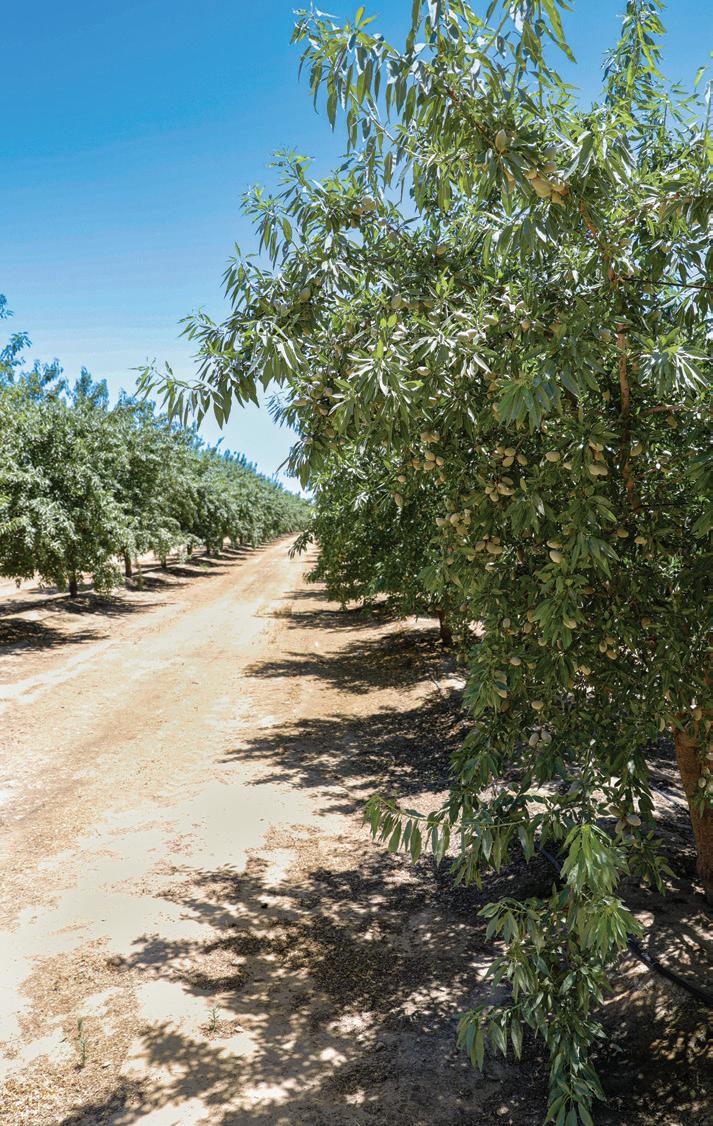
to reflect on efforts they are making in their operations. To that end, when completing the self-assessment, growers will have a better idea of how their practices stack up in relation to others via a document comparing their answers to the aggregate of other participants, of which tools are available for improving their practices, Ludwig said.
Devol added that he believes the industry’s participation in CASP over the years is commendable and should be
applauded. “As an industry, the almond industry has really stepped up to the plate, and we have a massive amount of our acreage assessed through this self-assessment, and I think it is something the industry should be proud of,” Devol said. “It took a lot of work. Hats off to the industry.”
Comments about this article? We want to hear from you. Feel free to email us at article@jcsmarketinginc.com
diKaP™ (0-31-50) improves P & K nutrition, increases plant respiration and antioxidant production.

Supreme™ Flowable (0-5-4) Improves crop set and size, and enhances nitrogen metabolism.

Contact us for more information at (208) 678-2610 @redoxgrows redoxgrows.com LISTEN TO OUR NEW REDOX GROWS PODCAST Scan the QR code to listen to our Podcast PROVEN TECHNOLOGY TO INCREASE YOUR YIELD & QUALITY DURING UNFORGIVING ABIOTIC STRESS FACTORS
Scan to learn more April 2023 www.wcngg.com 29
SmartProbe Technology for Early
Post-harvest Insect Pest Detection and Environmental Monitoring
By ZHONGLI PAN | Adjunct Professor,
Department of Biological and Agricultural Engineering, UC Davis
RAGAB KHIR | Project Scientist, Department of Biological and Agricultural Engineering, UC Davis
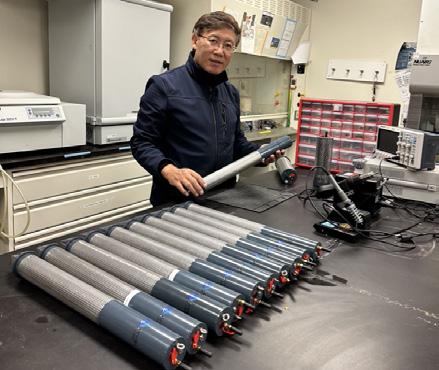
Insect infestation commonly occurs in food and agricultural products, including all nuts, during storage, stockpiling, processing, packaging and transportation. It can lead to several problems, including economic loss, health risks, product quality deterioration, adverse environmental impact and spread of invasive species. Infestations can cause significant economic losses to farmers, food producers and handlers as a large portion of their crops or stored food may become damaged or unmarketable. Some insects carry pathogens that can cause serious health problems for humans and animals. In addition, insect bodies and excrement can contaminate food, leading to food poisoning and other safety concerns. Infestations can result in reduced quality of products, making them less appealing to consumers and lowering their market value. The use
Award winning technology
of fumigants and chemicals to control insect infestations can have negative impacts on the environment, worker health and food safety. Some insects can be invasive species that can spread to new areas and cause further infestations and environmental damage. Therefore, effective control of insect infestations in food and agricultural products is very important for food and agricultural industries and businesses as well as consumers.
- SmartProbe for insect early detection and environmental monitoring




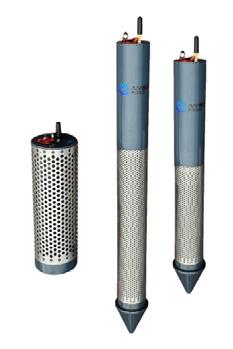
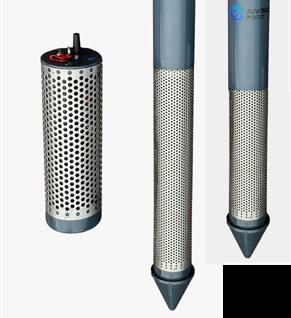
• Remote monitoring
• Reduce product loss
• Reduce labor cost
• Enable precision fumigation
• Designed for:
• Silos, stockpiles, bins, and processing facilities





• Tree nuts and ag products
Phone: (530) 207-0308
Email: info@aivisionfood.com

Website: www.aivisionfood.com

ContinuedonPage32
a b
Figure 1. Project leader Zhongli Pan developed different types of probes for use in bins/boxes, silos/stockpiles and hanging in processing and storage facilities. SmartProbes (a) for hanging, (b) inserting into products and (c) inserting in products in boxes and bins (all photos courtesy Z. Pan.)
AIVision Food Inc. 140B Street STE 5, PMB 378 Davis, CA 95616 Handling and Processing 30 West Coast Nut April 2023

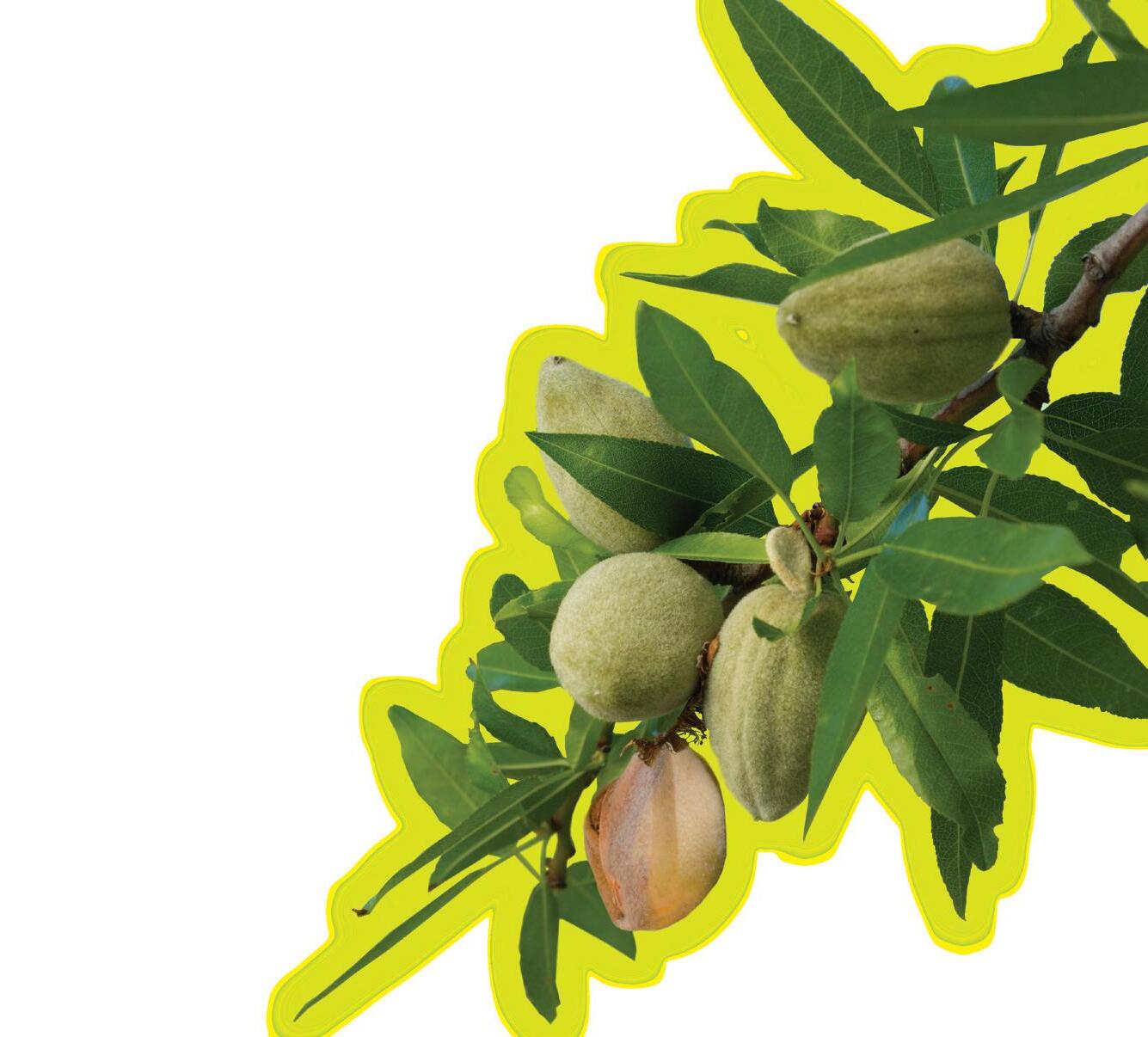




To learn more about Extinguish® Professional Fire Ant Bait and to find a list of regional sales representatives near you, visit CentralAntControl.com or call 800.347.8272. Always read and follow label directions. Extinguish is a registered trademark of Wellmark International. ©2022 Wellmark International. • Approved for all crops • Cost-effective ant control • Sterilizes the queen(s)/destroys the colony • Available in economical 25 lb. bags • A usage rate of 1-1.5 lbs. per acre • No aquatic setback; can be used up to water’s edge GET AHEAD OF FIRE ANTS TREAT NOW WITH EXTINGUISH ® ANT BAIT L I F E S C I E N C ES
almonds
Insect damage
INSECT DAMAGE
Current Insect Detection Methods

There are several ways to detect insects in food and agricultural products, including 1) visual inspection, 2)
traps, 3) X-rays, 4) infrared scanning, 5) acoustic detection and 6) DNA analysis. Visual inspection and traps have been used by industry, and the other four methods have not been used in practices due to their limited applicability and high costs. Visual inspection is the most common method used in nut industry and involves people simply looking for the presence of insects or their damage to food. It is time-consuming and inaccurate. Often insects cannot be detected until the population is large and significant damage has occurred.
Insect traps, such as sticky traps or pheromone traps, are used to attract and capture insects. They are placed in spaces in processing and storage facilities but require regular human inspections to detect and identify insects. X-rays were studied to detect insects inside packaged food products as they would show up as dark shapes on the X-ray image.
Infrared scanning is used to detect insects by measuring the temperature differences between the insects and their surroundings. Acoustic detection recognizes distinct insect sounds when they move or feed, and these sounds using specialized equipment such as microphones or vibration sensors. Insects can also be detected through DNA analysis of food or agricultural products, where samples are taken and analyzed for the presence of insect DNA.
Using the current visual inspection method, people usually cannot find the insects until the insect population is large, which causes significant damage to products. Our study has shown that in a warm environment at around 30 degree C, one insect caused damage to 23 kernels when it was in 100 almonds over three weeks.
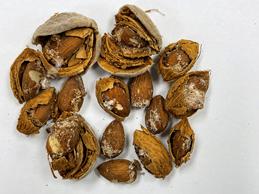
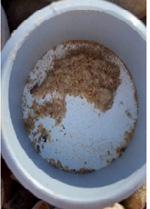
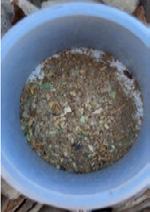
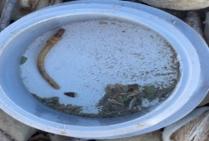
To prevent product damage and quality loss, processors and handlers may need to frequently apply chemical fumigation to kill the insects. There are several problems associated with chemical fumigation. Fumigants can


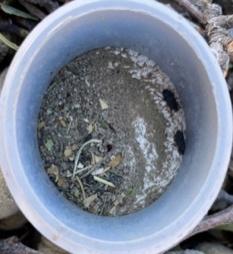
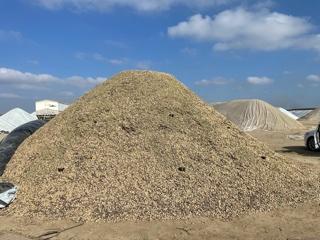
ContinuedfromPage30 3
Installed SmartProbes in stockpiled almonds Smart probes in stockpiled
Handling and Processing 32 West Coast Nut April 2023
Figure 2. SmartProbes detected insects including the larva of navel orangeworm, red flour beetles, bugs, and moths in stockpiled almonds, and simultaneously recorded the temperature and relative humidity.
Smart probes


be highly toxic to workers if not used properly. Exposure to fumigants can cause respiratory problems, headaches, nausea and, in severe cases, death. Fumigants can be harmful to the environment, and repeated use of fumigants can lead to the development of resistance in pests, which can make the treatment less effective over time. Fumigation is expensive, especially if large structures or volumes of products are treated. Moreover, there are no effective tools to determine appropriate fumigation timing, dosages and effectiveness, which results in inappropriate fumigation treatment, unnecessary product loss and cost. The insect activities, product quality and safety are affected by the environmental conditions such as temperature and relative humidity. Effective tools for detecting the insects early as well as monitoring environmental conditions are needed to enable food and agricultural industry to control insects effectively and reduce the chemical use and cost.



SmartProbe Technology
With support from Almond Board of California and California Rice Research Board, we have developed and commercialized a new SmartProbe technology for early insect pest detection and environmental monitoring (See Figure 1, see page 30) (patent pending, UC Davis). The technology has the capability of early detection of various types of insects once they emerge in food and agricultural products. The SmartProbe remotely monitors the activities of insects and alerts managers of storage and processing facilities to take proper actions for controlling the insects. It also monitors the temperature and relative humidity of stored products.
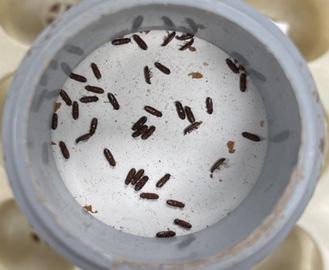
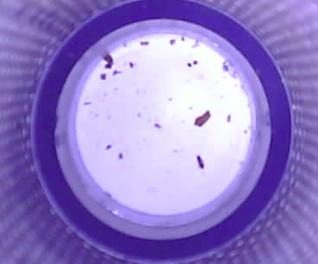
The system has two main components: a smart probe for insect detection and environmental monitoring and software with functions of cloud computing, data storage and alerting. The SmartProbe attracts insects, allows them to enter a collecting chamber, and then take photos to capture
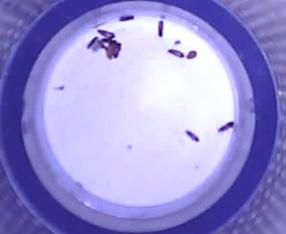
their images. It is programmed to take images periodically through the mobile device application or a computer.
The SmartProbe also has sensors to record temperature
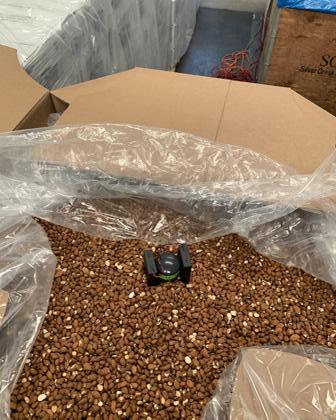
WALNUTS
WALNUT AND ALMOND PROCESSING EQUIPMENT Contact Us Today 3200 TU LLY ROAD, H UG H SON, CA • G ro ssi fa b r i ca ti on.co m 20 9.8 83.28 17 Serving the California Walnut & Almond Industry for over 25 years. Custom Sizing to Fit Your Needs CONTACT US TODAY TO GET A QUOTE FOR THE BEST PRICES • Receiving • Precleaning • Hulling • Drying • In-Shell • Shelling • Eletronic Sorting • Hand Sorting • Packaging Receiving • Precleaning Hulling • In-Shell • Shelling • Almond Drying • Eletronic Sorting • Hand Sorting • Packaging • Walnut Equipment Almond Equipment ContinuedonPage34
& ALMONDS
5 DAYS 25 DAYS 45 DAYS
April 2023 www.wcngg.com 33
Figure 3. Insects were detected by SmartProbe in a fiber bin of final products of almonds five days following installation.
Smart probes












ContinuedfromPage33



























and relative humidity. The taken images and recorded data are sent automatically to a server where images are saved and processed with an accounting algorithm to count the insects captured. The data relating to the number of insects, temperature and relative humidity are then sent to the user interface to be viewed at any time, and alerting notifications are transmitted to the facility managers when necessary. Different types of probes were developed for use in bins/boxes, silos/stockpiles and hanging in processing and storage facilities.




The new SmartProbe technology provides convenient, reliable and low-cost tools for effective pest management of tree nuts and other products. It can be a very useful tool for making fumigation and other insect control measures more effective. The SmartProbe technology received the AE50 Outstanding Innovation Award from the American Society of Agricultural and Biological Engineers. Now the probes are commercially available from AIVision Food, Inc.
SmartProbe Technology Demonstration Results












The SmartProbe technology has been demonstrated and used at almond, walnut, pistachio and rice processing and storage facilities. The results showed it was able to detect various types of insects





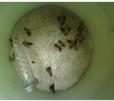
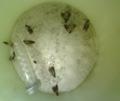
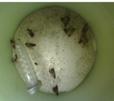
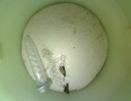
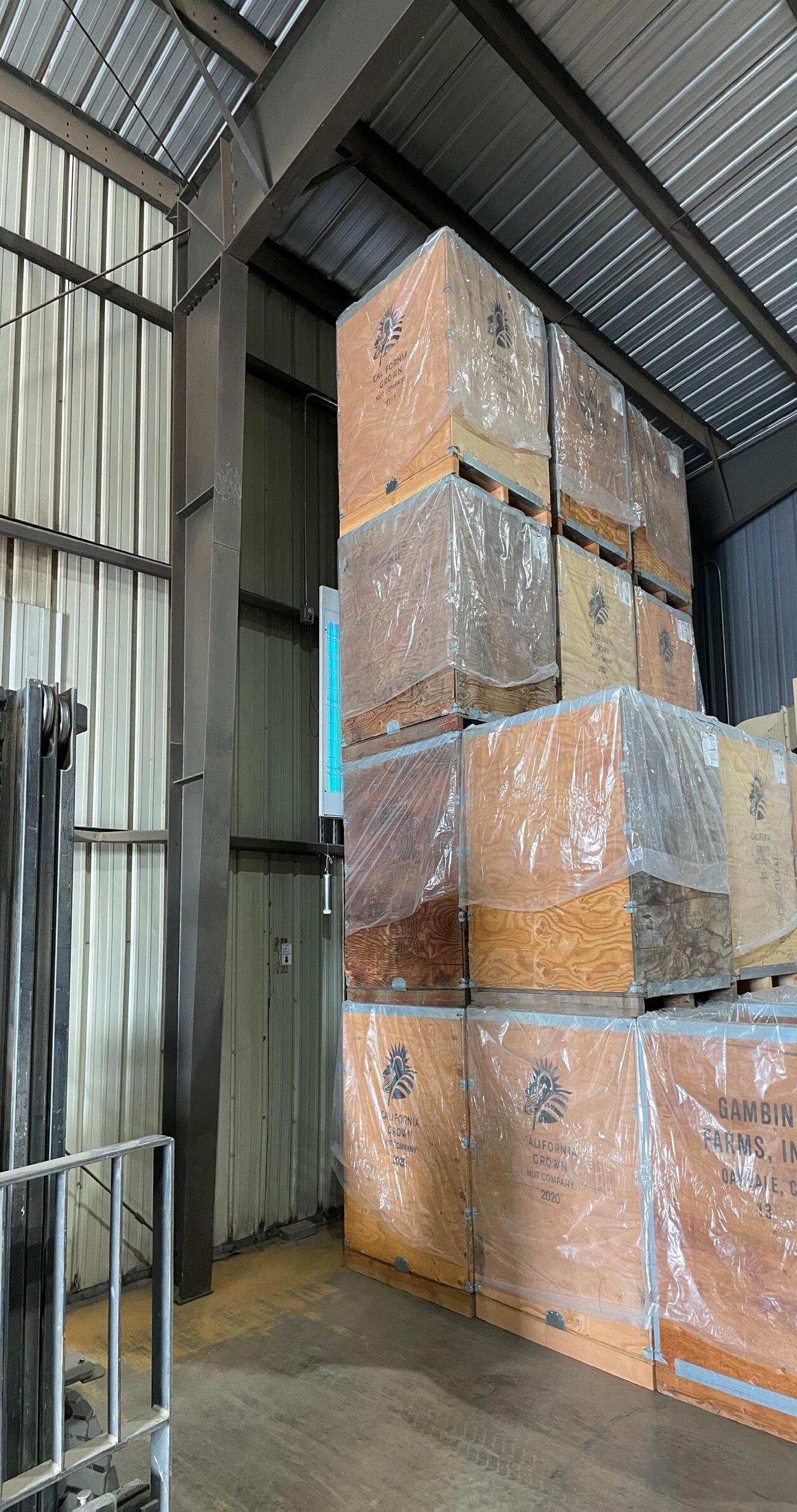 Smart probe
Smart probe
Handling
34 West Coast Nut April 2023
Figure 4. Insects were also detected by SmartProbes in the processing and packaging room of almonds.
and Processing
as they emerged in the tested products while human visual inspection failed to detect. For example, the SmartProbes detected insects in in-hull almonds during the stockpiling, which included the larvae of navel orangeworm, red flour beetles, bugs and moths, and simultaneously recorded the temperature and relative humidity of stockpiled almonds (See Figure 2, see page 30). The probes also detected insect activities in packaged almonds. For instance, insects were detected in the fiber bin of the almond products after five days of the probe installation (See Figure 3, see page 30). Additionally, the SmartProbe was able to detect insects in the processing and packing rooms of the almonds (See Figure 4, see page 32).
The SmartProbe can be placed in products held in packages, storage bins, containers and stockpiles. The early detection and notification of
insect infestation can solve common problems in pest management, such as product and quality loss, inappropriate amount of chemical use, food safety and workers’ safety concerns and high management costs.
Applications and Benefits of SmartProbe
SmartProbe can be used to remotely detect insects early and monitor environmental conditions in various food and agricultural products during storage, processing, handling and transportation/shipping, eliminating the cost of human inspection and associated risks.
SmartProbe can be placed in products in packages, bins, shipping containers, warehouse storage and bulk products.
SmartProbe is the only fully demonstrated smart technology for remote insect detection and available for com-
mercial applications.
The early insect detection and notification avoid or minimize the loss in nut products and quality, enable new and effective pest management methods with reduced chemical use, cost and negative impacts on food safety, workers’ health and the environment.
The application of SmartProbe can make fumigation more effective, eliminating the guesses in fumigation time. SmartProbe can be an effective tool for determining the appropriate dosages of fumigants and assessing the effectiveness of fumigation. It makes fumigation only to the infested products possible.
Contact us to see how we can help! (559)584-7695 or visit us as www.superiorsoil.com Serving California since 1983
about this article? We
to hear
free
us at article@jcsmarketinginc.com April 2023 www.wcngg.com 35
Comments
want
from you. Feel
to email
ALMOND CO-PRODUCT VALUE IN FOOD INGREDIENTS, RENEWABLE FUELS
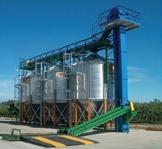
 By CECILIA
Associate Editor
By CECILIA
Associate Editor

Value and demand for almond co-products appears to be on the rise with food ingredients, livestock and poultry feed products, and biomass use leading the way.
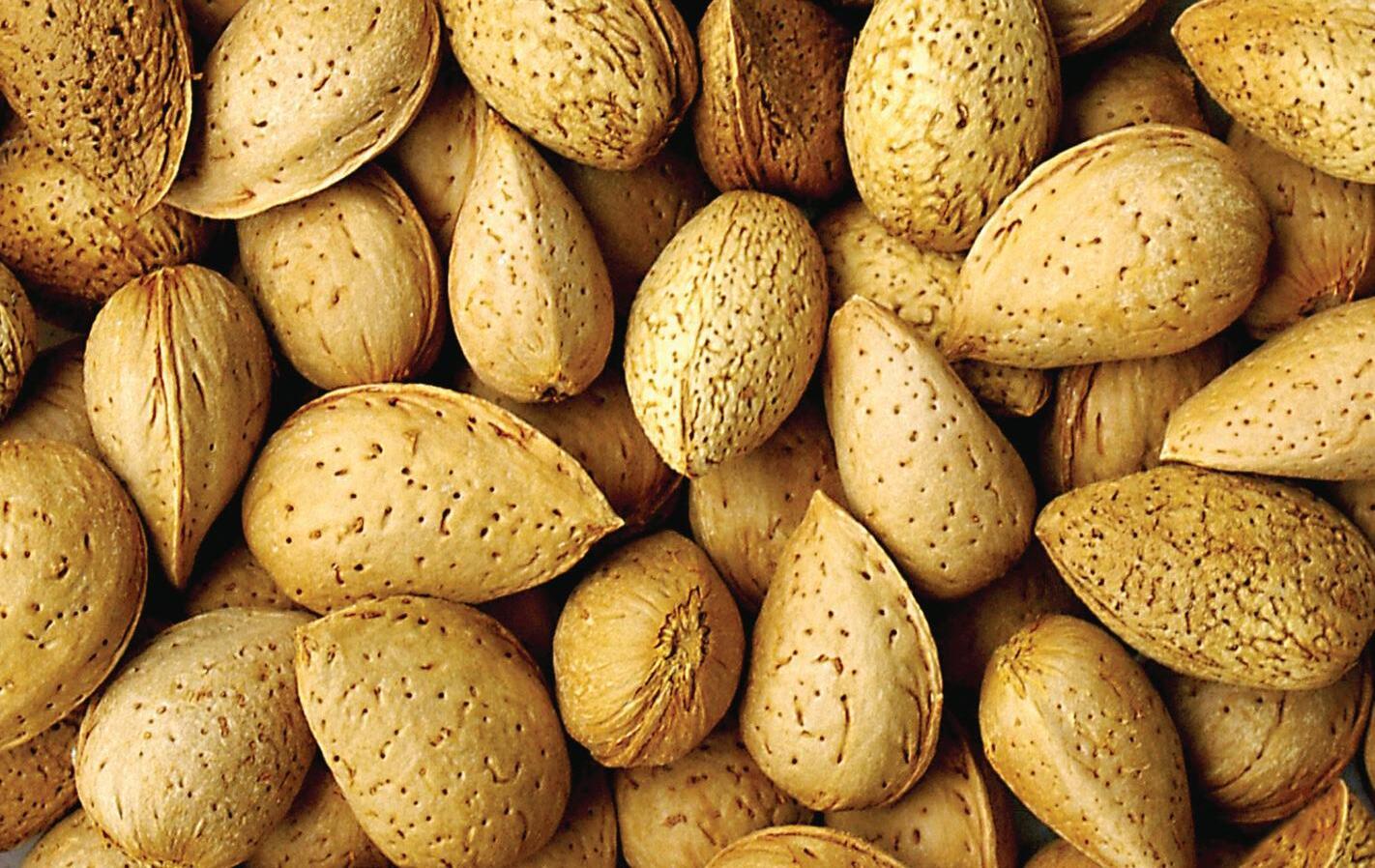
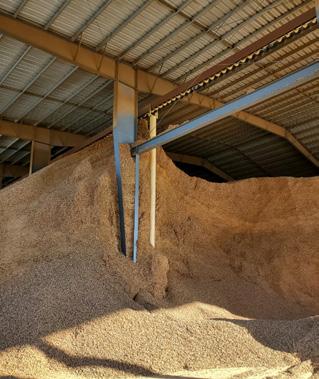
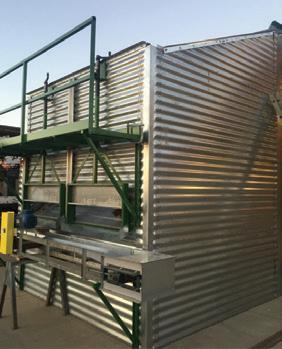
Two of the most promising food ingredient applications had a debut at the Almond Conference and drew favorable reviews, said Josette Lewis, chief scientific officer at Almond Board of California. A food development company, Mattson Co., brought a nutrition bar containing almond hulls and a coffee beverage containing roasted almond hulls. Both were offered for taste testing
at the conference and were well received, Lewis said.
The nutrition bar created by Mattson contains 39% of an adult’s daily fiber requirement and supplies half of the effective carbohydrates in a diet. Adding the almond hulls reduces the calories by 30%, Lewis said.
“And they taste good,” Mattson’s Madison Gurrola said, noting the bar matched the Clif bar in fat and protein, but added five grams of fiber. Almond hulls were 15.25% of the total formula.
Gurrola said in her conference
presentation that the first step in the development process was evaluating the hull material for nutritional, hedonic and functional properties. Test evaluations included bulk density, water absorption, and nixtamalization, a process that attempts to make hulls softer by breaking down fibers. That process was not effective, she noted.
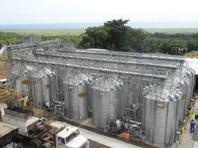
Hull uses identified as the best opportunities for use as food ingredients were in baked goods to enhance the nutritional appeal with added fiber and to reduce costs, nutrition bars for inexpensive fiber and as a bulking agent in ground coffee, replacing up to 10% to 20% percent of coffee beans. Mattson’s testing showed that hulls reduced coffee bitterness. Roasting the hulls also provides a kill step.
Partially replacing ground coffee beans with roasted almond hull powder yielded positive results and a good sensory experience with complex flavor, Gurrola said. The
Kraemer & Co. Mfg., Inc. Almonds • Pecans • Pistachios Walnuts Let Kraemer & Co. Design and Build the Facility that is Right for Your Needs Nut Drying & Storage Facilities 3778 County Road 99 W Orland, CA 95963 530-865-7982 │ Fax: 530-865-5091 CA Cont. Lic. #485-547 │ Web: www.kcomfg.com • Burners • Fans • Drying Systems • Storage & Handling • Custom Manufacturing • Spiral E-Z Let Downs • Installation & Service • Knock Down Kit • Modular • Corrugated / Galvanized Construction • Do-It-Yourself Option • Low Lead Time • 6 Ton Capacity Walnut Drying Bins ContinuedonPage38
PARSONS
|
Handling and Processing 36 West Coast Nut April 2023
Promising new uses for almond co products being pursued include a fiber packed nutrition bar and bulking agent in ground coffee.


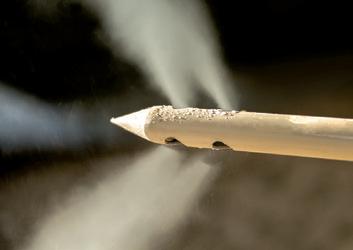
471 Industrial Ave. • Ripon, CA 95366 • 209.599.6118 • www.jackrabbit.bz CO-JACK • Compact and lightweight design • Available with trailer or on skids • No permit or license required • Easy to operate and maintain Rodent Control System Protect your investment from rodent damage with the safe and effective CO-Jack carbon monoxide delivery system Contact Us Today for More Information. Bright white smoke to detect connected openings.
roasted hull powder could also be used to make a non-caffeine beverage at a lower price than coffee.
Use of almond hull powder in bread, the largest segment in baked goods, resulted in a darker-colored product. Gurrola said they also found the powder inhibited gluten development. They concluded hull powder may be better suited for cookies, crackers or pancake mixes.
Other almond hull uses explored by Mattson included use as an emulsifier or thickening agent. Almond hulls could possibly be used as an


egg replacer in baked goods or as a cost-reducing additive in processed foods.
Lewis said the potential volume of hulls used as food ingredients will depend on the number and types of food product uses and could range from 300,000 pounds per year for one product such as a nutritional or snack bar to two million pounds per year for multiple products using hulls. Lewis noted the volume is a very preliminary analysis.
For use in a food product, hulls will need further processing. The cost and whether it is done by the processor or the food company or
another intermediary would be determined by the product development plans, Lewis said. There are examples of ag waste being diverted to food ingredients such as apple peels and wine grape pomace. In those cases, additional processing has been done by an intermediary of the food company.
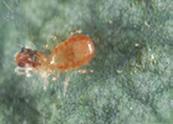
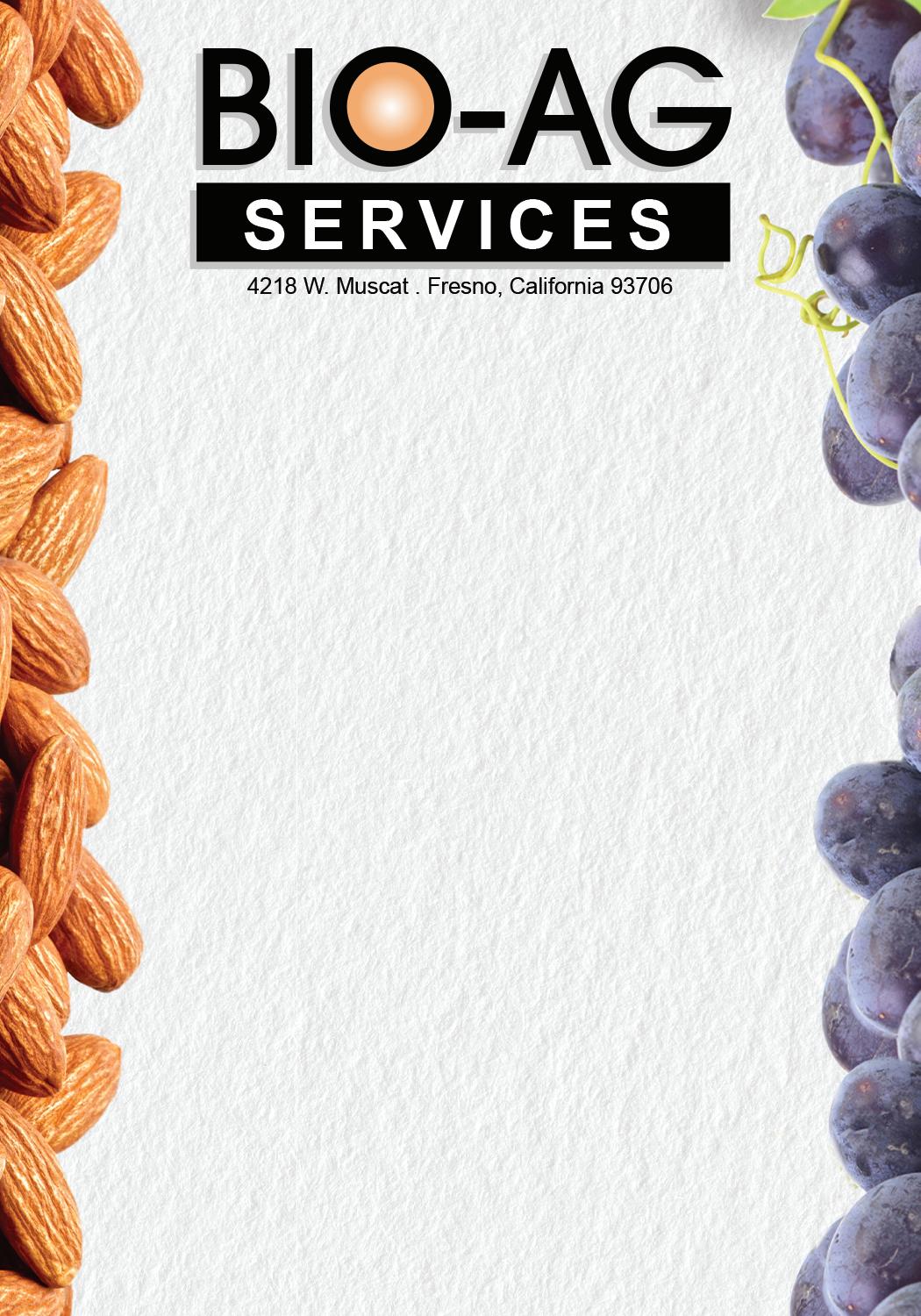
Lewis said that almond processors or hullers and shellers are not being asked to eat into their profits to do additional processing. Use of hulls as a food ingredient will only happen commercially if it is financially feasible for both the processor and food company. Right now, she added, it is feasible for hulls to compete as an ingredient with additional processing.
Poultry, Livestock Feed Opportunities
Almond hulls have been part of total mixed rations on dairies for many years with research funded by ABC and Biomass Workgroup finding hulls could be fed at a rate of 12 pounds per day per head, replacing some flaked corn and silage. Research is also showing new markets in beef cattle and poultry rations.
A limiting factor in use of hulls in beef cattle feeding is transportation as most cattle feeding operations are located in the mid-west. Research at Kansas State University did suggest that hulls can be considered as an alternative to prairie hay in limit fed growing diets without reducing growth performance or feed efficiency.
The market for hulls in poultry feed has potential due to the location of many broiler and egg operations near almond production areas.
In an ABC funded study, researchers from University of Georgia in Athens concluded that the fermentable sugar, dietary fiber and polyphenols in almond hulls make them a good alternate ingredient in broiler diets. Supplementation of almond hulls at 2.5% and 5% increased body weight gains and feed conversion ratio. They concluded hulls are feasible to reduce feed costs. In addition, meat quality was
ContinuedfromPage36
DISTRIBUTOR OF BENEFICIAL INSECTS: PROGRAMS: SIX SPOTTED THRIPS PREDATORY MITES CRYPTOLAEMUS (Mealybug destroyer) For further information contact: Rob Weaver: 559-977-2563 Greg Gaffney: 559-240-5126 www.bioagservices.com • Soil and Plant Products • Integrated Pest Management • Biological Control • Laboratory Services Handling and Processing 38 West Coast Nut April 2023
Independent Consultants Serving Growers Since 1975
not affected, and fiber helped reduce body fat.
Bio-Industrial Manufacturing
Abundance of feedstock coupled with local opportunities are driving an initiative in the northern San Joaquin
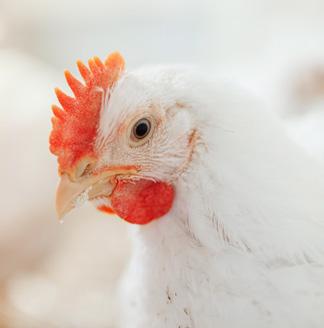
Valley. Karen Warner, CEO of the BioEconomy, Agriculture and Manufacturing (BEAM) initiative, is hoping to drive scale-up of bio-based products. The BEAM initiative came from the economic development organization Opportunity Stanislaus and counts Almond Board as one of its cross-sector partners.
Warner said work is being done to attract a broad range of bioproduct firms.
Two companies, Corigin and Aemetis, have announced plans for almond co-product use. Aemetis plans to produce aviation fuel at a Riverbank facility. According to their website, they have signed agreements to secure 130,000 tons of wood waste per year to use at the facility. Corigin has plans to use orchard waste and shells to make biochar for use as a soil amendment. JATCO, a Stanislaus County plastics manufacturing company and part of the BEAM innovation leadership council, has been exploring integration of
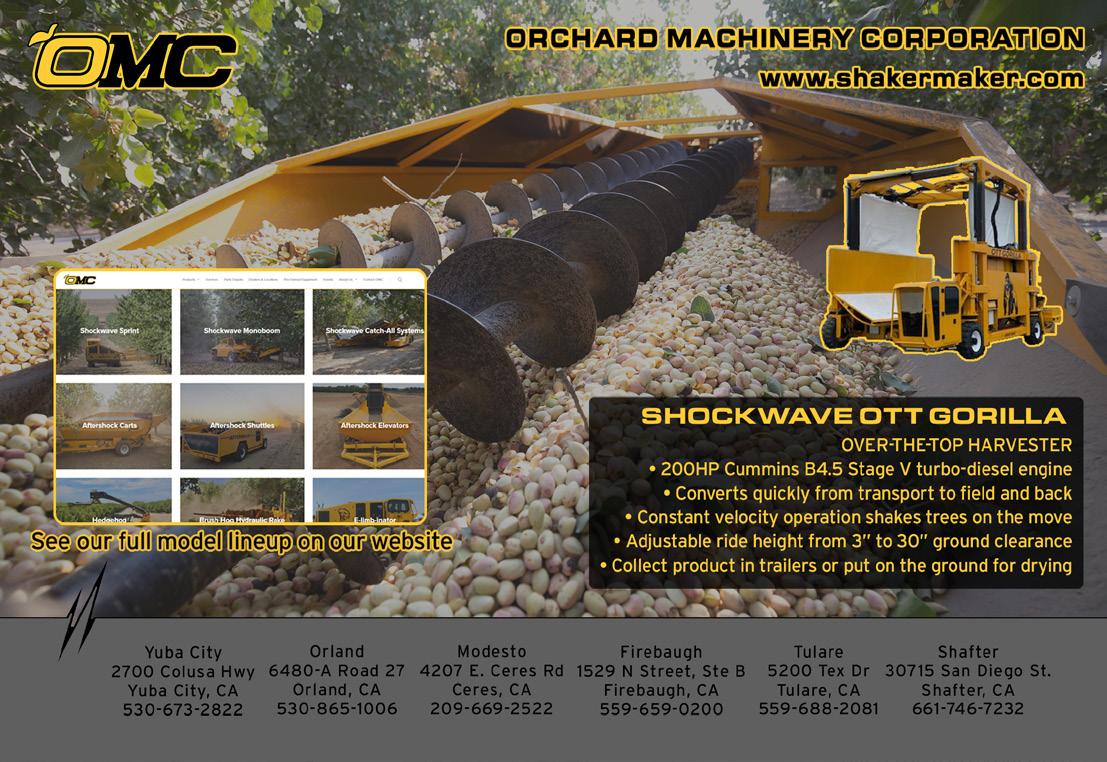
almond co-products into its materials.
Ecostrat CEO Jordan Solomon, a speaker at the conference, explained how BDO Zone ratings can help drive new almond biomass-based market development in California. A BDO Zone rating is a standards-based assessment of biomass feedstock and infrastructure properties of a region for development potential of new biofuel, renewable chemical, biogas or bioproduct manufacturing plants.
Solomon said almond biomass presents ideal technical specs for many biofuel, renewable chemical and RNG applications. In addition, feedstock cost in California is lower than in the southeastern U.S. Biofuel and renewable chemical producers are able to pay more for biomass feedstock, Solmon said, than former wood to electricity producers.
Comments about this article? We want to hear from you. Feel free to email us at article@jcsmarketinginc.com
April 2023 www.wcngg.com 39
The market for hulls in poultry feed has potential due to the location of many broiler and egg operations near almond hulling sites.
Employer Checklist for the New Year
By THERESA KIEHN | President/CEO, AgSafe
The start of the new year signaled the onset of new employer laws and regulations which have an impact on how you manage your business and employees. While some of these regulations might have been on your radar, I imagine a few of these will take you by surprise and will require procedure adjustments. This article will provide an overview of these new laws and regulations as well as practical solutions for implementation.
California Wage Increase
On January 1, 2023, the new California minimum wage rate reached $15.50 for all employers, regardless of employer size. January marked the final installment of California’s seven-year minimum wage rate increase. Moving forward, employers will need to continue to plan for increases as high as 3.5% each year to reflect annual cost of living increase. The Governor is required to make the minimum wage determination by September 1 for the next year, which gives businesses a short window to plan for their employee costs in the next calendar year. Additionally, pay close attention to your local ordinances as some have imposed minimum wage rates higher than the state. For example, the cities of Sonoma, Santa Rosa and Petaluma have minimum wage rates currently higher than $15.50 per hour,
and as an employer in those communities, you would be required to pay those higher rates.
In addition to increasing the minimum wage, legislation also created a parallel wage increase for overtime exempt employees. The law requires exempt employees to earn twice the minimum wage rate. For instance, in
2023, all employees are required to compensate exempt employees at no less than $31 per hour with a 40-hour workweek with an annual salary of $64,480. And just like the minimum wage requirement, a yearly increase, not to exceed 3.5% in one year, will be
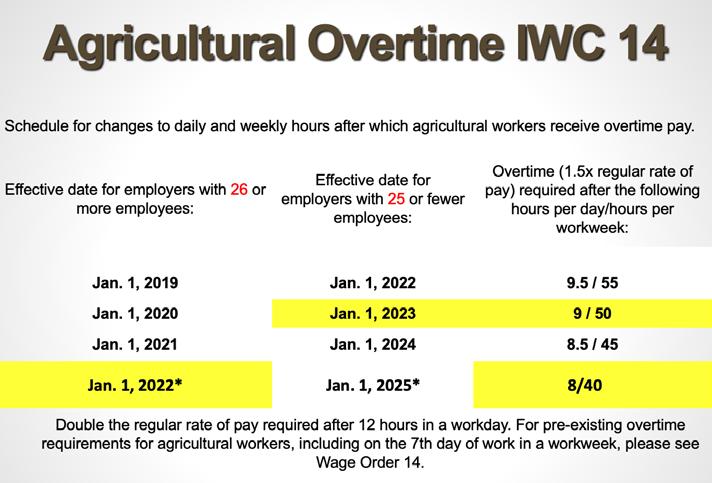
ContinuedonPage42
40 West Coast Nut April 2023
This chart from the State of California Department of Industrial Relations provides an annual breakdown of regular pay per day and workweek.





Crop Consultant Home of the Independent Crop Consultants June 21, 2023 MODESTO, CA TO REGISTER SCAN QR CODE OR VISIT progressivecrop.com/connect-sponsor/ SPONSORS TO REGISTER SCAN QR CODE OR VISIT progressivecrop.com/connect/ ATTENDEES LIMITED TO 60 SPOTS LIMITED TO 12
enacted after reaching the $31 an hour rate. For additional questions on these wage increases, please visit the State of California’s Department of Indus trial Relations FAQs at dir.ca.gov/dlse/ sb3_faq.htm.
Overtime for Agricultural Workers
In 2016, the California legislature also passed Assembly Bill 1066 which created a gradual timetable for agricul tural workers as defined by Wage Order 14 to receive overtime pay like those in other industries. In January 2022, large employers (those with more than 26 employees) and in January 2025, small employers (those with 25 or less employee), are required to pay overtime to workers once they work more than an eight-hour day or more than 40 hours in a workweek. AB 1066, now in its fifth year of implementation, re quires large employers to pay overtime at 1.5 regular rate of pay if an employee works more than eight hours in a day
or more than 40 hours in a workweek. Small employers, on the other hand, pay overtime wages once a worker
defined as a spouse, or a child, parent, sibling, grandparent, grandchild, domestic partner or parent-in-law. Ensure
The first part of the regulation requires employers with 15 or more employees to include pay scale information for all formation on pay scale ranges must be ment and three years after their tenure. Penalties for non-compliance are steep
Helping Farmers Grow NATURALLY Since 1974
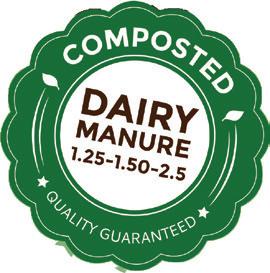
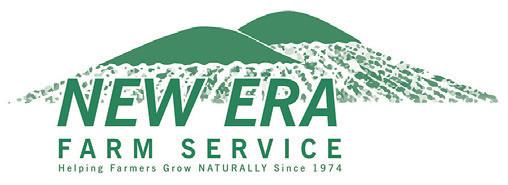

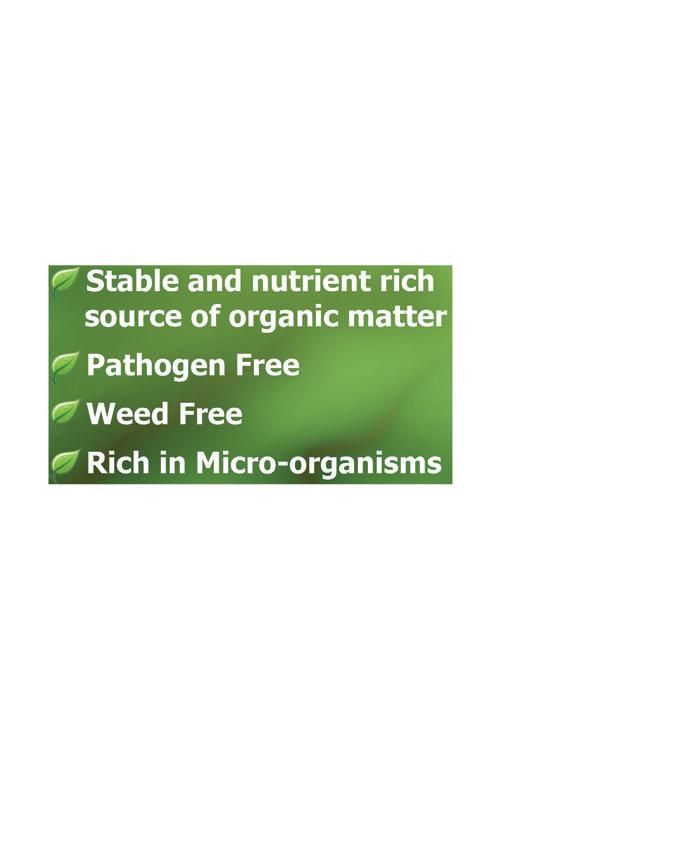

ContinuedfromPage40 O ce: 559-686-3833 Fax: 5 59-686-1453 2904 E. Oakdale Ave. | Tulare, CA 93274 newerafarmservice .com
42 West Coast Nut April 2023
tions, and if you identify any discrepancies, fix the issue immediately. When an employee requests pay scale information, ensure it is provided promptly.
The second part of the wage transparency regulation applies to employers with 100 or more employees and their requirement to provide pay data reporting to the California Civil Rights Department (CRD). Employers in this category began providing pay data to CRD last year; however, SB 1162 adds additional reporting requirements which are substantial. Additional changes are as follows:
Requires a private employer that has 100 or more employees hired through labor contractors within the prior calendar year to file a Labor Contractor Employee Report covering the employees hired through labor contractors in the prior calendar year. The employer must also disclose the ownership names of all labor contractors used to supply employees. Labor contractors are required to supply all necessary pay data to the employer.
Requires that Payroll Employee Reports and Labor Contractor Employee Reports include the mean and median hourly rate of employee groupings (that is, groupings of employees with the same establishment, job category, race/ ethnicity and sex.)
Eliminated the option for an employer to submit a federal EEO-1 report to CRD in satisfaction of its state pay data reporting requirement.
Changes the annual deadline for submitting pay data reports to the second Wednesday of each May.
Authorizes CRD to obtain penalties against employers that fail to timely file their pay data reports, as well as against labor contractors that fail to provide data to client employers who must submit Labor Contractor Employee reports.
If you have over 100 employees, which includes farm labor contract employees, be sure to start this process early. There are several resources on the CRD website, including excel spreadsheet examples. To review templates, resources and FAQs, please visit calcivilrights.ca.gov/paydatareporting/.
These are just a few of the new laws and regulations which will impact the industry in 2023. It is always a best
practice to check in with your counsel annually to ensure your employee handbook reflects applicable regulations and your workplace practices are compliant. This practice can be costly; however, when considering liability and penalties for non-compliance, it is a strategic use of financial resources and mitigates risk. If you have questions or need assistance with implementing any of these new laws and regulations, please contact us at safeinfo@agsafe. org or call us at 209-526-4400 and we
would be delighted to assist.
Since its formation in 1991, AgSafe has trained over 100,000 growers, farm labor contractors, packers, shippers and processors, along with their supervisors and workers, in the most critical safety, health, human resources and pesticide compliance issues.
article@jcsmarketinginc.com
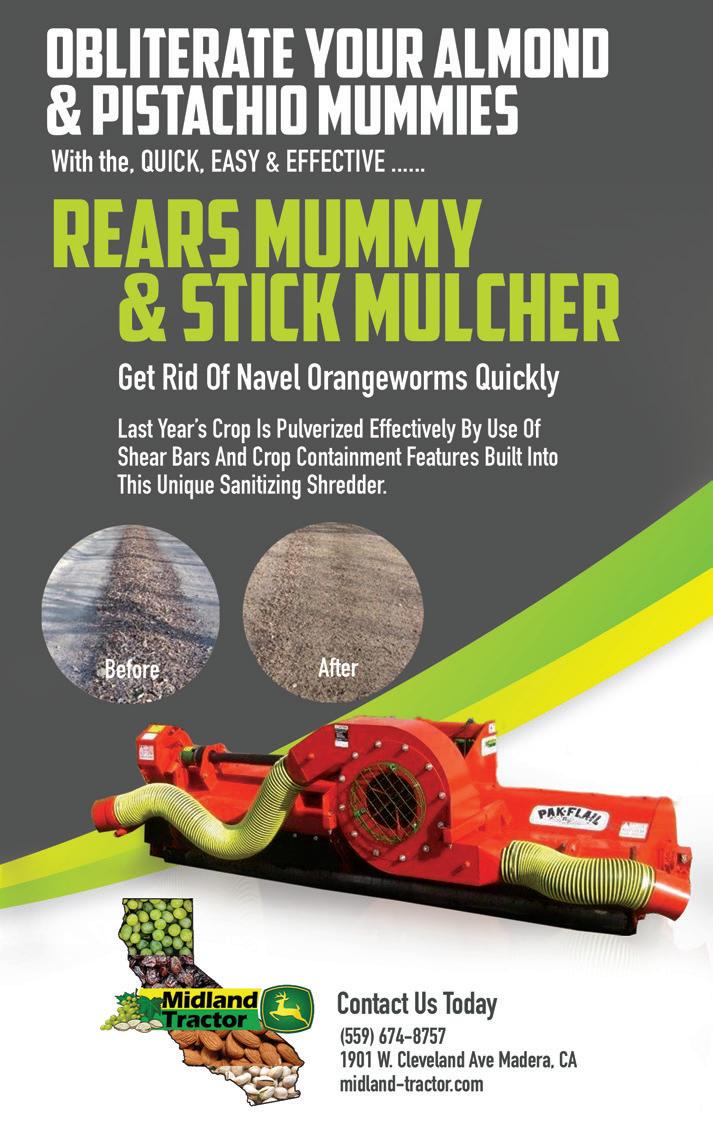
April 2023 www.wcngg.com 43
Comments about this article? We want to hear from you. Feel free to email us at
WALNUT CONFERENCE PANELISTS SERVE UP IRRIGATION SCHEDULING ADVICE
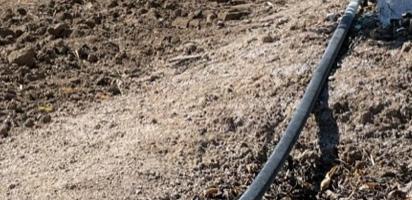 By CECILIA PARSONS | Associate Editor
By CECILIA PARSONS | Associate Editor
Arobust discussion on irrigation scheduling, tools, benefits of adopting new technology, along with decision making advice was provided by experienced panelists at the California Walnut Conference.
When to initiate irrigation, how much water to apply and how often are standard debate topics among walnut growers. While answers to these questions vary with location and soil type, growers are always seeking to improve their water management and ensure nut quality.
Use of the pressure chamber has been a game changer with walnut irrigation scheduling, Tehama County walnut grower and packer Hal Crain said.
“You are getting actual information from the tree. If we can get that in real time, there will be huge benefits. It has brought us to a new level of irrigation management.”
Crain said use of pressure chamber in walnuts can be optimized if indicator sites in the orchard are identified. Labor can be an issue at first, but less will be needed as site mapping moves forward.
A UC ANR publication notes that when used correctly, a pressure chamber can help growers and consultants save on irrigation costs and improve orchard health. It measures plant water tension by applying pressure to a sev-

ered leaf and stem enclosed in an airtight chamber. The pressure required to force water from the stem equals the water potential and is measured by an external pressure gauge.
Josh Barton of Barton Orchards in Stanislaus County said he uses several tools for irrigation scheduling, including aerial imaging, tensiometers, a pressure chamber and CIMIS data. The beauty of the pressure chamber, he said, is that the data from it can be compared with other sources. As long as you are consistently checking, the pressure chamber is the most cost-effective tool, he said.
Understanding Trends in Weather
Scheduling improves, Barton said, when there is an understanding of trends in weather and tree use. Over time, he said, you become familiar with orchard water use and can compare with pressure chamber readings and determine optimal timing for irrigations.
The stem water potential readings from a pressure chamber used with evapotranspiration data pull the plant’s water needs together. The pressure
ContinuedonPage46
44 West Coast Nut April 2023
Valentina Giron using a pressure bomb in a Tehama County almond orchard. Use of this device has been a game changer in irrigation scheduling (photo by Clarissa Reyes, UCCE.)
When walnut blight strikes, it can ravage your yields. KASUMIN® bactericide is proven to be effective against walnut blight — including copper-resistant strains. As the only member of FRAC Group 24, its unique mode of action makes it a smart addition to resistance management strategies. And, with its rainfast properties and locally systemic activity, it’s the go-to choice for keeping walnut blight from rearing its ugly head. To learn more about the UPL portfolio of trusted solutions for tree nuts, talk to your local UPL representative or visit UPLTreeNutPortfolio.com.

WALNUT BLIGHT IS EVIL UPLTREENUTPORTFOLIO.COM SMART SOLUTIONS FROM PREPLANT TO POSTHARVEST.








STOP ITS SPREAD BEFORE IT’S TOO LATE Always read and follow label directions. KASUMIN is a registered trademark of Hokko Chemical Industry Co., Ltd. The KASUMIN logo, UPL, the UPL logo and OpenAg are trademarks of a UPL Corporation Limited Group Company. ©2023 UPL Corporation Limited Group Company. KASM-2301 KASUMIN® BACTERICIDE
chamber readings help growers hone in and be more precise with irrigation.
Water stress, caused by underwatering or overwatering, is a known factor impacting walnut kernel quality. Curt Pierce, panel moderator and UCCE irrigation advisor, noted the importance of using available tools to guide irrigation scheduling and run times to prevent water stress. Overwatering walnuts is the No. 1 cause of darkened kernels, Crain confirmed.
“We see too little or too much water. It can be traditional water use, but is a huge stressor,” Crain said. “More water isn’t always the solution.”
Ken Shackel, pomology specialist at UC Davis, said edible yield in walnuts improves meeting tree water needs. Mild water stress tends to produce somewhat darker kernels, but overwatering results in bad-tasting nuts. Answering a question from the audience about correlation between kernel color
and irrigation scheduling, Shackel said the full ET does not have to be applied in walnuts, and that half of ET by end of season could be sufficient.
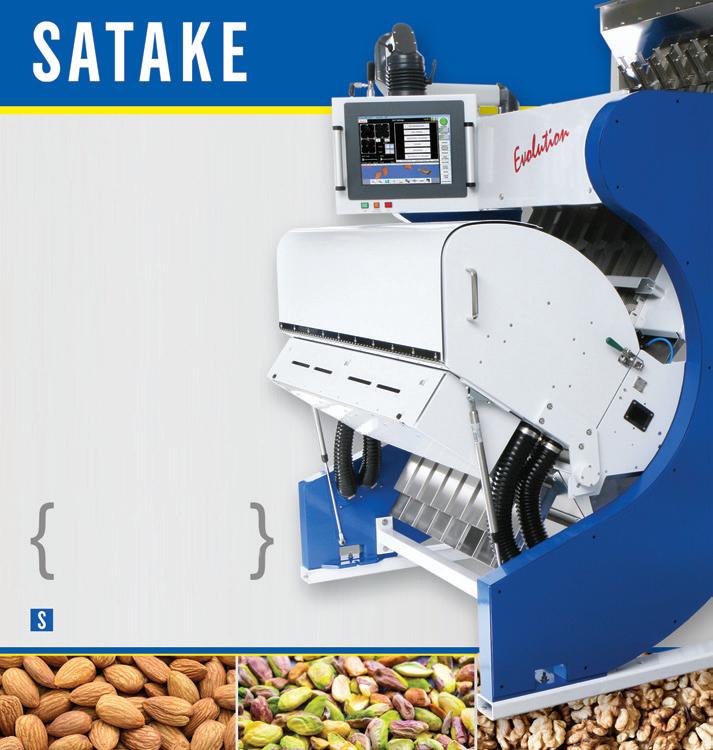
“The trees may surprise you when you check and the water status is ok but you haven’t applied the full ET,” Shackel said. The main roots are in the top three feet, he explained, but roots can
go down 20 to 30 feet and trees may be tapping into moisture there.
Allen Fulton, UCCE irrigation and resources advisor emeritus, said that 50% ET may be a ‘best case’ scenario with orchards closer to rivers or streams. In west side locations with shallower soils, the fraction declines, and 85% ET may be more likely.
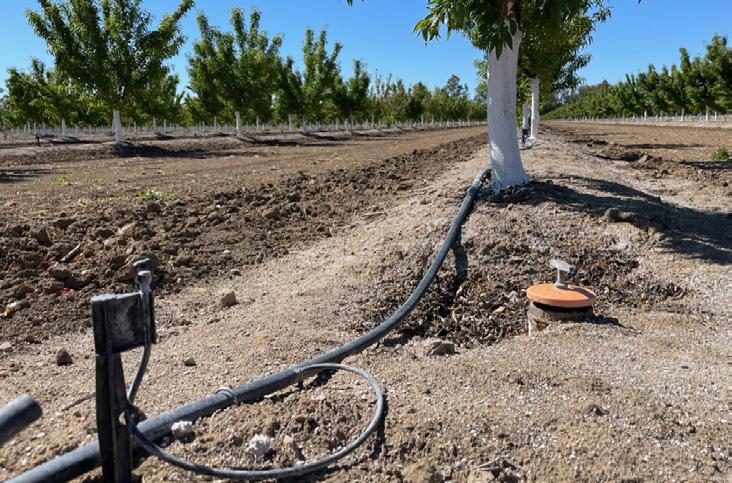
“There is a lot of range,” Fulton said.
Grower Capability Matters
Intermittent irrigations can also be beneficial to tree health, Barton said. Number of acres and soil types will have to be considered for a grower to accomplish that type of scheduling, he said.
There can be an issue with ideal irrigation timing and what a grower can do, panelists agreed.
“We all have unique situations with our orchards. Number of acres, system capacity and timing are all factors. You have to make the best decision for you,” Barton said.
Crain said that in general, breaking up irrigations can be a good idea; the most benefit from pulse irrigations would be where application rates are heavy. Soils with a lower intake rate are good candidates for pulse irrigations, Fulton said.
Getting the irrigation amounts and timing right will also help with edible yield. Mild stress can result in somewhat darker kernels, Shackel said, but overwatering negatively affects kernel flavor.
ContinuedfromPage44
46 West Coast Nut April 2023
A dual micro-flood irrigation system in an orchard. This dual system provides more flexibility for growers, for frost protection when necessary and leaching salts (photo by C. Pierce.)
Technology overload (the number of products and services designed to help with irrigation) can cause struggles, panelists agreed. Pierce shared his experience at a farm call where irrigators had access to scheduling tools but lacked instruction on use.
There is a lot of new technology out there, Fulton said, but orchard size, variability in orchard sets and limited time for irrigation management pose barriers to use. He suggested one solution would be to identify orchards that use the most water but don’t perform to expectations and use your time to explore reasons why.
“Sort out which technology fits your needs. Every technology has strengths and weaknesses.”
Barton said his first consideration with new technology is to determine the intended use. It also must be user friendly and allow for easy interpretation of data.
“We all want data, but interpreting it can be a challenge,” he said.
Using soil moisture monitoring as an example, Barton said the system is very accessible, and depending on how you cater your platform to your operation, you can use GPS to give an overview of tree status by hovering over sensor sites. The information is used as a management tool and delivered to the irrigators. Another benefit, he said, is weather station data that can be extrapolated. Ability of the irrigator and moving information down the chain of command is also important, Crain said.
Regional versus site-specific CIMIS estimates may also be an issue in determining irrigation scheduling, Pierce said. Shackel said he did not think there would be much variation as using spatial CIMIS would give the best estimate for a specific location.
Tree Needs a Priority
Answering an audience question about turning off water when windfall nuts begin to hit the ground, Barton said at his operation, they began windfall harvest, picking up those nuts so irrigation can resume. Late-season irrigations are still necessary to ensure quality, he added. Late-season stress
can impact quality, Crain confirmed. Meeting tree water needs should be a priority.
Addressing a remote sensing question, Barton said this technology has come a long way since he began using it 12 years ago.
“You have to ask yourself, ‘What is the intended use?’” he said. “Is it to improve production, promote tree health or use less water?”
Walnuts have been a challenge with some of the remote sensing devices, Crain said, but he has been persistent in overcoming these, and he thinks they
could become valuable tools in the near future.
Stem water potential has been a challenge to measure for about 100 years, Shackel said.
“The new technology is great, but use the bomb as a check. Keep it in your back pocket.”
Comments about this article? We want to hear from you. Feel free to email us at article@jcsmarketinginc.com

April 2023 www.wcngg.com 47
Canine Assisted Vole Scouting Shows Promise
By MITCH LIES | Contributing Writer
An Oregon State University research project aimed at improving the identification of active vole holes is showing promise and one day could help hazelnut growers find and treat for the pests.
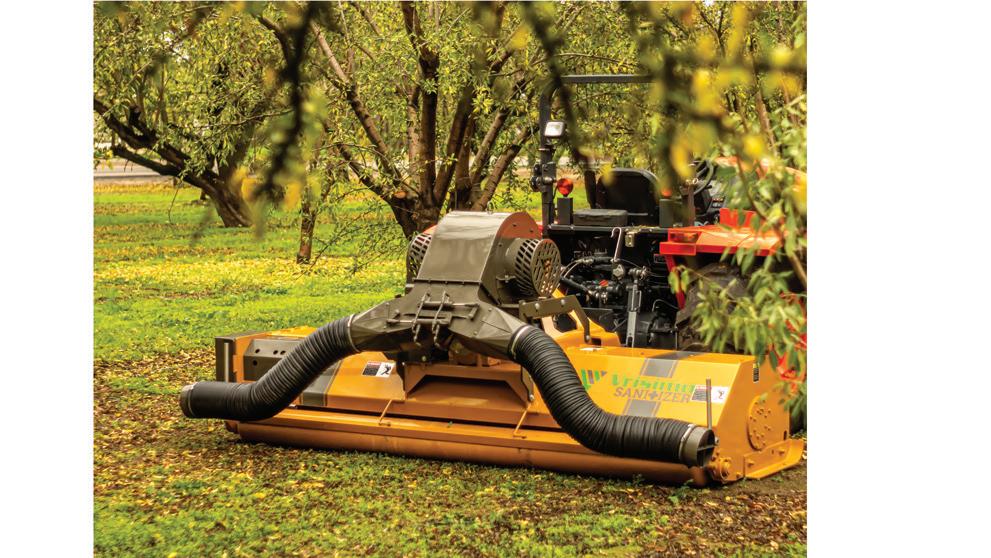
The project, initiated last year, involves using dogs to identify which of the many vole holes in a field or orchard are being used. Better under-
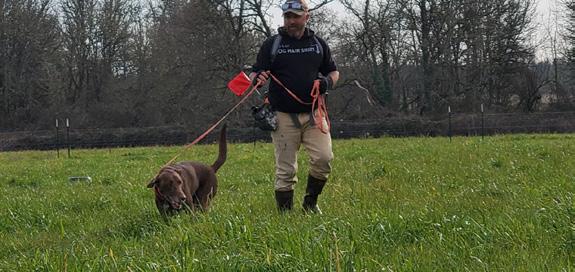
standing of where voles are in a field or orchard can help growers more accurately and quickly trap or treat for the pests.
“The idea is to take the million vole holes down to a few vole holes that actually have a vole associated with them right at that moment,” said Dana Sanchez, a wildlife extension biologist at OSU who is involved in the project.
The project involves trapping for voles in January and February before their breeding season.
“Doing this proactively before the breeding season starts is going to be more effective than waiting until the height of the growing season when voles have gone through umpteen generations,” Sanchez said.
“We are talking about doing this in the dead of winter, so January and February,” she said. “It doesn’t mean that no voles are breeding, but most are not. I see that as a time for getting more bang for your buck. For every vole you kill, you are reducing the productivity capacity in that area.”
‘They Can Be Devastating’
Voles, specifically gray tailed voles, “can be devastating” to hazelnut trees, according to Nik Wiman, orchard crops specialist for OSU Extension.
“They can very quickly girdle trees at the base by chewing off the bark and cambium as they work their way around,” Wiman said. “Depending on how far around the trunk they get, the tree dies a slow death and it makes it difficult for growers to decide which trees are worth keeping and which need to be culled.”
If the girdle doesn’t extend more than 25% of the circumference of a tree, the tree will be weaker but will live and produce nuts, Wiman said.
“For shallow-rooted trees, they may chew off the bark on exposed roots rather than go for the main stem,”
ContinuedonPage50
48 West Coast Nut April 2023
Dog handler David Leer and Daphne search for voles as part of an Oregon State University research project on using dogs to detect active vole holes (photo by Vanessa Blackstone.)

Wiman added. “I would say the tree can tolerate more of that than the trunk girdling.”
Intercropping a seed crop in young orchards, an increasingly common practice, can lead to particularly bad damage, Wiman said, as after the crop is harvested and their homes terminated, voles start attacking trees.
In cover crop situations, voles typically will stay in the alleys, Wiman said, as long as the cover crop is maintained. But once it is terminated, they will attack trees.
Wiman said he has seen particularly high damage to trees after a neighboring grass seed field is harvested and tilled. “The voles suddenly find themselves without food or cover and then migrate into the orchard and start attacking trees,” Wiman said.
Usually, trees on the edges of orchard are most damaged in these cases, Wiman said. “But voles can also use tile lines for getting around, so damage can be anywhere.
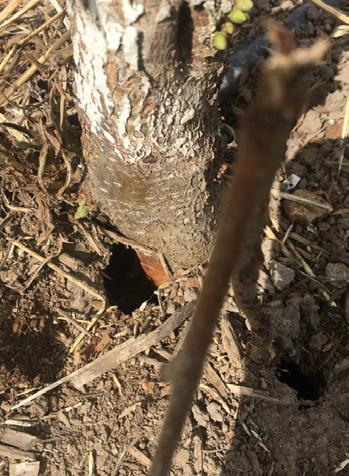

“I think in some cases they are after the moisture in the sap, but the cambium wood is very nutritious too,” Wiman said. “I’ve documented an example where they selectively attacked only a specific pollinizer variety in an orchard, so they may have preferences for certain trees.”
Promising Results
In preliminary results of the two-year research project, the researchers found that canine assisted detection far outperformed human detection in determining which vole holes were active.
“When we totaled search time invested across farms and teams for our abbreviated season, it was evident that canine detection teams (97 minutes) were far faster in field scouting and identifying which holes to trap compared to an unassisted human (232 minutes),” the researchers wrote in a report on the study.
Researchers conducted the research in two vegetable farms, two pastures and one hazelnut orchard in their first year.

ContinuedfromPage48
Voles girdle hazelnut trees by chewing off their bark and cambium, often causing trees to die a slow death (photo by N. Wiman.)
50 West Coast Nut April 2023
Depending on how far around a tree a vole gets, trees can continue to live and produce nuts, but at a reduced rate (photo by N. Wiman.)
Researchers were forced to cut short their season because of complications with housing and handling voles due to an outbreak of leptospirosis, a disease that infects mammalian species worldwide and one that can spread rapidly through vole populations. Still, they characterized the preliminary results as promising.
The researchers are focusing on pasture crops in 2023 because of complications they encountered in vegetable crops and hazelnuts in 2022 and because pasture crops tend to have a more consistent population of voles, according to Nick Andrews, an associate professor of practice in OSU’s College of Agricultural Sciences, who also is involved in the research.
“We are hoping if the results are still promising [in 2023] that the general approach of locating the voles will be applicable in a lot of other cropping systems,” Andrews said.
Laborious, Time Consuming
Scouting fields and orchards for voles can be laborious and time consuming, Andrews said. Burrow entrances can persist for years, and only through identifying signs of recent activities such as fresh scat can active tunnels be identified.
“There can be thousands of vole holes per acre with large tunnel networks,” the researchers wrote in their preliminary report, “but the holes and runs themselves cannot really indicate number of animals alive at a given time.”
Dogs, according to the report, “inherit from their wild forbearers tremendous abilities to scent, process and track odors.” These abilities are being used for security, medical and sporting purposes, but agriculturists are only beginning to explore different applications, the report stated.
In 2022, the researchers used two teams consisting of a dog and a trainer to identify active vole holes and compared their success rate to human scouting. They are planning to use three teams in 2023. They started training the dog teams in late 2021 in
preparation for the 2022 season.
The success rate in 2022 “was definitely a green light to go ahead,” Sanchez said.
The researchers are focusing on six farms this year and will rotate the canine detection teams among the farms.
After the trapping portion of the project, the researchers plan to do damage assessment.
Hot Spots
Sanchez envisions growers someday utilizing canine-assisted detection in hot spots of fields or orchards rather than scouting an entire field.
“What we are hearing is there are many farmers who recognize that there are reservoir areas from which animals seem to be dispersing, like the higher-quality areas from the vole’s point of view,” Sanchez said. “So, if we can hit them when the population is low and
make people more effective at targeting their treatment, then that would help.”
Sanchez noted that as part of the project, an OSU veterinarian is analyzing the strain of leptospirosis that is infecting the voles, a project that could help in developing of vaccines and other preventative measures for dairy cows, pet dogs and other mammals that suffer from the disease.
“It is nice to know that the animals that we are taking in this project are contributing in a significant way to another project,” Sanchez said.
The project is being funded by a USDA Western Sustainable Agriculture Research and Education program grant.
Comments about this article? We want to hear from you. Feel free to email us at article@jcsmarketinginc.com
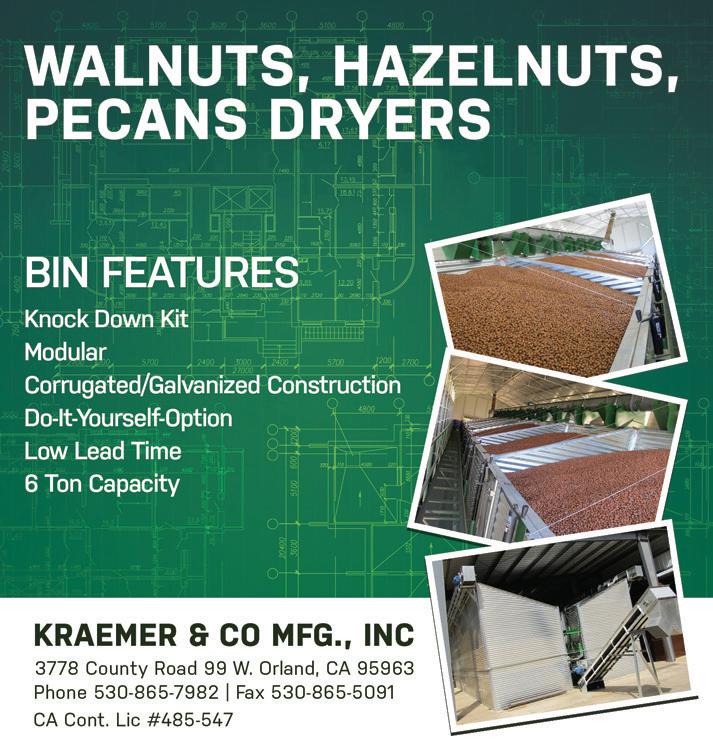
April 2023 www.wcngg.com 51
View from the Top What the Nut Industry Wants In
the 2023 Farm Bill
Richard Matoian of American Pistachio Growers voices priorities for the new federal policy.
 By CATHERINE MERLO | Contributing Writer
By CATHERINE MERLO | Contributing Writer

Tree nuts and other specialty crops have long been overshadowed in farm bill considerations by big program commodities like corn, wheat and soybeans.
But, as the 2023 farm bill takes shape, specialty crop leaders are making their voices heard. They were among the more than 30 speakers from diverse agricultural and food organizations who addressed the House Committee on Agriculture’s farm bill listening session at World Ag Expo on February 14 in Tulare, Calif. Across the board, they sought understanding and support for their unique challenges and opportunities.
On the listening end of the 10-member panel were House Agriculture Committee Chairman Glenn “GT” Thompson, a Republican from Pennsylvania, and Speaker of the House Kevin McCarthy, whose California congressional district covers parts of Kern, Fresno, Tulare and Kings counties. The panel also included House Ag Committee members from California: David Valadao (R), Jim Costa (D), Doug LaMalfa (R), John Duarte (R) and Salud Carbajal (D). Also involved from the House Committee on Agriculture were Republicans David Rouzer from North Carolina and John Rose of Tennessee. Although not on the House Ag Committee, Rep. Jimmy Panetta (D), who serves California’s 19th District, also joined the listening panel.
Among those addressing the “farm team” legislators was Richard Matoian, president of American Pistachio Growers (APG). A non-profit trade associ-
ation, APG represents more than 800 growers in California, Arizona and New Mexico in raising awareness of the benefits of the U.S.-grown nuts.
Matoian’s comments were not only endorsed by his board of directors. APG is also a member of the Specialty Crop Farm Bill Alliance as were many groups represented at the World Ag Expo gathering. The alliance is a national coalition of more than 200 organizations representing growers of fruits, vegetables, tree nuts, nursery plants and other products. They have agreed on a package of farm bill proposals to be delivered in unison for greater emphasis to policymakers. Matoian was helping do that in Tulare as he did below for West Coast Nut.
The 2018 farm bill expires September 30, 2023, with the new one expected to start October 1. The bipartisan panel in Tulare vowed to get the new farm bill out on time.
“There’s a long way between now and the finish line of voting for the farm bill,” Matoian says. “We need to make sure that, at every opportunity, we make our voice heard.”
Q. You led your comments to the farm bill panel with pistachio industry facts and figures. Can you recap those?
Pistachios have grown significantly since the year 2000. California has gone from roughly 100,000 bearing acres to about 465,000 bearing acres. The growth percentage has significantly outpaced that of almonds and walnuts.
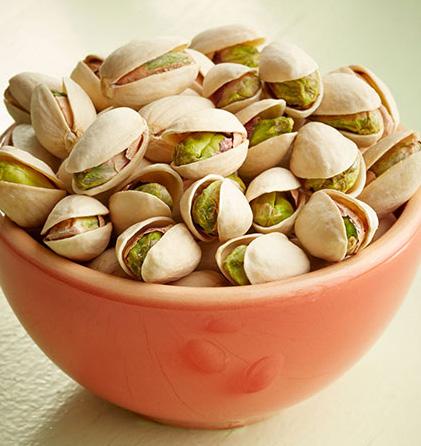
The other thing I mentioned is that four congressional members at the hearing (Costa, Valadao, Duarte and McCarthy) represent over 90% of the current bearing acreage of pistachios in California. There’s some additional acreage going on in Congressman LaMalfa’s district, north of Sacramento. Today, 99% of the nation’s pistachio production is in California. Of that, 97% is concentrated in the central and southern San Joaquin Valley.
Q. Your first request of the farm bill panel addressed water and drought. What were you hoping those members can do?
To whatever extent the ag committee can influence policy, we need their
ContinuedonPage54
Richard Matoian of American Pistachio Growers wants tree nuts and other specialty crops to get their due attention in the 2023 farm bill (photo courtesy American Pistachio Growers.)
52 West Coast Nut April 2023
Matoian and other specialty crop leaders want Market Access Program funding doubled to $400 million. MAP promotes ag products generically in foreign countries (photo courtesy American Pistachio Growers.)
Want Consistent Proven Yield Increases? How does an increase of 999 pounds and $1,670/ac over 3 years sound?
Yield: ‘Gold Hill’ Pistachio – 3 Year Results

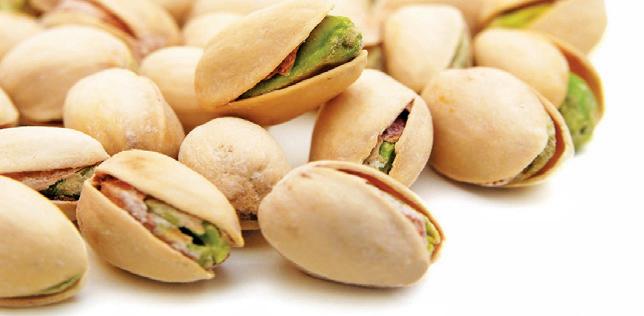
AGRO K
Use Agro-K’s “Science Driven Nutrition” approach to maximize nut set and nut size.
Maximizing yields year in and year out starts with maximizing nut set. Achieving consistency in set and minimizing alternate bearing years is key to consistent yields and higher profits in pistachios. The secret is ensuring the tree has the right nutrients at the right time in the right forms and right mix. Using a combination of Agro-K phosphite and Dextrose/Lactose (DL) based foliar nutrients, including Vigor SeaCal, Sysstem LeafMax, Top Set DL, and Micro SeaMix, designed to help growers meet peak nutrient timings at critical points of the crop cycle.
Nut set can be influenced by boron which enhances pollination. Boron synergizes calcium and enhances its affect. Molybdenum plays a direct role in nut set and retention and nitrogen utilization. Top Set DL is a unique boron-moly blend designed for synergistic application with Vigor SeaCal to address early season nutrient needs and maximize nut set – especially in cool wet springs.
Sysstem LeafMax is a low pH, phosphite based fertilizer that delivers a highly systemic (phloem and xylem mobile) nutrient
mix with rapid and complete uptake and fast support to early leaf and root development. Zinc is essential for maximum leaf size, vascular function and root growth. Magnesium, iron, manganese and copper are all are critical for complete chlorophyll development and part of Sysstem LeafMax and Micro SeaMix. Large leaves and chlorophyll production is key to maximizing photosynthesis that generates the carbohydrate production in the tree not only for the current year’s productivity but also as storage for the following year. Low carbohydrate production can be tied directly to increased alternate bearing issues and higher incidence of blanks. Implementing an Agro-K nutrient program will reduce blanks and improve off year yields.
Yield results from three consecutive years of replicated data, on the same trees, are shown in the chart above. Fully replicated plots, conducted on the same trees over three years, demonstrate Agro-K’s “Science Driven™” nutrition programs can consistently improve yield, quality and profitability.
Speak to an authorized Agro-K distributor today to learn more about increasing your yields with a science driven nutrient program.
AGRO-K CORpORAtiOn 8030 Main Street, NE • Minneapolis, MN 55432 800-328-2418 • www.agro-k.com Science-Driven Nutrition ™
PISTACHIO GROWERS
Bisabri Ag Research, Newman, CA, 2016-2018 – n In-Shell Open n Reported n Gross $/Acre 9000 8000 7000 6000 5000 4000 3000 2000 1000 0 lbs/acre 2016 2017 2018 Grower Soil Program (GSP) 2016 Grower Soil Program (GSP) 2017 Grower Soil Program (GSP) 2018 Agro-K Program + GSP 2016 Agro-K Program + GSP 2017 Agro-K Program + GSP 2018 1585 b 1930 4552 2210 a 2111 4745 2439 b 2345 4923 2826 a 2701 5108 $3184 $3730 $7865 $4092 $4173 $8184 Products Available At: ®
immediate and urgent attention. What’s affecting us most are these Endangered Species Act biological opinions. They are what cause water to flow through the Delta and out to the ocean to save the various species. We believe those biological opinions have more flexibility than what they say or suggest. We want that flexibility so, when we have all this water flow, some of it can be diverted for agricultural use. The other thing would
be drought declarations that could be made to provide low-interest loans to producers or provide funding for infrastructure building.

Q. You also asked for a funding increase for the navel orangeworm sterile-fly program. Can you explain?
Currently, there is about $10.5 million from the federal government to run a sterile fly facility in Phoenix. They’re bringing sterile navel orangeworm flies into California and spreading them

over about 4,000 acres of pistachios and almonds to see what effect they have on the native wild population. Our goal is to reduce that population so we can reduce pesticide use. The program is in its fourth year. We need more funds to get more researchers involved to determine if the project is actually having success.

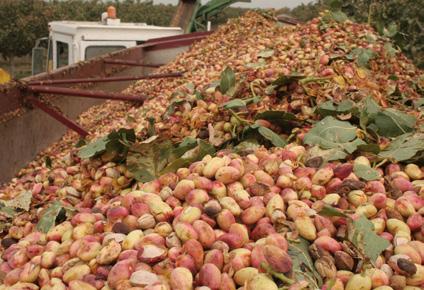
Q. The Market Access Program, or MAP, was also on your list. What are you asking for?

Between 60% and 70% of U.S. pista-
 The pistachio industry recommends continuing the federal crop insurance program and raising the Adjusted Gross Income and payment limitations (photo by C. Merlo.)
The pistachio industry recommends continuing the federal crop insurance program and raising the Adjusted Gross Income and payment limitations (photo by C. Merlo.)
ContinuedfromPage52
Flanked by House Ag Committee Chairman Glenn “GT” Thompson (left) and California congressman Doug LaMalfa, Speaker of the House Kevin McCarthy thanks participants for their input at February’s farm bill listening session in Tulare (photo by C. Merlo.)
www.tomra.com/food TOMRA 5C 54 West Coast Nut April 2023
Transforming global food production to maximize food safety and minimize food loss by making sure Every Resource Counts™.
chio, almond and walnut production is exported. MAP provides federal dollars, and we have to provide matching dollars, to promote our product generically in a foreign country. The problem with the program is that it’s been funded at $200 million for two decades. More than 80 organizations participate in MAP. We’re all competing with each other for this same pool of $200 million. We believe that dollar amount needs to be increased to at least $400 million.
Q. You also addressed Section 32 purchases, the government purchases of commodities.
It’s not a single block of cheese that people get through this program. There are many other commodities that are part of it. The government has done a Fresh Box Program. During COVID-19, they had Whole Meal Programs. Each box of food could not exceed a certain dollar amount. Commodities like pistachios couldn’t participate because our price point was very high. In recent years, almonds, walnuts, pistachios, prunes, table grapes, dried cherries and raisins have all been a part of this program. When there is an oversupply of our product, like this last year when we had our largest-ever carryovers of almonds, pistachios and walnuts, we want the government to purchase it. The food is given to programs geared to needy families, senior citizen, homeless shelters and other outlets. We want to ensure the program continues.
Q. Your last request involved federal crop insurance. What do you want farm bill policymakers to keep in mind?
Crop insurance is important, and we want to make sure it gets continued. Very few people know that pistachios were one of last permanent crops to gain federal crop insurance. Pistachios did not have a federal crop insurance program until 2012. It’s been a good program, although not every grower participates. We want our legislators to know how important the program is to our industry and the need to keep this USDA-backed program in place.
Q. Can you clarify how the Adjusted Gross Income and payment limits apply to government programs?
Think about the Coronavirus Food Assistance Program and the Ag Trade Mitigation Program. If you had an AGI level of $900,000 or more, you couldn’t participate in those programs. There is also the payment limitation of $250,000. For some commodities, that seems like a lot of money. But for some specialty crops, the payment limit of $250,000 is a drop in the bucket. We’re not saying to remove the cap. We’re saying it needs to be adjusted upwards to reflect the fact that specialty crops are, in fact, a high-
er-income crop on a per-acre basis than, say, corn or soybeans.
Q. What’s the next step for these farm bill recommendations?
The Specialty Crop Farm Bill Alliance has a legislative committee that, at any and every opportunity, provides the information to policymakers so they know what our position is. A consistent message from all alliance members is important.
Comments about this article? We want to hear from you. Feel free to email us at article@jcsmarketinginc.com
BUY IT, GROW IT, SELL IT. GUARANTEED.
ORDER PISTACHIO TREES FROM WONDERFUL NURSERIES AND YOU’LL HAVE A GUARANTEED HOME FOR YOUR CROP
It’s simple. Wonderful Nurseries works closely with our sister company, Wonderful Pistachios to offer Pistachio Purchase Agreements to clients planting our trees. Whether you are purchasing our Wonderful Pistachio Rootstock™ (WPR) or standard UCB-1 rootstock from seed, we have a home for your product. Contact us today to place your order and grow your rootstock into guaranteed sales!
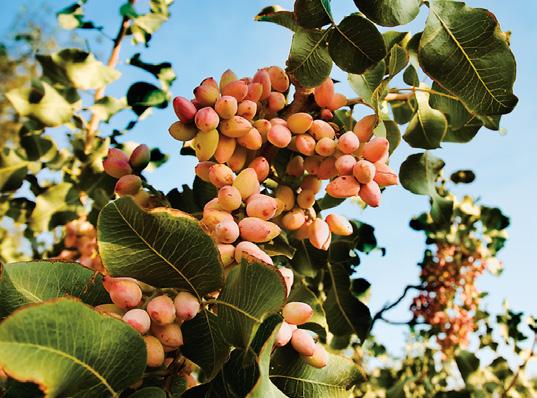
WonderfulNurseries.com 661.758.4777 27920 McCombs Road, Wasco, California 93280 © 2023 Wonderful Nurseries LLC. All rights reserved. WONDERFUL, WONDERFUL NURSERIES and the accompanying logos are trademarks of Wonderful Nurseries LLC or its affiliates. The Wonderful Pistachio RootstockTM Trees are the subject of U.S. Plant Patent Nos. PP26915, PP26916, PP27318, PP27319 and PP27436. SERVING YOUR VINE, ALMOND AND PISTACHIO TREE NEEDS
April 2023 www.wcngg.com 55
RECENT RAINS PROMPT CONSIDERATIONS FOR GROUNDWATER RECHARGE OPTIONS
By KATHY COATNEY | Contributing Writer
California and much of the west has seen the driest conditions in at least 1,200 years. While recent rains have improved the situation, California still isn’t out of the drought. Groundwater recharge still holds promise for mediating some of the impacts of drought on groundwater tables.

With interest in recharge surging given the recent rains, it’s a good opportunity to check in with one of the research pioneers in this practice to see what we know so far.
Helen Dahlke, associate professor of integrated hydrologic sciences with UC Davis, has done several years of research on groundwater recharge working primarily on the impact groundwater or winter recharge has on nitrate leaching and nitrogen cycling in soil, mainly in the root zone. The research was done on perennial crops, including nut crops and vineyards to look at the effects of extended flooding on plant response and yield in the following growing season.
Recharging the Aquifer
The intent of on-farm recharge is to recharge the aquifer so that the water can be pumped out later. Current rainfall is producing natural recharge. The rain is falling onto the soil, and depending on where a farm is located, the soil could be clay or silt loam, or coarser-textured soil like sand. A certain amount of that rainfall would go into the soil and potentially move deeper past the root zone to the groundwater table.
“We think some soils, particularly the sandy ones,









Tyler Marshall (360) 319-3789 tmarshall@paritycorp.com parityfactory.com Reduce your variance by 99% Can your processing software pay your growers automatically? Reach out today to schedule your free demo Grower payment and management suite One-click tracing and inventory control Integrated with QCIFY nut testing 56 West Coast Nut April 2023
can definitely infiltrate a lot more water, and so this is why I think a combination of precipitation plus intentionally directing floodwaters onto the soil could really allow us to infiltrate a lot more water than what would naturally occur. And that definitely can help the groundwater aquifer underneath it,” Dahlke said.
To intentionally direct the floodwaters, growers would create dikes or levees to hold the water within a field or orchard. “We typically recommend putting berms around, maybe one- to two-foot-high earth mounds,” Dahlke said, adding this is something growers can do with equipment they have on the farm.
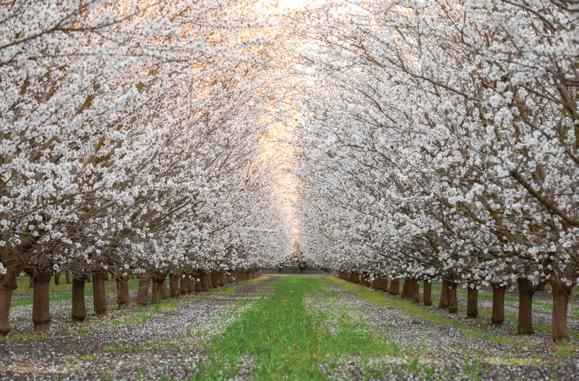
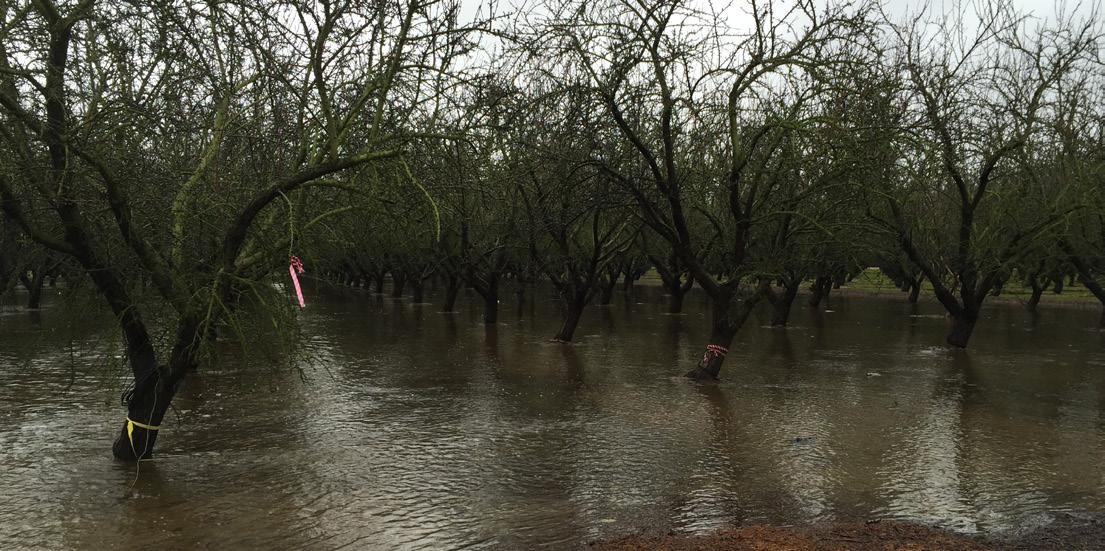
Most of Dahlke’s experiments were done between the end of February and early April, much later in the season when crops are typically coming out of dormancy. Fields were flooded for two and four weeks, time periods typical of recent flooding, Dahlke said.
“Any active growth requires oxygen. When you have standing water, often what happens is that the amount of air or oxygen that we have in the soil is going down quickly, which can create so-called hypoxic conditions. And the roots, besides taking up water and nutrients for a tree to grow, they also have to do gas exchange, which is called root respiration. So, when there is an actively growing tree or crop sitting in standing water, then that gas exchange can no longer happen and they can’t take up oxygen through the root system,” Dahlke said, and that often means the plant goes into metabolic stress and can die.
 UC Davis’ Helen Dahlke has researched the impact groundwater or winter recharge has on nitrate leaching and nitrogen cycling in soil, mainly in the root zone (photo by H. Dahlke.)
UC Davis’ Helen Dahlke has researched the impact groundwater or winter recharge has on nitrate leaching and nitrogen cycling in soil, mainly in the root zone (photo by H. Dahlke.)
ContinuedonPage58 Jim Britton jimbritton1022@gmail.com (559) 994-1221 Bri on Ag Consulting WHEN TO IRRIGATE? MAKE THE RIGHT DECISION AT THE RIGHT TIME IRRIGATION SENSOR SALES IRRIGATION CONSULTING April 2023 www.wcngg.com 57
Nut Orchards
Dahlke was involved with pecan research and groundwater recharge several years ago with Ben King, a California pecan grower. King had a young pecan orchard sitting behind a levee and in a flood retention area. For months, only the crowns of the trees were above the water, and the water depth was about six to seven feet.
“This is really something not every crop can tolerate, but pecans are native to North America. You can actually see
them growing wild along the Sacramento River, so they’re used to having wet feet for extended periods of time because flooding has occurred naturally in past centuries. They don’t seem to be impacted at all by the floodwater as long as they’re not completely submerged,” Dahlke said.
Dahlke hasn’t yet been able to research recharge on walnuts due in part to a lack of funding amid grower concerns. “I think maybe from a physiology perspective, as long as the trees are dormant, they probably can tolerate on-farm recharge quite well,” she said.
“I think the main reason walnut growers are shying away from doing on-farm recharge is the risk of the fungal disease Phytophthora, which can spread really quickly with floodwaters. Warm, moist temperatures are really ideal conditions for the fungus to spread, and once you have it in your orchard, it’s definitely hard to contain,” Dahlke said.
Walnuts are grown for fairly long periods of time compared to almonds that are typically 25 to 30 years. “So, you make a generational investment into your walnut orchard, and you may not want to risk losing your production and your economic income with a fungal disease,” Dahlke said, adding she’d still like to do groundwater recharge research on walnuts.
Dahlke also did work with UC Davis’ Ken Shackle flooding almonds in 2015. “That was our first Almond Board of California project,” Dahlke said.

Shackle was interested in studying drought conditions during the winter, asking, “Can almond trees survive a drought winter without additional irrigation?” And Dahlke was testing the other extreme: “Can water be applied to almond trees in the winter?”
Almonds are more challenging for groundwater recharge because they come out of dormancy sooner than other nut crops, and there could be tree loss if they’re flooded.
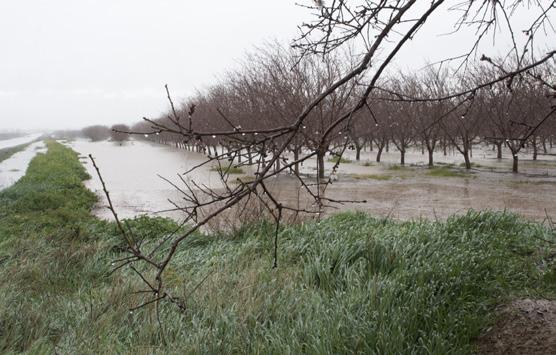
“Almonds typically start blooming mid-February and again when that bloom happens, the tree will become active. They need those roots to take up nutrients in order to produce the flowers and the leaves that are coming after that. Typically, we want to avoid having those tree roots sit in floodwater or fully saturated soils, although this year we might not have
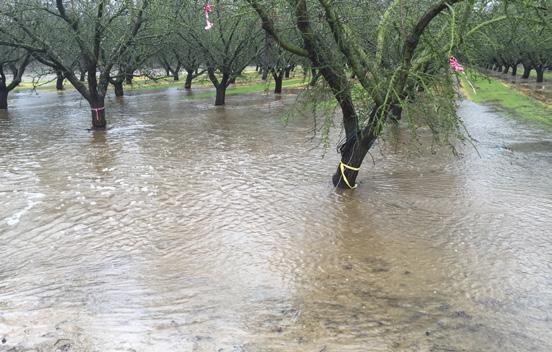 ContinuedfromPage57
Almonds are more challenging for groundwater recharge because they come out of dormancy sooner than other nut crops, and there could be tree loss if they’re flooded (photo by H. Dahlke.)
ContinuedfromPage57
Almonds are more challenging for groundwater recharge because they come out of dormancy sooner than other nut crops, and there could be tree loss if they’re flooded (photo by H. Dahlke.)
ContinuedonPage60 58 West Coast Nut April 2023
Growers could intentionally direct floodwaters to groundwater aquifers by creating dikes or levees to hold the water within a field or orchard (photo by K. Coatney.)
WE GOT YOU COVERED
As crop prices drop while water, fertilizers, energy and labor prices increase, now is the time to switch to Phytech to maximize efficiency and ensure yields' potential.
Optimize irrigation and fertigation. Get ready for SGMA regulations and ESG reports with the only IoT & Plant-AI platform that helps you monitor, plan and automate every BEAT of your operation.
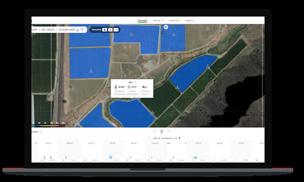




Optimize Irrigation and Fertigation: Save 25% of your water every year and avoid fertilizers wastage and soil contamination by irrigating according to real time tree/fruit demand and tracking tank level, soil and nutrients’ delivery




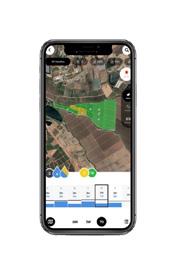


Pest and Disease:

Save more with our hassle-free Suttera’s mating disruption aerosol and granular climate-monitoring (temperature and humidity)
More features and benefits:
Wind-machine Monitoring, NDVI maps, Frost monitoring, Combined soil moisture and tree-monitoring

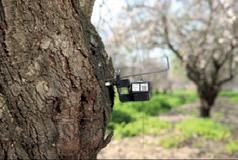

Full Hydraulic Monitoring:


Peace of mind with Pond/tank-level, pumps, flow, in-field irrigation pressure (DU)
Automation: Save labor and energy by automating your entire operation or just your pump

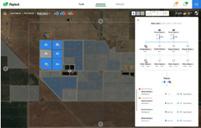
High-level Planning
Farm Management: Budgeting, Planning, Work-order, sharing, tracking and reporting

and
Hassle-free 24/7 service and agronomic support


Join over 850 of the world’s top growers who grow more and healthier yields, with less resources and more peace of mind Schedule a demo at www.phytech.com
complete control over that,” Dahlke said.
Dahlke hasn’t done any research with pistachios yet but said they could be a good candidate. “I’ve heard from some of our farm advisors who have seen everything from extreme drought to flooded conditions that pistachios are apparently pretty resilient in general.”



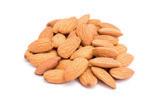
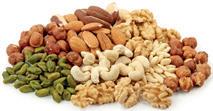
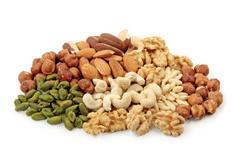



Growers with fallow fields could put berms around them for groundwater recharge. “This is really something that we should be doing more before we get into the winter period,” Dahlke said, adding rather than preparing beds in the fall, instead put berms around that field for groundwater recharge in the winter and prepare the beds in the spring.
“These are ideal sites to capture more
water,” Dahlke said.
“With all the rain we’ve gotten, all the soils are very saturated, so if you have an orchard sitting on heavy soil, like a clay soil, they can take 30 to 40 days to drain. And that can definitely become a problem for those trees,” Dahlke said, adding that could be especially true in areas of the Sacramento Valley where there are almond orchards on clay soils.
Dahlke said growers with orchards in heavy soils should consider planting a cover crop as they increase water infiltration.
“That can definitely help with drying out the orchard a lot quicker than if we were to wait for the soil to drain naturally,” Dahlke said.


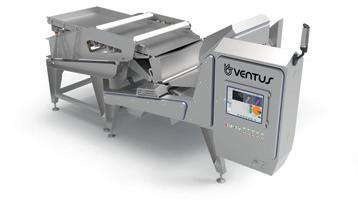
“We’ve just completed an experiment last winter, and my student is still analyzing the data, but we did test cover crops in the winter recharge experi-
ment. We flooded those cover crops fairly late in the season,” Dahlke said, adding they were definitely reaching anoxic conditions, but the cover crop just survived and wasn’t killed by the standing water.
LandFlex

LandFlex is a voluntary contract program through the Department of Water Resources (DWR), and it accomplishes two things: 1) It was originally conceived as a drought mitigation well protection program for rural and underrepresented communities; and 2) it’s a kickstart for the Sustainable Groundwater Management Act (SGMA) to create a tool for growers and Groundwater Sustainability Agencies (GSAs) to accurately quantify and jumpstart retirement of overdraft pumping.
LandFlex is not a fallowing program; it’s a water program that calculates


More information? T. +1 (720)586 6545 info-usa@optimum-sorting.com www.optimum-sorting.com
Advertentie_1-4_pagina_w7,25xh2,5inch.indd 1 27/03/2023 9:29:43 60 West Coast Nut April 2023
Growers with fallow fields could put berms around them to create holding flood basins for groundwater recharge.
ContinuedfromPage58
Innovative optical sorting solutions for the nut industry
based on the evapotranspiration rates and the measured pumping credit allotted within the GSA, according to Aubrey Bettencourt, CEO of the Almond Alliance. “GSAs that have an established sustainable yield are the only ones who will be eligible to administer the program,” said Bettencourt.
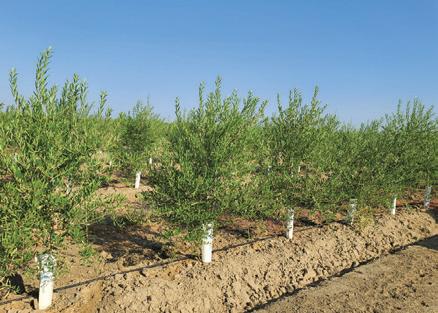

A grower will be able to apply 25% of their operation, or 40 acres for smaller growers, to the program. Then the applicant is scored based on their physical proximity to a rural water system or a domestic well that’s been marked or tagged, Bettencourt said.
Once a grower enrolls acreage, there are three components to the application.
“Tier one is that immediate what we call, ‘Stop the bleed, protect wells.’ That component for well protection is $450 an acre-foot of your pumping allotment. So, for that year, you’re not going to pump your groundwater,” Bettencourt said. “Tier two is whatever overdraft credit you have, you do have to sell a portion of that to the state and retire it, and that’s $750 per acre-foot per acre.
“Then there is a what we call a transition cost,” she said, where growers are paid per acre for trees and permanent crops, dairy feeds for replacement feed and row crops.
“Now a caveat: Everything I just said on the pricing structure, they are still responding to comments right now. So, some of that might be in flux, but that’s the original design of the program.
“This program doesn’t say you can’t farm; it says you can’t pump groundwater for the duration of the contract,” Bettencourt said, adding it’s a year-toyear contract.
There has been great interest from growers, Bettencourt continued. “I had one grower tell me he can make payroll and keep his farm because before what he was looking at was economic uncertainty,” she said, adding now he has the multi-benefit land repurposing program, which has many benefits.
Originally the program did not compensate the grower or create any form of economic stability, Bettencourt said. “We were looking for a program that provided stability for our rural communities and economic certainty to give a new tool in the toolkit for our GSAs and for our growers,” Bettencourt said.
“There will be some permanent land retirement. There’s also going to be flexibility in land rotation. And it’s really based on that premise of rotational fallowing and measurable water savings. And that’s really why we keep coming back to this ‘Isn’t a fallowing program, it’s a water program,’” Bettencourt said, adding Almond Alliance hopes to begin signing up growers in February 2023.
“The goal isn’t to condemn and take
away property rights; it’s really to kind of bearhug SGMA and say, ‘If we can solve this, then we can bring healing to the communities, and to our aquifers, and keep our growers farming,’” Bettencourt said.
Cliff Beumel 559-531-7086 cbeumel@agromillora.com Main Office 530-846-0404 agromillora.com SUPER HIGH DENSITY OLIVES FOR OIL
Best Orchard Crop for the Future! California Nursery Gridley, CA -OLIVE OIL PRICES AT ALL TIME HIGH -FASTER ROI -GROWN, MILLED AND SOLD IN US -HIGHEST PROFIT IN ORCHARD CROPS -100% MECHANIZED FROM THE MOMENT OF PLANTING OLIVES REQUIRE THE WATER OF ALMONDS AND ¼ THE NITROGEN TO PRODUCE A FULL CROP
about this article? We want to hear from you. Feel free to email us at article@jcsmarketinginc.com April 2023 www.wcngg.com 61
Your
Comments
A WORD FROM THE BOARD: THE ALMOND BOARD OF CALIFORNIA
ANALYZING THE 2023 TRADE FORECAST
By ALMOND BOARD OF CALIFORNIA | Contributing Writer
promoted abroad,” Garcia-Figuera said. “That’s one of the things we’ve been particularly monitoring for the Almond Board, how these global transitions that were adopted in 2019 are going to translate to requirements and things that are going to be implemented over the coming years.”
To further their sustainable measures, the EU has set quantitative targets for the Farm to Fork strategy that they would like to achieve by 2030, focusing on pesticides, nutrient loss, antimicrobials and organic farming.
International trade, and the export market, continue to be an ever-changing topic in the agriculture industry. Between increased regulations and new policies, changing consumer tastes and preferences, and complexities in sustainability, it’s difficult to predict how the trade environment will shake out for the coming year.
“When you look at what’s going on, there are issues everywhere, and in many cases, we need different solutions,” said Julie Adams, vice president of Global Technical and Regulatory Affairs at the Almond Board of California (ABC).
Offering perspectives on some of these challenges were industry experts Sara Garcia-Figuera, Clay Hamilton, Keith Schneller and Jonathan Huff during a panel session at The Almond Conference in December 2022.

The EU Green Deal Setting the Tone
Garcia-Figuera is a technical consultant at Prospero & Partners, which has worked with ABC since 2021, specifically in European regulatory and policy developments. They are monitoring what could affect almond growers and handlers based on three categories: imports, competitiveness and demand
for almonds.
Driving each of these categories is the European Union’s (EU) Green Deal, which was adopted in 2019 with the aim to transform the EU into a climate-neutral and resource-efficient economy by 2050. It covers all sectors of the economy from agriculture to energy to transport to construction. These policies will likely impact trade with the EU, and it is possible that environmental and sustainability standards will become stricter at a later stage.
While the EU Green Deal covers multiple policy areas, the two strategies most important to the California almond industry are in preserving and restoring ecosystems and biodiversity and fostering a fair and environmentally friendly ‘Farm to Fork’ food system, Garcia-Figuera said.
The Farm to Fork strategy has specific goals in ensuring food security, reducing the environmental footprint, strengthening the EU’s food system resilience and making a global transition toward competitive sustainability from farm to fork, all of which the EU plans to push beyond European territories.
“Europe wants to lead a global transition, so some of the things that are imposed at the EU level might be
The EU Strategy envisions reducing pesticide usage by 50%, which has been a controversial topic of discussion, as stakeholders realize it is extremely unrealistic. They’re also aiming to reduce nutrient losses by 50%, reduce the sales of veterinary antibiotics by 50% and increase the percentage of organically farmed land in the EU to reach 25%.
“Very relevant for almond imports was this global dimension of the Farm to Fork strategy,” Garcia-Figuera explained. “They are starting to lower the maximum residue limits (MRLs) for some insecticides for environmental reasons, not for the usual risk-based assessments.”
In the retail space, the Farm to Fork initiative examines sustainability labeling for food, which aims to provide consumers with information on the nutritional, environmental and social aspects of food products. One of the ways they are planning to implement this is through harmonized front-of-pack labeling, Garcia-Figuera explained.
“This is the idea that food products would have a front-of-pack label that would help consumers shift their choices to more healthy diets,” she said. But neither Member States nor industry stakeholders are aligned on the approach.
For the California almond industry, an optimistic note is that the European Food Safety Authority released a report
62 West Coast Nut April 2023
Participants at The Almond Conference 2022 listening to a breakout session on the current trade environment.
encouraging the consumption of nuts and seeds. Based on this, it is hoped that almonds will score highly on these front-of-pack labels.
The Farm to Fork strategy sets high ambitions, and Garcia-Figuera reiterated the process is moving quickly, so they continue to monitor policy that can have a long-term impact on the almond industry, especially on the production front.
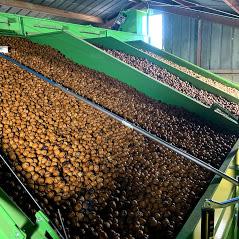

“Overall, we’re seeing there is going to be an effort to drive greater accountability on production practices,” she said. “Information on what California almond growers are already doing, like the initiatives encompassed under the California Almond Stewardship Platform (CASP), will help get the production practices in California recognized and related to the production practices in Europe.”
Continuing to Tell the Stewardship Story
One may wonder how the U.S. government is playing a role in communication between ag industries and their trade markets such as the EU.
Clay Hamilton, associate administrator of USDA’s Foreign Agricultural Service, joined the panel to discuss the increased efforts being undertaken to show U.S. trading partners the sustainable practices being applied by American farmers while also emphasizing how these practices must be profitable.
“Farmers all care about the same three things: they want to produce a quality product, they want to take care of their family, and they want to take care of their land,” Hamilton said.
Based on what he is hearing from negotiations between our trading partners, Hamilton encouraged the California almond community to continue sharing the good work, pro active efforts and research growers are doing across the state, because that seems to be what consumers want to hear.
Jonathan Hoff, CEO at Monte Vista Farming and chair of the ABC Technical and Regulatory Affairs committee, agreed with Hamilton, noting how important industry story telling can be.
“The aggregated self-assessment data collected through CASP, the stewardship platform, is tremendously important in helping us illustrate what our industry is already doing for the folks in the EU and how it already aligns with some of
the things that they’re looking for,” Hoff said.
An Ongoing Trend Among Importers

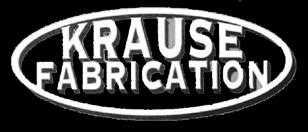

These trade regulations are not isolated to just Europe. With export markets in over 100 countries, the California almond industry must continue to meet requirements to keep product at the forefront of trading partners.
Keith Schneller, trade policy specialist at ABC, commented on further trade issues during the panel, as it pertains to China’s mandatory foreign food processing facility registration law that was implemented on January 1, 2022.
The new regulation was concerning to the California almond industry, being that China is one of the industry’s biggest markets. Ultimately, China’s initiative was to broaden their high-risk food category to include dried nuts like almonds. This meant American companies had to go through FDA to register the product before getting to the Chinese market.
ABC worked with government partners in the U.S. and China to expedite this process, further proving that working collaboratively at a technical level is often the best approach to solving some of these issues, Schneller noted.
Adapting to Challenges
It’s clear that these trade and regulatory issues are not going away, so finding new and creative ways to confront these challenges and support future production growth is key.
While there’s no magic solution, the panelists shared their views that diversification into new markets, creating better relationships with government partners, building alliances in-country and continuing to communicate the industry’s sustainability story, are all ways that will help.
“I know this all sounds pretty challenging and overwhelming, but this industry’s track record has been incredible in addressing tough issues. We are committed to continuing to meet these evolving issues head-on, not only to mitigate the disruptions but to tell the positive story about California almonds going forward,” Adams concluded.
209-754-9636 3474 Toyon Circle, Suite 333 Valley Springs, CA 95252 Complete Walnut and Pecan Hulling And Drying Systems Comments about this article? We want to hear from you. Feel free to email us at article@jcsmarketinginc.com
April 2023 www.wcngg.com 63
Prospero & Partners’ Sara Garcia-Figuera details the potential impacts of the European Union’s Green Deal and Farm to Fork strategy at The Almond Conference 2022.


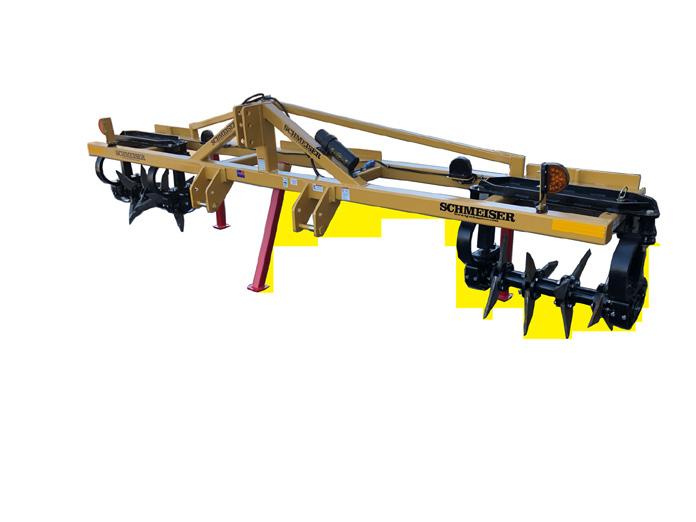
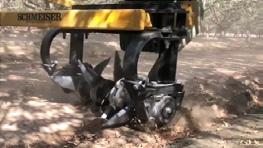
Cal/OSHA Appeals Board Decision on Water Requirements for Heat Illness By ROGER A. ISOM | President/CEO, Western Agricultural Processors Association TGS IS IN THE ZONE 1-800-288-8128 • ww w. t g sc h me i se r. c o m Better Root Zone Management from Better Water Penetration With The Schmeiser Orchard Max Aerator Patented Smart-Till tines fracture and open the soil 8” deep with little soil disturbance. Breaks hardened soil for longer irrigation sets and less ponding in the row middles. Delivering water and soil amendments directly to the root zone for Max results. • Maximizes water penetration • Increase irrigation runs • Incorporate soil ammendments • Reduces soil compaction • Fast at 6-8 mph reducing cost/acre Call your dealer for a demo or see the video in action at www.TGSchmeiser.com 64 West Coast Nut April 2023
ALJ found, and the OSHAB affirmed, that the trellises were an obstacle that discouraged employees from frequently drinking water. The ALJ and Board further found that other reasonable options were available to the employer,
such as providing a jug of water in each row where the employees were working or providing individual water bottles that employees could carry with them and refill from the jugs.
The one thing this decision does not
explicitly say is water must be within a specific distance, leaving some ambiguity for farmers. However, it does seem to indicate simply having water at the end of the rows is no longer enough. The decision implies they must have water with them to stay sufficiently hydrated. What is troublesome here is the action by the Appeals Board to go beyond the ALJ and essentially make their own policy decision based on their interpretation of “close as practicable.” Given that Cal/OSHA often conducts inspection sweeps during the hot periods of the year, we can fully expect to hear more about this and the corresponding ramifications this summer. While we know every precaution is made to protect the agricultural workforce and provide water during hot periods, we strongly encourage you to take extra steps now that this decision has been rendered.
Comments about this article? We want to hear from you. Feel free to email us at article@jcsmarketinginc.com

April 2023 www.wcngg.com 65
REGENERATIVE ORCHARD MANAGEMENT HOW GROWERS
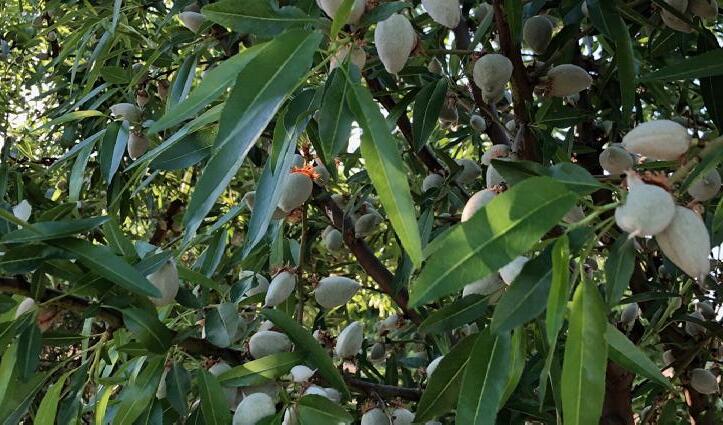 By ERYN WINGATE | CCA, Tri-Tech Ag Products, Inc.
By ERYN WINGATE | CCA, Tri-Tech Ag Products, Inc.




Agricultural resiliency is the land’s ability to maintain productivity and provide ecosystem services regardless of changing and often harsh environmental conditions. Resiliency largely depends on soil quality. Healthy soils capture and store more water, resist erosion during heavy rainfall and maintain higher levels of plant-available nutrients compared with degraded land(7). California’s orchards are uniquely positioned to improve resiliency by implementing regenerative practices aimed at developing healthy soils. While row cropping fields have limited capacity to accumulate organic matter due to frequent tillage, orchard soils can remain undisturbed for decades, allowing time for complex ecosystems to develop around the trees. Growers can improve orchard resiliency by adopting management practices that support the soil microbiome and facili tate healthy soil development.
Soil Health Starts with Microbial Activity
Learning about microbiology can help guide management plans aimed
at improving soil quality. Microorganisms, including bacteria, fungi, archaea and protozoa, conduct a wide range of functions, and over time, their combined efforts significantly improve the soil’s physical and chemical characteristics. These organisms interact with each other and with arthropods, invertebrates and plants in complex food webs that capture energy and cycle essential nutrients to support each successive generation. Microbes include decomposers that break down plant litter and other detritus, grazers that feed on fresh carbon substrate, and predators that stalk, trap and kill their prey. Only a small percentage of microorganisms are pathogenic to plants, while most exert positive or neutral
Regenerative management can help California’s farmers adapt to the changing climate, water shortages and ever-increasing pesticide and nitrogen use restrictions (all photos courtesy E. Wingate.)
inside root tissue, form symbiotic relationships with plants. PGPRs include many types of bacteria, fungi and archaea that live in consortia, interacting with each other and with host plants. PGPRs feed on carbon-rich photosynthate exuded by plant roots, and in return, they deliver nutrients, enhance growth, suppress pathogens and trigger the plant’s immune response to biotic and abiotic stress(1)
Microorganisms living further away from plant roots contribute to soil and crop quality indirectly by improving the soil’s physical and chemical characteristics. Organic matter facilitates soil aggregation, lowers bulk density and decreases compaction. Microbes exude glue-like exudates that help flocculate
STEEL BUILDINGS
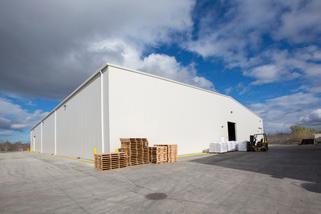

HILBERSINC.COM 530.673.2947 770 N. WALTON AVE SUITE 100 YUBA CITY, CA 95993 Hilbers Inc. partnering with Butler is the team you can trust. Whether it’s a design-build project, renovating and/or expanding an existing building, Hilbers Inc. and Butler have the expertise to see you through to the completion of your pre-engineered metal building project! Proudly operating as 100% employee-owned. We build structures and Relationships to last.
LIMITED RESOURCES AND
CHANGING CLIMATE
CAN ADAPT TO
A
66 West Coast Nut April 2023
a sponge, greatly increasing the soil’s water holding capacity. Soils with high organic matter content retain surplus water for later use, decreasing loss to groundwater due to leaching. Stable aggregates resist erosion and enable fast water penetration, allowing fields to absorb more water during heavy storms and long irrigation sets with minimal risk of runoff to surface waters(5,7).
Increasing organic matter and microbial activity also improves nutrient availability and retention in the root zone. Organic matter buffers pH and provides both cation and anion exchange capacity, allowing the soil to store more nutrients for future use(5,7) Soil microorganisms excrete complexing agents that bind essential elements in plant-available form(7). Living microbial biomass increases fertility even further by serving as a nutrient bank account, holding essential elements in living cells. Metabolic processes and microbial community turnover slowly release plant-available nutrients into soil solution, reducing the amount of fertilizer required to support the crop. Nitrate levels in healthy soils are often lower than in conventionally managed fields, but crops remain well fed by consistent N release from microbial biomass(4). Lower soil nitrate levels in soil solution reduce nitrate leaching, protecting groundwater quality while improving nutrient use efficiency.

Regenerative Practices Improve Soil Health
Research studies and grower experience demonstrate many benefits derived from building healthy soils, yet ag professionals continue to search for the most effective and economical methods to develop quality soil. Research conducted in California on sixteen almond orchards in 2018 and 2019 found dramatically higher soil quality when growers implemented four crucial regenerative strategies, including permanent groundcover, minimizing tillage, avoiding synthetic agrochemicals and applying organic amendments(6). This multi-pronged approach feeds microorganisms, protects their populations from damage and prevents organic matter depletion. Adopting just one practice like cover cropping provides
a good start, but significant changes in soil health require several management changes implemented simultaneously over long periods of time.
The 2018-19 study found that regenerative orchards had higher soil organic carbon, higher water holding capacity, lower bulk density and higher microbial abundance than conventional fields. Pest and disease pressure were equal between conventional and regenera-
tive farms, even though regeneratively managed crops did not use synthetic crop protection products. Quality and yield were equal between regenerative and conventional orchards, but lower expenses and premiums for organic almonds earned regenerative growers almost double the return on investment

ContinuedonPage68
April 2023 www.wcngg.com 67
Growers can improve orchard resiliency by adopting management practices that support the soil microbiome and facilitate healthy soil development.
compared with their conventional counterparts. Regenerative management improved nearly every soil health metric while minimizing agrochemical applications required to sustain yield and crop quality(6) .
Foundational Regenerative Practices
Providing constant ground cover pumps carbon into the soil, supporting greater microbial abundance and connectivity throughout the field(6). Ground cover also protects microbes from excessive heat and prevents harsh disturbance during heavy rainfall. Strategically chosen cover crops can provide additional benefits like pollinator habit and forage for livestock. Deep-rooted cover crops can help improve drainage and mine essential nutrients from deep in the soil profile bringing nutrition back to surface. Groundcover also protects surface
water quality by decreasing erosion and runoff. Less water and sediment leaving the field prevents nutrients and pesticide residue from reaching surface waters(2,3,6,7)
Effective regenerative management requires maintaining microbial abundance and activity over long periods of time. Orchards managed without materials that disturb microbial populations observe more organic matter and improvements in soil quality than fields that frequently crash the soil ecosystem. Liquid organic fertilizers mineralize quickly into plant-available forms, while delivering additional carbon substrate to feed microorganisms(4). Highly concentrated fertilizers and many commonly used herbicides and pesticides stress kill microbial populations, disrupting nutrient cycling, pathogen suppression and soil carbon stabilization(6). Ongoing research may help elucidate microbial tolerance thresholds for fertilizers and pesticides, but for now, the best way to protect the microbiome is to use organic fertilizer
amendments in moderate doses, avoid synthetic inputs, and even avoid copper containing organic fungicides(6).
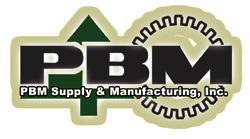
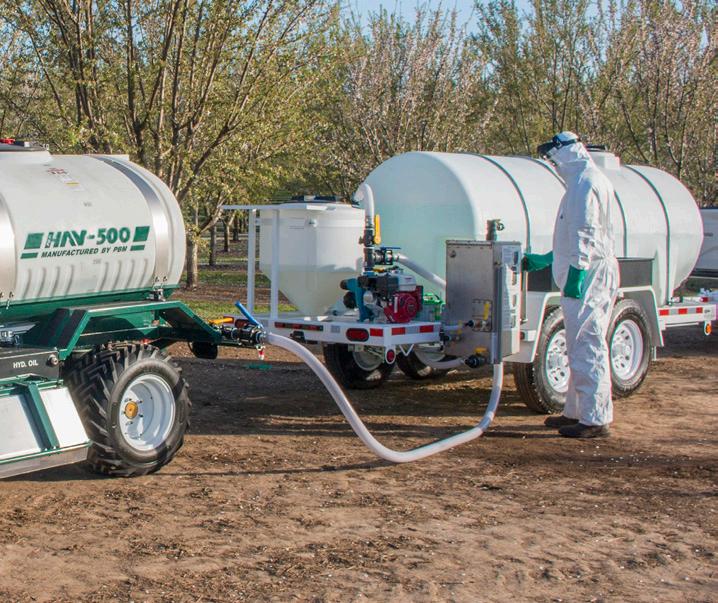
Preventing soil disturbance gives microorganisms stable growing conditions and time to exert significant impact on the soil’s physical and chemical characteristics. Tillage disrupts the microbial habitat and introduces an influx of oxygen, which increases microbial respiration and growth rates well beyond levels supported in undisturbed soils. No longer limited by oxygen supply, microorganisms quickly feed on available carbon, burning through soil organic matter and releasing carbon dioxide. Avoiding tillage keeps oxygen levels stable, greatly increasing the probability of annual net carbon capture and organic matter accumulation(5,6,7). Net carbon storage becomes far more likely when growers also avoid harsh agrochemicals and provide a carbon food source with cover crops.
Regenerative management can help California’s farmers adapt to the changing climate, water shortages and ever-increasing pesticide and nitrogen use restrictions. The almond industry is poised for widespread change backed by positive research findings, grower success stories and food industry funding. Healthy soils lead to better root health, reduced reliance on ag chemistry and improved resiliency against both biotic and abiotic stress. Healthy soils also protect the surrounding environment by resisting erosion, preventing nitrate leaching and capturing more water during heavy rainfall to help recharge aquifers. Almond orchards span 1.6 million acres of California farmland, and if regenerative management practices are implemented on a large scale, the industry can help solve some of California’s most challenging environmental concerns.
References
(1) Beneduzi, A., Ambrosini, A., & Passaglia, L. M. P. (2012). Plant growth-promoting rhizobacteria
(PGPR): Their potential as antagonists and biocontrol agents. Genetics and Molecular Biology, 35(4 suppl 1), 1044–1051. https://doi.org/10.1590/s141547572012000600020
MFG.,
Quality Agricultural Spray Equipment, Parts and Supplies www.pbmsprayers.com www.pbmtanksupply.com Since 1969 CLOSED MIXING SYSTEMS
Chico - 530-345-1334 324 Meyers St. Chico, CA 95928 Yuba City - 530-671-0068 955 N. George Washington Blvd. Yuba City, CA 95993 Fowler - 559-834-6921 3732 S. Golden State Blvd. Fowler, CA 93625 Murrieta - 951-696-5477 41648 Eastman Dr. Murrieta, CA 92562
& AccessoriesCall 1-800-688-1334 To Find A Dealer Near You! ContinuedfromPage67 68 West Coast Nut April 2023
PBM Supply &
INC.
PBM’s
Tier-1 closed mixing system will drain, triple rinse, and cut chemical containers while they are sealed inside a stainless steel mixing box. Available on PBM’s Batch Mixing Trailers, Mixing Stations, or Sold Individually to adapt to your existing mixing equipment.
-Sprayers- -Tanks- -Liquid Delivery Trailers- -Parts
(2) Bentley W, Hendricks L, Duncan R, Silvers C, Martin L, Gibbs M, Stevenson M. (2001) BIOS and conventional almond orchard management compared. Calif Agr 55(5):12-19. https:// doi.org/10.3733/ca.v055n05p12
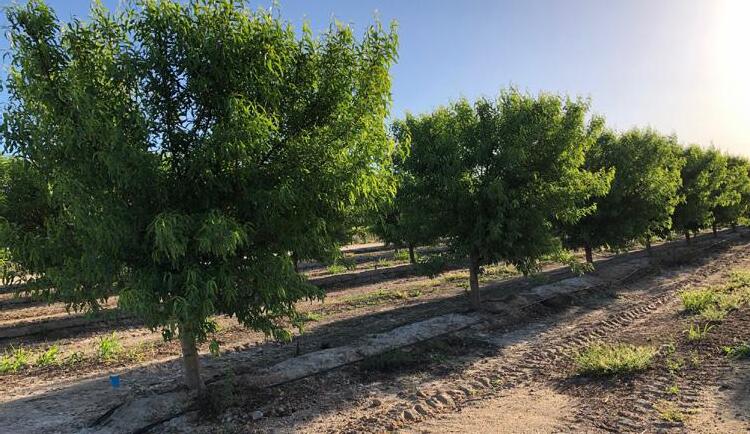
(3) Bot, A. and Benites, J. (2005) Drought-resistant soils: Optimization of soil moisture for sustainable plant
production. Food and Agriculture Organization of the United Nations, Land and Water Bulletin 11. https://www.fao. org/3/a0072e/a0072e00.htm#Contents
(4) Bowles TM, Hollander AD, Steenwerth K, Jackson LE (2015) Tightly-Coupled Plant-Soil Nitrogen Cycling: Comparison of Organic Farms across an Agricultural Landscape. PLoS ONE
10(6): e0131888. https://doi.org/10.1371/ journal.pone.0131888
(5) Brady, Nyle C. and Weil, Ray R. (2008). The Nature and Properties of Soils. Fourteenth Edition. Pearson Prentice Hall.
(6) Fenster TLD, Oikawa PY and Lundgren JG (2021) Regenerative Almond Production Systems Improve Soil Health, Biodiversity, and Profit. Front. Sustain. Food Syst. 5:664359. doi: 10.3389/fsufs.2021.664359
(7) Magdoff, Fred and Weil, Ray R. Soil Organic Matter in Sustainable Agriculture. CRC Press 2004. Print.
(8) Mercado-Blanco J, Abrantes I, Barra Caracciolo A, Bevivino A, Ciancio A, Grenni P, Hrynkiewicz K, Kredics L and Proença DN (2018) Belowground Microbiota and the Health of Tree Crops. Front. Microbiol. 9:1006. doi: 10.3389/fmicb.2018.01006
Comments about this article? We want to hear from you. Feel free to email us at article@jcsmarketinginc.com

April 2023 www.wcngg.com 69
Soils with high organic matter content retain surplus water for later use, decreasing loss to groundwater due to leaching.
California Water Law Update
 By REBECCA SCOTT | J.D., Partner, JWAGronomics, LLC
By REBECCA SCOTT | J.D., Partner, JWAGronomics, LLC
The mere mention of the word “water” in California’s ag community sets off a cascade of effects, emotions and, usually, swear words. It is a complicated issue, currently about as clear as mud and subject to constant attempts at compromised course correction, most of which pleases nobody involved. California is currently the fifth largest ag producer in the world and cannot sustain that production level without appropriate access to water. The sustainable management of our surface and groundwater is literally a matter of life and death.
That being said, this article is not an attempt to wrangle the entire topic of water in California but provide an update of recent legislative and environmental action.
Groundwater
Failure to regulate groundwater has resulted in dry wells (almost 1,400 wells went dry statewide in 2022), withering wetlands, shrinking ecosystems, declining wildlife, land subsidence and fallowed farms. Excessive groundwater pumping in the San Joaquin Valley has resulted in subsidence of as much as 30 feet. Such subsidence results in largely
nonrecoverable reduction in the pore volume of the compacted aquitards, and thus a reduction in the total storage capacity of the aquifer system. Near the coast, this can also result in saltwater infiltration, thereby degrading the water quality of any future recharge.
Despite the fact that roughly 85% of Californians depend on groundwater for some portion of their water supply, groundwater was not really regulated prior to 2014. In 2014, the Sustainable Groundwater Management Act (SGMA) was passed. The long-term goal of SGMA was to create management plans that would achieve groundwater sustainability by 2040. The Act contains interim deadlines, one of which was submittal of Groundwater Sustainability Plans (GSPs) for high- and medium-priority basins by January 2022. These plans are evaluated for compliance and effectiveness by the Department of Water Resources.
The plans have three potential assessments: 1) Approved; 2) Incomplete, which means the plan has one or more deficiencies; or 3) Inadequate, which may result in State Water Board Intervention. Of those plans submitted to the DWR to date, below is the current
March 2023 status:
• 12 plans Approved,
• 16 plans Incomplete,
• 23 plans Inadequate and
• 66 plans under review
Between 2025 and 2040, the GSPs must be re-submitted every five years. These plans are essential to reaching sustainability of our state’s drought buffer, or “water savings account.”
One legislative attempt at controlling groundwater pumping failed passage in 2022. The legislation, introduced by Assemblymember Steve Bennett (D) of Santa Barbara, specifically targeted new permits for agriculture wells. Domestic wells pumping less than 2 acre-feet/year were excluded as were public water system wells. Had the bill passed, permit applicants would submit to review by local groundwater management agencies, and be required to provide engineering/geology studies confirming non-interference with nearby existing wells. Ultimately, Bennett chose not to bring the bill up for final
70 West Coast Nut April 2023
Lake Mead. As of March 3, 2023, after all the recent rain, Lake Mead’s level is 1,046.97, higher by 6+ inches than last year at this time, but still not anywhere close to where we need to be (photo by Caitlin Ochs, REUTERS.)
vote due to regulatory changes made by Gov. Newsom.
Governor Newsom’s referenced Executive Order, N-7-22, issued in March 2022, states that no well permits may be approved by permitting agencies until first approved by the Groundwater Sustainability Agency (GSA) managing the area where the well is proposed. The EO also placed certain requirements on urban water suppliers regarding supply and demand assessments and contingency plan submittals, urged emergency Water Board regulations for “non-functional turf,” suspended certain sections of the Public Resources Code regarding CEQA and addressed fish habitat and hauling of water. The EO does not contain a specified expiration date. The provisions are expected to remain in place until Gov. Newsom declares an end to the drought. The EO may be found in its entirety at: gov.ca.gov/wpcontent/uploads/2022/03/March2022-Drought-EO.pdf.

Surface Water
Although groundwater availability is essential to our longterm survival, we all naturally pay much more attention to surface water, because…weather. It’s in our faces, whether it’s too little precipitation (the last few years) or too much precipitation (the last few months).
In August 2022, Gov. Newsom published a 19-page plan for boosting water supply projects. His plan included building new reservoirs, desalination plants, recycled water facilities and “fast-tracking” seven water storage projects that had 2014 funding approvals under Proposition 1. The plan also aims to expand programs compensating homeowners who voluntarily replace lawns with xeriscaping. While the Governor’s plan contains admirable goals, it contains no actual enforcement capability.
CA Senate Bill SB 1205 re Water Rights: Appropriation. This bill, signed into law by Gov. Newsom on September 16, 2022 requires the Water Resources Control Board to develop and adopt regulations to consider effects of climate change on watershed hydrology in reviewing applications for water rights permits.
Colorado River Update: Seven states share access to Colorado River water: California, Colorado, Wyoming, Utah, New Mexico, Arizona and Nevada. Additionally, Native American Tribes plus Mexico also have water rights. The lion’s share, by far, belongs to California, more than 1/3 of the river’s natural flow. Most of that water is used for irrigation, providing water to ~475,000 acres of agriculture.
After decades of drought in the Colorado River Basin, Lake Mead in July 2022 stood at its lowest level since 1937. Lake Mead supplies water to about 25 million people. Last summer the Bureau of Reclamation called the first ever Level 2A shortage, reducing use by Arizona, Nevada and Mexico, but not California. Right now, California is precariously ok due to senior water rights, but California’s cutbacks start when water levels hit between 1,040 and 1,045 feet. As of March 3, 2023, after all the recent rain, Lake Mead’s level is 1,046.97, higher by 6+ inches than last year at this time, but still not anywhere close to where we need to be.
But we’ve had all this snow and rain, aren’t we out of the crisis now?
Short answer? No.
Why? We have been in a “megadrought” for many years. It is going to take more than one good winter of precip to recharge our aquifers and replenish our reservoirs.
References
Arthur, S., Atume, N., “California Can’t Waiver on Water Regulation,” August 2022. CalMatters.
Becker, R., “Colorado River Cutback – Except for California,” August 16, 2022. CalMatters.
Becker, R., “State Lawmakers Reject Bill to Curb Farms’ Water Pumping,” September 2, 2022. CalMatters.
Executive Order N-7-22, Executive Department State of California, March 28, 2022. gov.ca.gov/wp-content/uploads/2022/03/March-2022-DroughtEO.pdf
Griffin, M., Marciano, R., Zee G., “Drought Monitor Spells Good News for California, But Not Out of the Woods on Megadrought,” March 2, 2023. ABC News.
Hanak, E., Chappelle, C., Harter, T., “Groundwater in California,” May 2017. Public Policy Institute of California.
“Land Subsidence in California,” usgs.gov/centers/land-subsidence-in-california
Moskal, E., Taber, K., “SGMA Implementation and CEQA: Is Now the Time to Reconsider a Statutory Exemption?,” January 10, 2023. somachlaw.com/ policy-alert/sgma-implementation-and-ceqa-is-now-the-time-to-reconsider-a-statutory-exemption/
Mulkern, A. “Water Wells Go Dry as California Feels Warming Impacts, December 2022. E&E News, Scientific American.
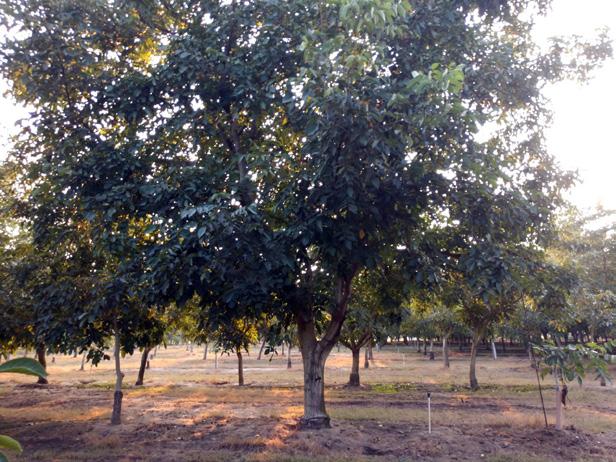
Phenix, D. “Breaking Down Water Levels Affecting the Las Vegas Valley,” March 3, 2023. 8NewsNowLasVegas.
Rogers, P. “Newsome Calls for Boosting Water Supply Projects to CuCrb California Drought, Climate Change,” August 11, 2022. The Vacaville Reporter.
Quist, R. “Newsome Executive Order Requires GSAs Approve New Well Permits, MAGSA Committed to Quick Approvals on Behalf of Landowners,” April 11, 2022. McMullin Area Groundwater Sustainability Agency. SB-1205, openstates.org/ca/bills/20212022/SB1205/
Shao, E., “California Has Begun Managing Groundwater Under a New Law. Experts Aren’t Sure It’s Working,” February 17, 2022. Inside Climate News. “Sustainable Groundwater Management Act (SGMA),” California Department of Water Resources, water.ca.gov/programs/groundwater-management/sgma-groundwater-management
LICENSED NURSERIES GRIZZLY™ Highest Vigor, highest yields Sierra Gold Nurseries Sutter Buttes Nursery MicroParadox/Baseline Burchell Nursery Agromillora Nursery www.grizzlywalnut.com TO LEARN MORE Comments about this article? We want to hear from you. Feel free to email us at article@jcsmarketinginc.com April 2023 www.wcngg.com 71
Farm Advisor Profile: Growers Really Ought to Meet Ott New UCCE Orchard Crops Advisor Jaime Ott
By JULIE R. JOHNSON | Contributing Writer
Northern Sacramento Valley nut growers have been excited to welcome new Orchard Crops Advisor Jaime Ott to the agriculture community as she joins the UCCE team.
With primary crop responsibilities to walnut, prune, almond and olive, Ott said she is thoroughly enjoying the opportunity to work with growers in Tehama, Shasta, Glenn and Butte counties.
“Having just recently started in this new position,” Ott said, “one of my goals, in general terms, is to be here as a resource for growers, pest control advisors and others in the profession, and to become that person that when people have an ag-related question, I’m their go-to person. Truly, that is the point of this position within UCCE.”
She went on to explain the idea of a UCCE orchard crop advisor position
is to bring the university’s research to growers and others in the profession.
“Those are the ones really who need that knowledge and research information developed by the universities. Providing that knowledge and being the person answering those questions is what I want to become, what I am, and will be doing,” Ott said. “I know I have a lot to learn, but as I get more experience and as I meet more people, as more questions come my way and I have to research to answer those questions with the most current information, that is how my knowledge and experience will grow. It is such a benefit to have all the most up-to-date university data, research and information available to me, and that in turn becomes a benefit to those I am here to help.”
In addition, she recognizes all the knowledge and experience her fellow researchers and advisors have that she can tap into.
“That makes it possible for me to then share all of that knowledge, decades of experience and research, with the agriculture community where I am serving,” Ott said.
Engrained in Ag
Ott is finishing her Ph.D. from the UC Davis Department of Plant Pathology, where she has done work assessing walnut and almond rootstocks for resistance to crown rot caused by Phytophthora.
Ott has also been involved in testing whole orchard recycling in almonds and optimizing anaerobic soil disin-
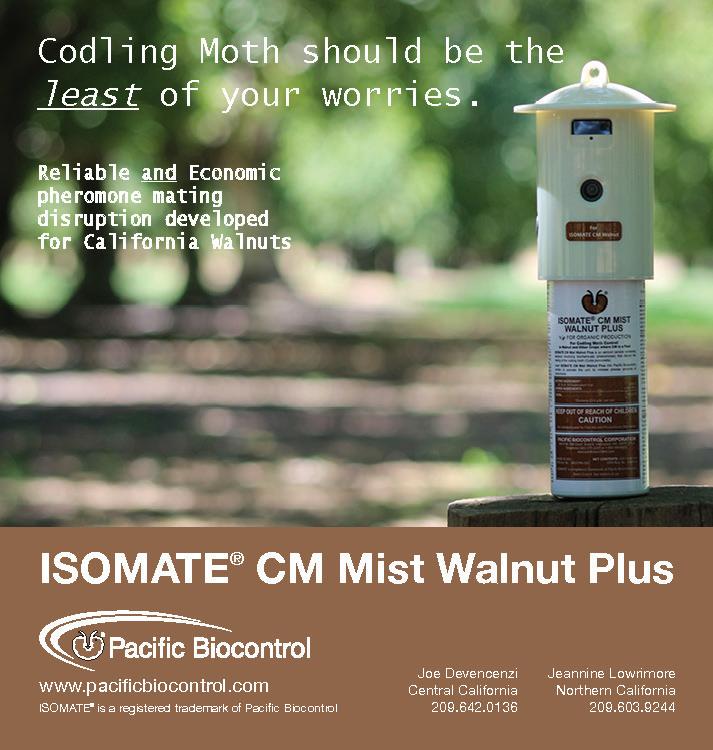
72 West Coast Nut April 2023
is excited to be serving Tehama, Shasta, Glenn and Butte agriculture communities.
festation (ASD) as an alternative to fumigation when replanting almond orchards.





Her journey into agriculture has been a long one, she said.
“I consider myself an ecologist at heart,” she added. “I love being out in nature, and I actually spent my master’s degree working with some restoration projects in the Chesapeake Bay in West Virginia. Something that really made an impression on me during that experience was that we can spend a lot of time and money doing restoration
work, however, I realized the real answer is working with farmers, ranchers and growers before the need for restoration even takes place.”
The experience gave Ott a unique perspective on the role of agriculture in conservation.
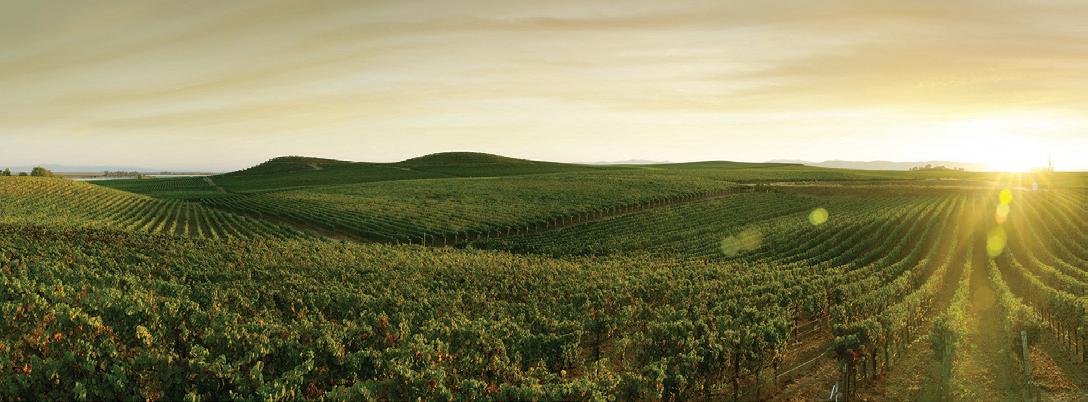
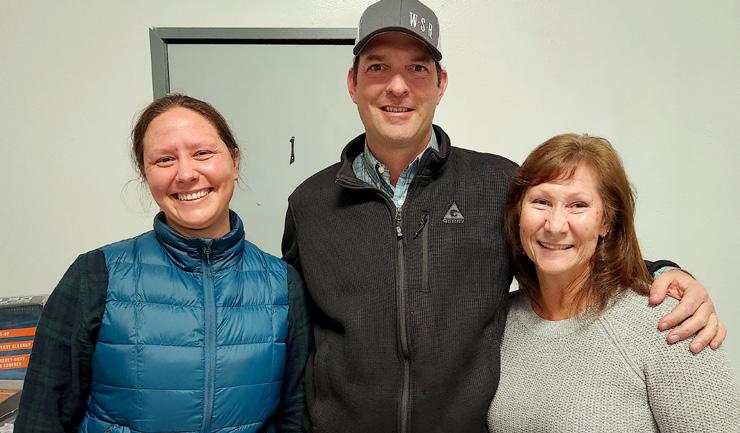
“So many people think that farming is the problem,” Ott said. “That couldn’t be further from the truth. We absolutely need everything growers, ranchers and farmers produce. To think we don’t is crazy.”
What she would like to see is for
agriculture to become more efficient.
“The growers will be the first ones to tell you they would like to be as efficient as possible. No one wants to use more fertilizers or sprays than they absolutely have to. That’s money poorly spent,” she explains. “I think the sweet spot would be to have farming as perfectly efficient as possible. That really is what’s sustainable, is to make it truly efficient.”
That is one component of what brought Ott into the field of agriculture, finding ways to help farmers be as efficient as possible.
The other component came in the past eight years in California working with almond and walnut growers.
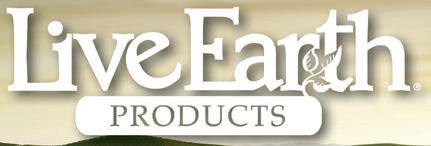
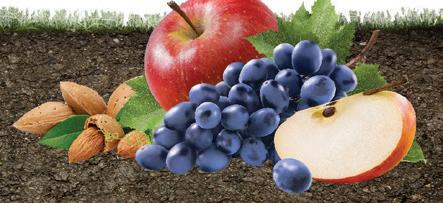
“As I have been interacting with growers and coming to understand them more and gaining a real respect for what they do, I have learned they care greatly about the ecosystem as a healthy ecosystem makes for better orchards and crops,” Ott added.

The last piece of the journey that brought Ott to her career of choice was

400 S 200 E, EMERY, UT 84522 | (435) 286-2222 | (800) 846-2817 CALL ERNIE AT (661) 304-2676 ContinuedonPage74
April 2023 www.wcngg.com 73
Jaime Ott, new UCCE orchard crops advisor for Tehama, Glenn, Shasta and Butte counties, left, stands with, Josh Davy, center, livestock and natural resources program advisor for Glenn, Colusa and Tehama counties and Kendra McCluskey during a Tehama County Farm Bureau event in January (all photos by J.R. Johnson.)
spending two years in the Peace Corps working in Africa’s Zambia region.
“I did this after earning my master’s degree. I was working in the bush with rural farmers growing tilapia. That experience really brought home to me how important it is to bring knowledge and research out there to the person who really needs it. That is a crucial step that doesn’t happen all the time,” she said. “That is an absolutely necessary bridge.”
It is that bridge between university research and knowledge that Ott wants to foster.
“I want to be that bridge that gets that information to the people who have the boots on the ground, actually growing the food that feeds this country and more,” she said.
It is these experiences that have made Ott passionate about her career in agriculture.
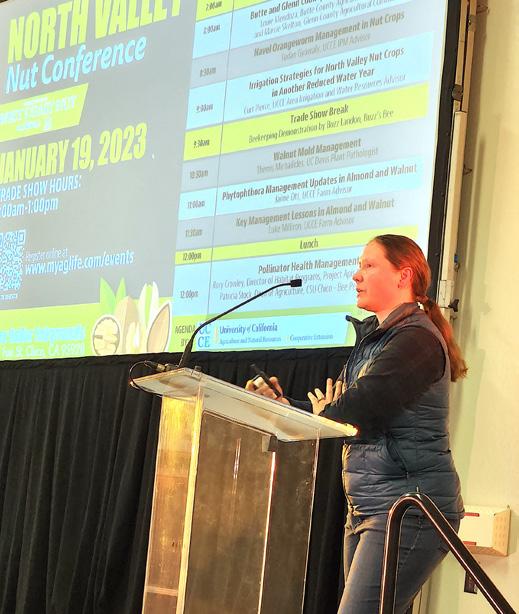
“I want to make growing food sustainable for the grower and the future,” she added. “We want things in this field to be efficient. We want things to work well for the grower, and to do this, we have to continue research and providing them with the best data and information they can get, and making sure that information is accessible.”
Another key component, Ott believes, is sharing that information in a format that is understandable to the grower.

“Not through some scientific, academic paper that is
difficult to understand. That information needs to be readily accessible and practical in presentation and application,” she said.
When not at work, Ott and her husband, Sean, enjoy backpacking.
“We have made a lot of backpacking trips in the Sierra’s around the Lake Tahoe area as that is where we were previously. We are both really looking forward to exploring the Trinity Alps, the Cascades, Lassen and the backpacking trails of the far North state,” she said.
Ott is also an avid gardener.
“Every year I plant a garden, usually a lot more than I can possibly eat and so we do a lot of canning with our bounty and taking bags of produce to my neighbors and friends. That’s a great feeling,” she added. “I’m even happy to answer gardening questions if they come my way.”
Another of the couple’s hobbies is cooking.
“We really try to be adventurous with our cooking,” Ott said. “We like to cook ethnic food we have never even heard of before. For instance, we recently made soup dumplings, which is an oriental dish of dumplings with soup inside the dumpling. We like to cook things such as that, different and new to us. And this hobby goes really well with our gardening, especially in the middle of the summer when you’re wondering what to do with 20 pounds of zucchini.”
Ott can be contacted at Cooperative Extension Tehama County, 1754 Walnut St., Red Bluff, CA 96080; by phone at (530) 527-3101; and by email at njott@ucdavis.edu.
ContinuedfromPage73 Comments about this article? We want to hear from you. Feel free to email us at article@jcsmarketinginc.com
74 West Coast Nut April 2023
Giving a presentation at the North Valley Nut Conference in Butte County, Jaime Ott, UCCE orchard crops advisor for Tehama, Glenn, Shasta and Butte counties, shares information about Phytophthora, its spread, variety susceptibility, avoidance and treatment.
MAXIMIZE YOUR YIELD POTENTIAL

Increase nut size and yield with Agro-K products: Sysstem-Leaf
Max (Zn and Mn phosphites with micros S 2%, Mg .5%, Co .005%, Cu .5%, Fe .75%, Mn 1.25%, Mo.15%, Zn 3%)
Vigor SeaCal
(5% calcium with seaweed)
Agro-Best 9-24-3 (NPK)
How Foliar Nutrients Influence Yield and Size
At petal fall and rapid leaf expansion there are two core factors affecting yield:
1. The capacity of nut and leaf cells to continue dividing before cell expansion starts, and
2. The ability and efficiency of leaves to photosynthetically produce and rapidly export sugars and proteins to developing nuts.
These two aspects are critical to achieving top yields at harvest. Some nutrients are in peak demand while leaves and roots are also developing rapidly. The cold and sometimes wet soil conditions early in the season limit nutrient availability and uptake by the roots. Root and leaf growth and function as well as cell division in developing nuts are all dictated by the Right Nutrients being available at the Right Time, in the Right Form, in the Right Place in the Plant and without undue influence from other nutrients ( Right Mix).
Calcium and zinc are the cornerstones of leaf, nut, root, and vascular development, size potential, and tissue strength. Physiological defects (small leaves, short shoots, and low yields) due to calcium and zinc deficiencies are irreversible and require proper management at the time of demand. Iron, magnesium, copper, and manganese are vital to chlorophyll production and
photosynthetic function (yield). Understanding, planning for, and satisfying these peak nutrient demands not only maximizes yield potential but also saves money by taking advantage of nutrient synergies and avoiding antagonisms. Shortages of these nutrients, applications at the wrong time, or applying with an antagonistic nutrient will limit plant development, decreasing yield and quality.
Applying Sysstem LeafMax, Vigor SeaCal, and Agro-Best 9-24-3 at rapid leaf-out is an ideal way to meet early season almond nutrient needs while simultaneously reducing plant stress.
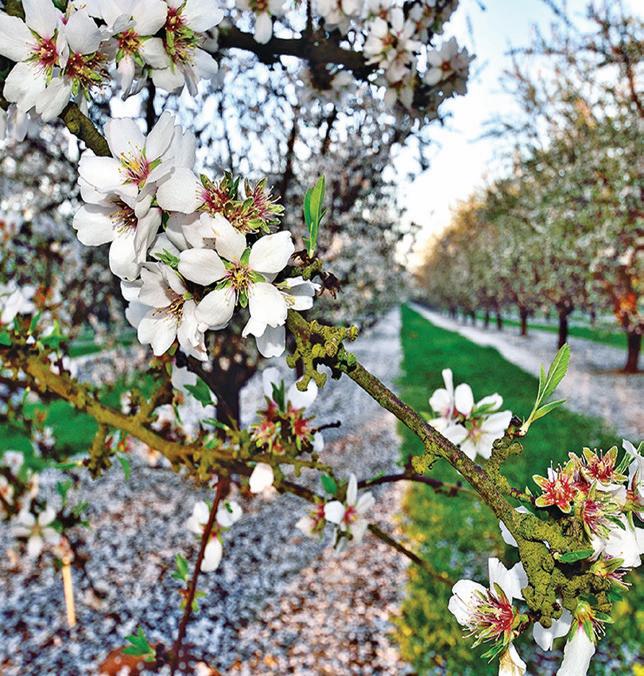
Cell division in developing leaves and nuts directly impacts yield potential. At petal fall, nut and leaf cell division is not yet finished and foliar applications of calcium, zinc, phosphorus, and seaweed work together to maximize leaf and nut size. An application of Sysstem LeafMax, Vigor SeaCal, and Agro-Best 9-24-3 during petal fall delivers the calcium, zinc, phosphorus, and seaweed needed for heavy yield potential. The micronutrients in the application ensure the photosynthetic factory is able to support a large nut crop while driving nitrogen metabolism in the plant.
This spring, apply foliar nutrients and make the most of your crop. Talk to an authorized Agro-K dealer today about how Agro-K products can help maximize your plants potential and your profitability.
Products Available At:
®
Corporation 8030 Main Street, NE • Minneapolis, MN 55432 • 800-328-2418 • www.agro-k.com Science-Driven Nutrition ™
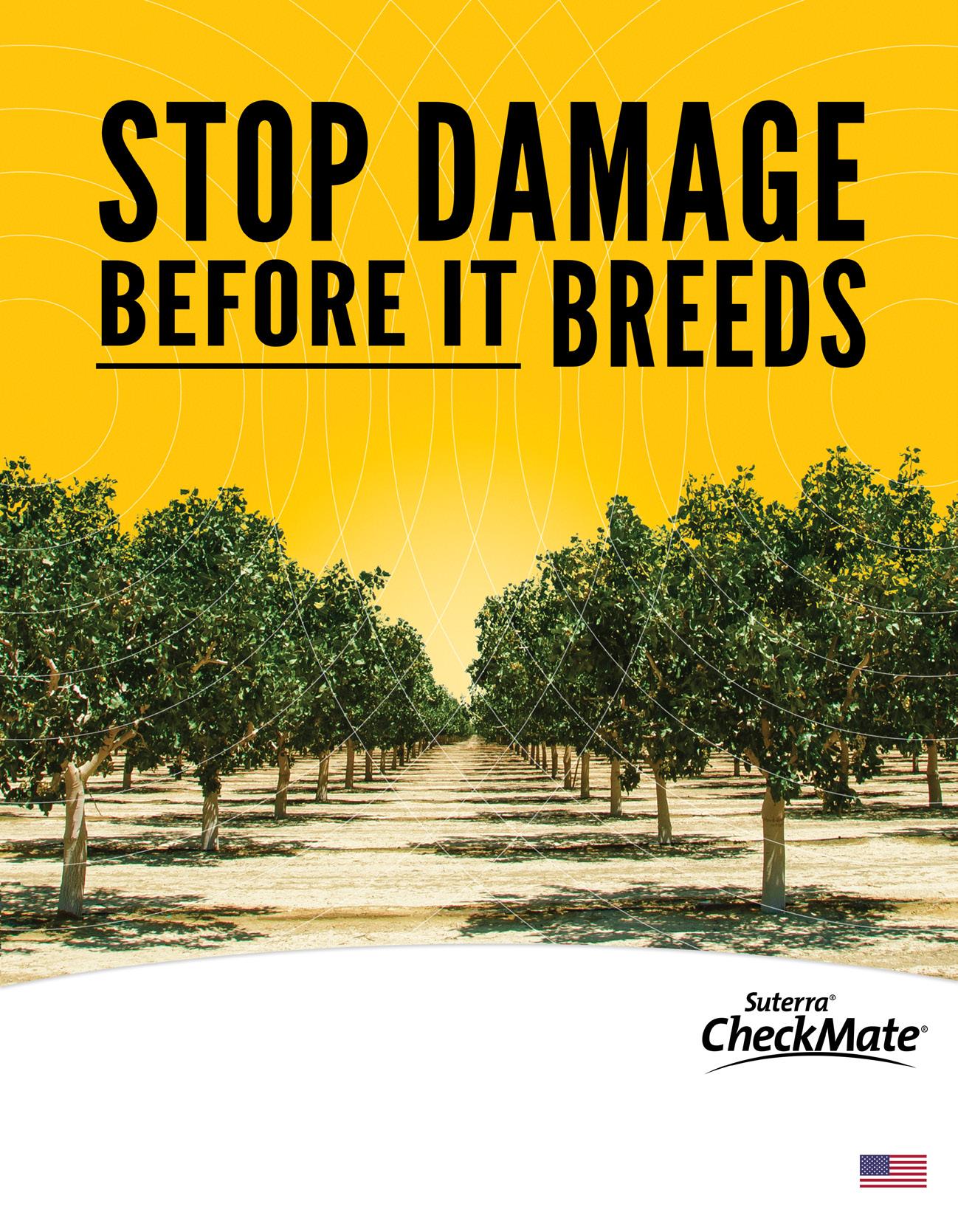

 BY REAL CALIFORNIANS
BY REAL CALIFORNIANS





 By VICKY BOYD | Contributing Writer
By VICKY BOYD | Contributing Writer



























 By FRANZ NIEDERHOLZER | UCCE Orchard Systems Advisor, Colusa, Sutter and Yuba Counties
By FRANZ NIEDERHOLZER | UCCE Orchard Systems Advisor, Colusa, Sutter and Yuba Counties
























 Photos of some aggressive pathogens and pests that cause replant impacts. Includes Phytophthora root rot (top left, photo courtesy UC IPM), oak root fungus or Armillaria mellea root rot (bottom-left, photo courtesy UC IPM) and Verticillium wilt (right, photo courtesy Almond Doctor.)
UC ANR rootstock comparison chart.
Scan to discover how easy fighting nematodes can be.
An ultra safe and e ective pesticide meeting growers’ and nature’s needs.
Photos of some aggressive pathogens and pests that cause replant impacts. Includes Phytophthora root rot (top left, photo courtesy UC IPM), oak root fungus or Armillaria mellea root rot (bottom-left, photo courtesy UC IPM) and Verticillium wilt (right, photo courtesy Almond Doctor.)
UC ANR rootstock comparison chart.
Scan to discover how easy fighting nematodes can be.
An ultra safe and e ective pesticide meeting growers’ and nature’s needs.




 Almond trees on Guardian rootstock planted at same time in fumigated (left) and non-fumigated (right) soils in orchard with suspected presence of Prunus replant disease (photos by C. Zuber.)
Almond trees on Guardian rootstock planted at same time in fumigated (left) and non-fumigated (right) soils in orchard with suspected presence of Prunus replant disease (photos by C. Zuber.)

















 By CECILIA PARSONS | Associate Editor
By CECILIA PARSONS | Associate Editor


























 Traditional sorters or hand sorting tend to have a greater loss of good product from the removal process compared to deep AI which focuses on the foreign material reducing the amount of collateral.
Traditional sorters or hand sorting tend to have a greater loss of good product from the removal process compared to deep AI which focuses on the foreign material reducing the amount of collateral.










 By MITCH LIES | Contributing Writer
By MITCH LIES | Contributing Writer




































































































 Smart probe
Smart probe

 By CECILIA
Associate Editor
By CECILIA
Associate Editor

























 By CECILIA PARSONS | Associate Editor
By CECILIA PARSONS | Associate Editor














 By CATHERINE MERLO | Contributing Writer
By CATHERINE MERLO | Contributing Writer









 The pistachio industry recommends continuing the federal crop insurance program and raising the Adjusted Gross Income and payment limitations (photo by C. Merlo.)
The pistachio industry recommends continuing the federal crop insurance program and raising the Adjusted Gross Income and payment limitations (photo by C. Merlo.)







 UC Davis’ Helen Dahlke has researched the impact groundwater or winter recharge has on nitrate leaching and nitrogen cycling in soil, mainly in the root zone (photo by H. Dahlke.)
UC Davis’ Helen Dahlke has researched the impact groundwater or winter recharge has on nitrate leaching and nitrogen cycling in soil, mainly in the root zone (photo by H. Dahlke.)


 ContinuedfromPage57
Almonds are more challenging for groundwater recharge because they come out of dormancy sooner than other nut crops, and there could be tree loss if they’re flooded (photo by H. Dahlke.)
ContinuedfromPage57
Almonds are more challenging for groundwater recharge because they come out of dormancy sooner than other nut crops, and there could be tree loss if they’re flooded (photo by H. Dahlke.)

















































 By ERYN WINGATE | CCA, Tri-Tech Ag Products, Inc.
By ERYN WINGATE | CCA, Tri-Tech Ag Products, Inc.












 By REBECCA SCOTT | J.D., Partner, JWAGronomics, LLC
By REBECCA SCOTT | J.D., Partner, JWAGronomics, LLC





































